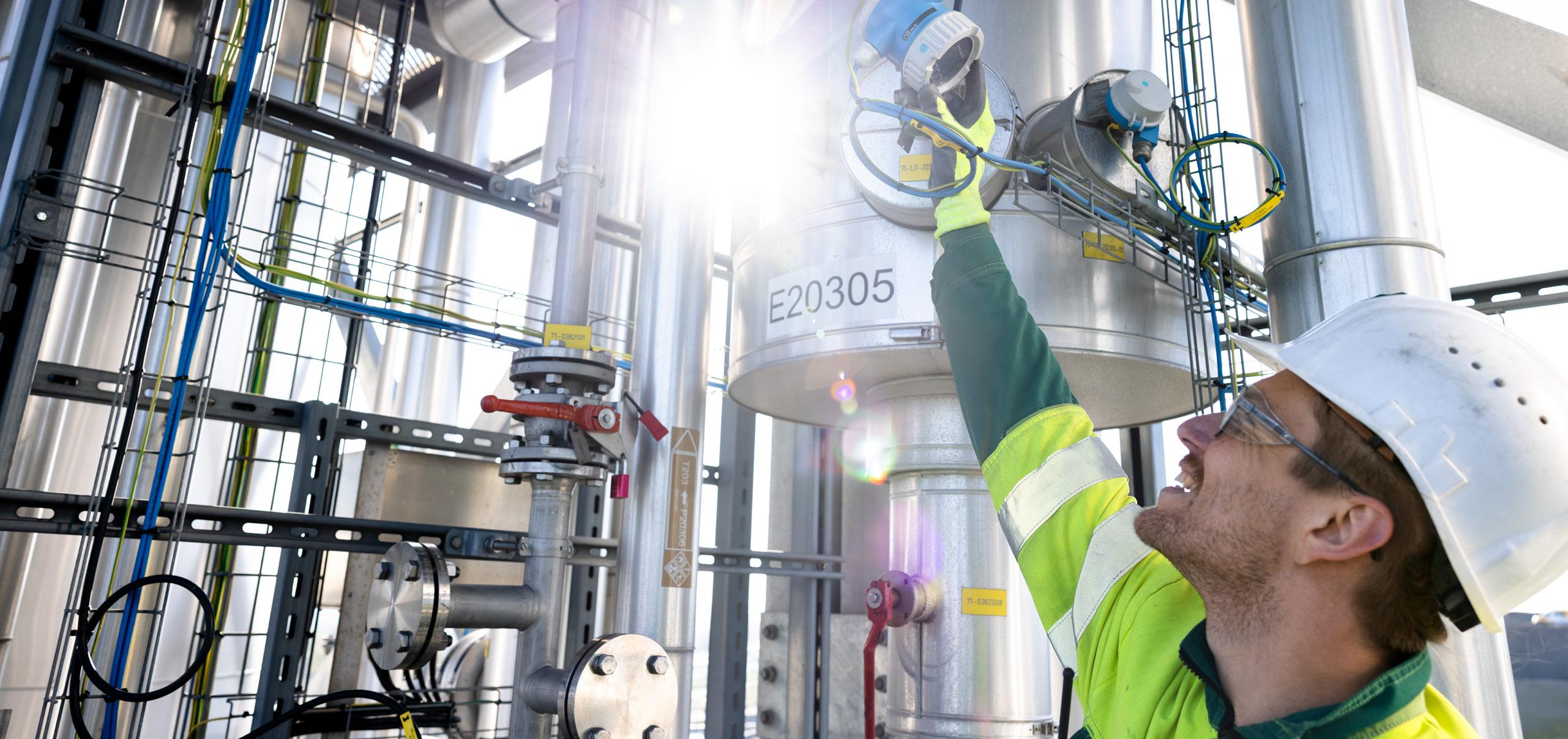

Waste management with a circular vision
Message from our CEO
Dear reader,
Indaver was founded 40 years ago out of necessity: a sustainable solution was needed for the chemical waste from Antwerp industry and later for the non-hazardous waste from residential households. This is a role that we have fulfilled completely. Now, we are active in 9 countries and have grown into one of the largest players in Europe for the treatment of multiple and complex waste streams.
From the very beginning, we have always focused on value creation from waste. We do this by recovering materials and energy from the waste, and also by keeping material cycles clean. That dual role is more relevant today than ever.
Driving the circular economy together
Europe is facing several crises, with significant environmental and social impacts, from climate change to the raw materials and energy crisis.
There is only one possible way forward: we urgently need to adapt our consumption and production patterns and accelerate the transition to a circular economy. To help achieve this, Indaver further specialises in optimal value creation from waste.
First, we are becoming more and more technically adept at recovering valuable raw materials from waste, whether it is solvent waste, complex plastics, organic waste, bottom ashes, chemical liquids or other streams. Our goal is to recover raw materials with an everincreasing value (e.g. ruthenium and palladium) that our economy explicitly needs. In this way, Indaver is broadening its role from waste management to the management of materials. At the same time, we remain fully committed to efficient energy recovery, while we keep on looking ahead for the next opportunity, such as useful applications for CO2.
In many areas, Indaver safely closes cycles. This also means that we keep those cycles clean, including with sustainable and effective solutions for Substances of Very High Concern.
Unique culture, unique momentum
We will continue on the same path. For instance, we have many leading projects in the pipeline for the coming years, which you will encounter throughout this report. But Indaver’s real strength lies in the numerous incremental improvement projects that are continuously going on behind the scenes. In 2024, for example, we registered almost 300 of these projects, each time raising the bar a little higher for ourselves.
“Our motto: leading in sustainable waste management is more relevant than ever. What we achieve together has enormous social added value today and tomorrow. And we do that with a good dose of pragmatism.”
This determination to take on our social role and to excel in it has characterised Indaver’s approach since our early years. Our people
work and breathe this determination, it infuses everything they do. For many, in fact, it is the reason why they work for Indaver. Such a culture is priceless. As the new CEO, I can only be grateful for this and I will do everything I can to further expand Indaver’s positive contribution to society and to the environment.
As long as society generates waste, someone has to roll up their sleeves and tackle it with vision and decisiveness. We gladly answer this call together with our partners. Enjoy reading.
Karl Huts, CEO

6 takeaways from 2024
If we want to summarise our work in 2024, we can do so in just four words: responding smartly to changes. This applies, in the first place, to our external environment. For example, a lot of (re)new(ed) legislation came into effect that had a direct impact on our organisation. But it is also about a tight labour market in some regions, a growing ecological awareness in society, and a turbulent economic climate. In addition, there were changes in our internal environment. For example, 2024 was the year in which we fully embraced our subsidiaries, Dranco and Inopsys, in which we made great strides in the field of digitisation, and in which we welcomed a raft of new talent.
You can discover how Indaver is also making progress from responding to change in this sustainability report. These 6 key takeaways will help you quickly find your way to relevant chapters.


#1 Collaboration
#2 Responsibility
We firmly believe that we can move forward together
The collaborations we entered into and continued in 2024 took various forms. Within Indaver, our business lines and units work together optimally to unburden customers as much as possible. Beyond Indaver, there are numerous external collaborations underway. A few examples: we joined forces with players from other sectors in the strategically important FOSTER project; we explored the future of solvent recycling together with research institutions; we organised customer events to keep the lines of communication open; we supported competitors to guarantee continuity at all times for our customers.
We embrace our social role
We do this by minimising the impact on people and the environment in all of our activities, but also by devising innovative solutions for new or complex waste streams. An excellent example is our approach to Substances of Very High Concern, for which we offer a suitable solution to what is a growing social problem. For example, we effectively destroy c. 668,000 kg of PFAS annually at our site in Antwerp (Belgium).
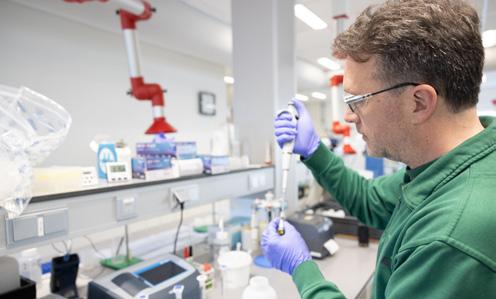
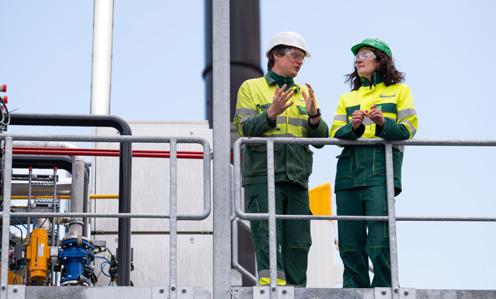
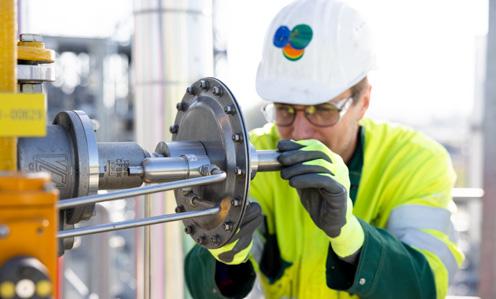

#3 Innovation
We push beyond our comfort zone every day
Innovation is the key to progress and we live up to that across all areas of our operations. We practice strategic innovation, such as Indanova for MSW Belgium and Cornerstones for IWS, which makes us an innovative project partner. We practice process innovation, such as tailormade AI solutions for quality checks in the sorting of plastics. We practice product innovation, such as transforming waste streams into products that the market demands. We practice technological innovation, such as our research into carbon capture, storage and reuse. Whatever type of innovation it is, our golden rule is that it must always contribute to one of the three Ds: decarbonisation, digitalisation, diversification.
#4 Customer Focus We always think and plan alongside our customers
Indaver closely monitors all relevant legislation and responds proactively, but we do much more than that. Indaver takes on its customers’ burdens by offering the necessary expertise, experience and scale, to responsibly manage their waste processing. In doing so, we always start from our ambition to close cycles with a systemic approach. It is an ambition that we fulfil with an open mind. For example, we explicitly seek out and invest in technologies that can better serve our customers and we look beyond our core activities and our own sector in this willingness to invest. A good example is our multifaceted total waste treatments: we can both transform packaging materials into ready-to-use r-styrene and we can upgrade leftover bottom ashes for new and useful applications.
#5 Agility We adjust our sails but stay the course
Change inevitably brings uncertainty. And uncertainty forces us to respond quickly, so that we can capitalise on the right opportunities and tackle the necessary challenges. This has always been Indaver’s approach to change. Thanks to our highly motivated team, into which we welcomed 400 new employees in 2024, we have proven ourselves to be particularly agile. In 2024, we encountered volatile energy prices, new waste streams, legal uncertainty ... and we didn’t let ourselves get knocked off course. On the contrary, we ended the year with healthy financial results and we are continuing to invest in projects that accelerate the circular transition.
#6 Entrepreneurship We make a positive impact
Our core activities limit the impact of waste on people, climate and the environment, but we are also fully committed to positive impact. Indaver supplies carbon-free heat to the world’s largest malting plant (Belgium) via the Antwerp North Heat Network (WAN). We are looking at how we can supply the Essex region (UK) with green electricity from the Rivenhall site. We are producing more and more useful organic product flows from organic waste (the Netherlands). We are creating greater support for the circular economy in the Hamburg region (Germany). We are focusing on hydrogen production in Meath (Ireland) to make the energy system more sustainable. Positive action delivers positive impact.
Indaver inside out
Indaver has been a leader in sustainable waste management since 1985. We are convinced that value creation from waste is essential to guarantee prosperity and well-being in the Europe of tomorrow.
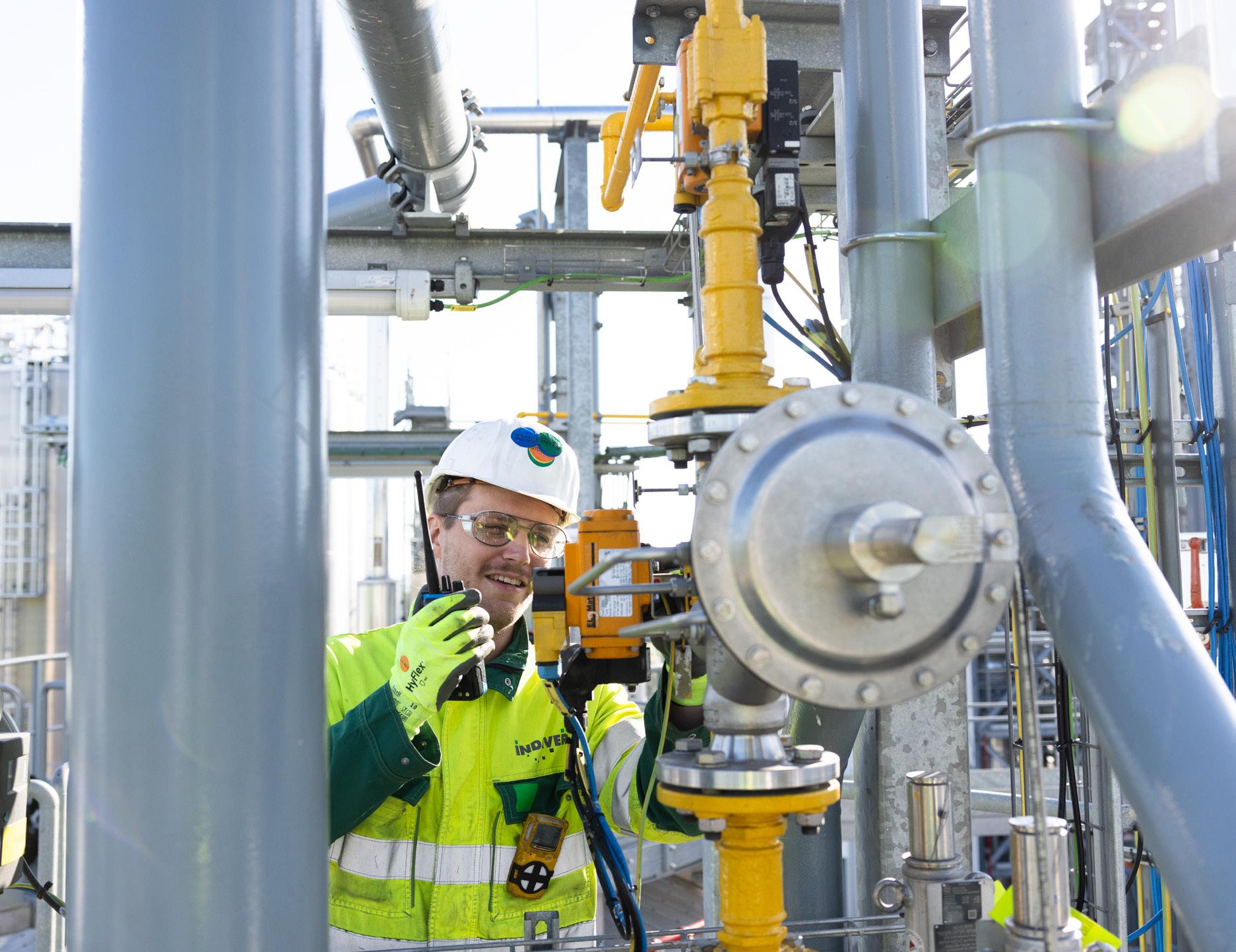
Indaver in figures
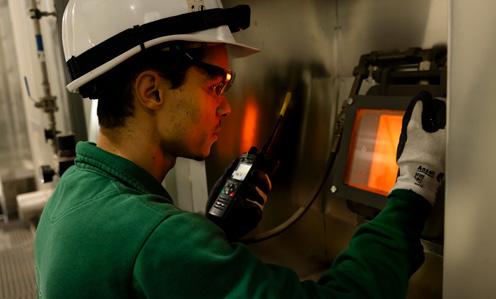
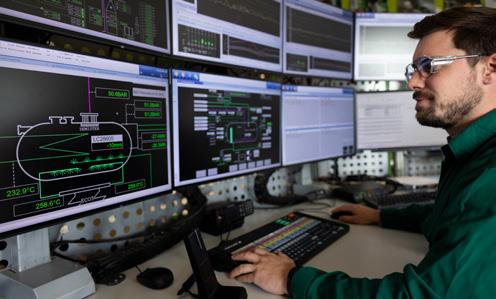
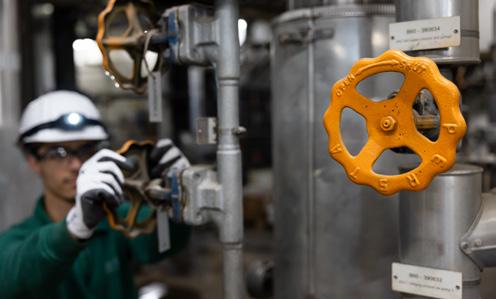
Our employees
2,306 colleagues signing up for a circular economy
Our activities
9 countries with facilities for value creation from waste
5 core values that shape our culture
5.6 million tonnes of waste managed and treated in 2024
Our business Governments and major industry as key partners in Europe
EBITDA €161 million as a sign of our strong financials
Volumes under management
In 2024, Indaver had 5.6 million tonnes of waste under management. Of this, 4.6 million tonnes were processed in our own installations and 1 million tonnes at third parties’ installations.
Our
sustainable
mission: value creation from waste
As a leading organisation in sustainable waste management, Indaver aims to make an active contribution to the realisation of a carbonneutral, environmentally sustainable and circular European economy, without pollutants, by 2050, in line with the EU’s sustainability and climate ambitions.
More specifically, our societal role focuses on the efficient recovery of high-quality materials and energy, and on protecting our ecosystems and material cycles from harmful substances.
Tackling the triple planetary crisis through waste management
Our ecosystems are currently under pressure from three closely related crises: climate change, biodiversity loss, pollution. With our linear production and consumption systems,
we simply do not succeed in meeting the current needs for food, housing and mobility without threatening the opportunities of future generations.
We urgently need to rethink technologies, production processes, consumption patterns and our way of living. Indaver is ideally placed to actively contribute to a fundamentally reimagined and revised system. This is, after all, what we do every day with our circular mission.
A circular economy can relieve pressure on our ecosystems and set up sustainable materials and energy management.
By recovering high-quality materials and energy from waste and protecting our ecosystems, Indaver offers a much-needed answer to some of the biggest challenges facing Europe, such as material scarcity, energy dependence, climate change and environmental pollution.

How Indaver creates value from waste streams
Indaver is both an enabler and a gatekeeper within the circular economy. Enabler because we extend chains, gatekeeper because we keep chains safe. In practice, it looks like this:
Our focus is on keeping the cycle safe. Using innovative techniques we can recover energy and valuable molecules from waste streams with a low circular potential.
Enabler: recovering and supplying raw materials
Every year, humans use up twice as many natural resources as the Earth can regenerate. That means we are depleting nature. In addition, Europe is too dependent on the rest of the world for the supply of materials needed to meet our climate and sustainability goals. Through sustainable waste management, Indaver is helping to turn the tide.
As an enabler, we guarantee that waste streams with a high circular potential (i.e. high value, low pollution) receive the appropriate treatment. In doing so, we are not only focusing on recycling and recovery of materials but also exploring other R strategies, such as reuse.

Strengthening customer relationships
The broadening of our role with material management fits perfectly with the wishes and needs of our customers: by working closely together, we can support them in using fewer resources and/or reusing materials when possible.
In Willebroek, Indaver sorts PMD waste into 16 different pure material streams.
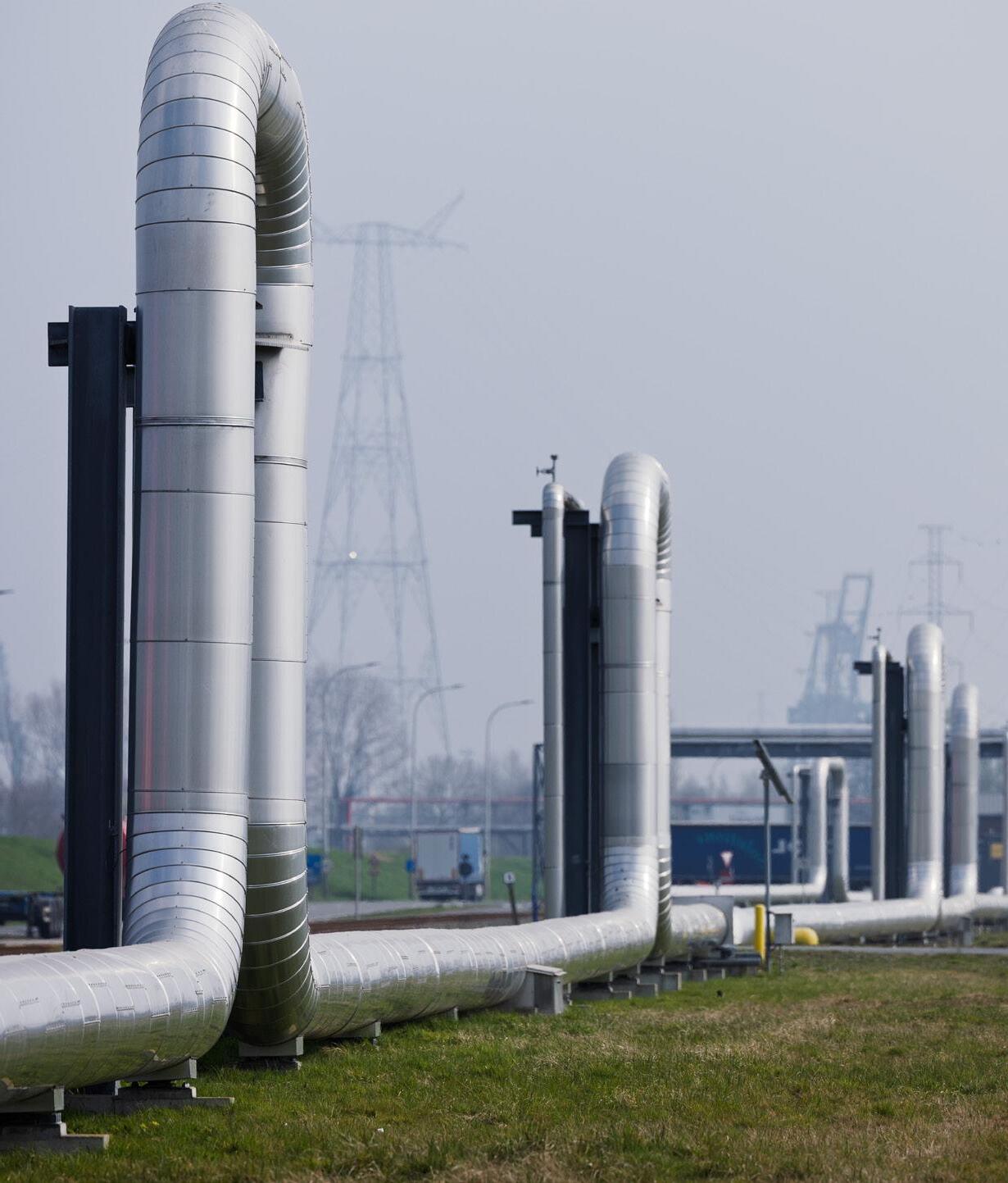
Enabler: generating and supplying energy
Few subjects are as important to the future of our planet as energy. We all need to use less energy, while the energy we do consume must come from sustainable sources. This is the only way we can reduce the use of polluting fossil fuels. This revolution is also necessary to combat Europe’s energy dependence.
Indaver plays a significant role in this. Our installations produce energy from the waste treatment process. We use that energy ourselves at our sites in the form of steam and electricity, and we also supply heat, steam, electricity and green gas to companies and residential areas via designated networks.
Gatekeeper: protecting people and the environment
To keep the circular economy running, we need to remove pollutants from the chain. These are dangerous or other undesirable fractions such as heavy metals, Substances of Very High Concern, asbestos and high-risk medical waste.
Indaver guarantees safe solutions. Depending on the type of waste, we either destroy the unwanted fractions at a high temperature or neutralise the hazardous components. The unavoidable residual fractions – which are becoming smaller and smaller thanks to our continuous improvements – are stored in our specially equipped landfills, always in line with the strict standards in force.
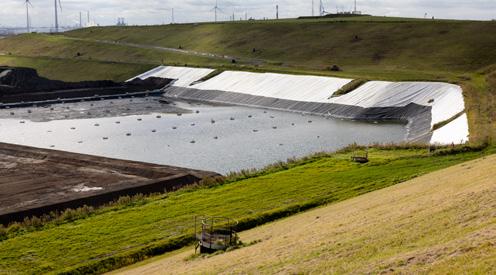
The ECLUSE steam network supplies sustainable steam to other companies from our site in Doel.
Landfills play a crucial role in safely and sustainably storing unwanted fractions.
Driven by 5 core values
In achieving our mission, we consistently adhere to five core values that reflect what Indaver truly cares about. These values have been the same for 40 years, but our growth proves that they are still very relevant. All our employees, customers, partners and other stakeholders can expect this from us:
With constant vigilance for people, safety and the environment
In mutual trust With a consistent focus on results
With openness in word and deed With a focus on continuous improvement
Our ambitions and how we achieve them
Indaver wants to remain a leader in sustainable waste management and close material cycles in the safest, most effective and most CO2- and energy-efficient way. This is how we will make a maximum contribution to Europe’s climate and sustainability ambitions.
To achieve these ambitions, we use a strategy that comprises three pillars:
Pillar 1: Making progress in ESG
Our first pillar focuses on Environmental, Social, and Governance (ESG). This well-known concept provides a framework for concrete implementation of sustainability in our own operations and value chain. ESG is also the cornerstone of CSRD (Corporate Sustainability Reporting Directive) reporting and is now well-established among the general public.
By formulating objectives, implementing best practices, accurately measuring and reporting on our progress, we can contribute effectively to a cleaner, circular and just society.
How do we strategically progress in ESG?
Our ambition is to continuously improve for E, S and G and to raise the bar for ourselves. For example, we are currently drawing up a company-wide decarbonisation plan (Environmental), we actively support our employees to remain sustainably employable (Social), and we are increasing our focus on the screening of our suppliers (Governance).
All of our goals and associated initiatives can be found in this report: Environmental chapter, Social chapter, and Governance chapter.
Pillar 2: Sustainable growth and investment
Our second pillar concerns the ambition to strengthen our essential role in society. We do this by continuously improving our processes, technologies and installations. This allows us to take an important dual approach to waste processing: we are committed to recovering more and more highquality materials and energy from waste, and we keep ecological and material chains clean through decontamination.
How do we grow and invest strategically?
Our power for change comes from a clear vision: waste is a valuable source of materials and energy that must be managed sustainably. Through strategies like innovative technologies for molecular recycling and new business models we want to extract even more value from waste than we already do today.

In our Plastics2Chemicals (P2C) demo plant, we turn end-of-life plastics into new primary materials.
Investing in our existing installations
We are continuously improving our existing installations to recover even more valuable materials from waste. We proved this in 2024 by, for example, recovering raw materials through ash treatment and by extracting even more useful organic material from our composting plants. These are materials that the industry specifically requests.
In addition, we continue to invest in our Wasteto-Energy facilities and high-temperature incineration. These will remain crucial technologies in the future circular economy because these are the means by which we extract energy from non-recyclable waste and destroy hazardous components to keep the materials cycle clean.
Our landfills also remain useful for better material and energy recovery. Non-recyclable harmful materials need a ‘safe sink’ after processing, to protect our ecosystems. For some materials, the landfill will be their final destination. For others, it will be a temporary repository until new recycling technologies become available, affordable and reliable. And at the end of their life, landfills can become renewable energy hubs, as we are doing in Antwerp (Belgium) by putting solar panels in place.
Investing in new installations and partnerships for material recovery
Through molecular recycling, advanced technological innovation and industrial collaboration, waste streams that have a low circular potential today can have a high circular potential tomorrow. These are our focus areas.
For example, we are investing in an installation that can convert plastic packaging waste into high-quality products with the same functionality as virgin material – something that is not possible with current commercially available recycling techniques. We are always looking at how we can bring companies into contact with one other, so that we can achieve economies of scale, strategically site an installation (e.g. near partners) and optimally supply the materials to partners (e.g. via a pipeline).

Investing in new business models
In addition to technological innovation, a circular economy also implies changes in the way we do business. In short: we want to evolve from a waste manager to a material manager. That will require a change of perspective. By offering new services to our customers or taking on different roles, we can better leverage our knowledge and contacts and create more value from the same volume of waste, while at the same time improving our customers’ carbon footprint.
Investing in synergies between installations
If we are aiming for a higher quality of recycled products, we will need to remove more contamination from the original waste streams and often we will also need to treat the recovered products further before they can serve as new feedstock. Indaver offers a solution for the residual fractions that are created during these processes. By effectively neutralising (or storing) the harmful and sensitive components in specialised installations, we keep material chains clean.
In other words, these purifying plants play a crucial role in the success of our installations that focus primarily on material extraction. They also recover a lot of clean energy that we can use for our own operations and distribute externally.
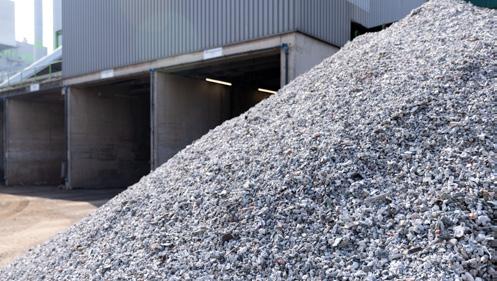
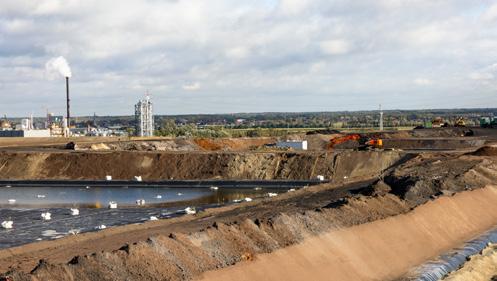
The treatment of end-of-life plastics results in feedstock for Plastics2Chemicals.
Thanks to our advanced ash treatment, we recover materials from thermically treated waste.
Landfills offer a safe solution for the storage of residual fractions from recycling processes.
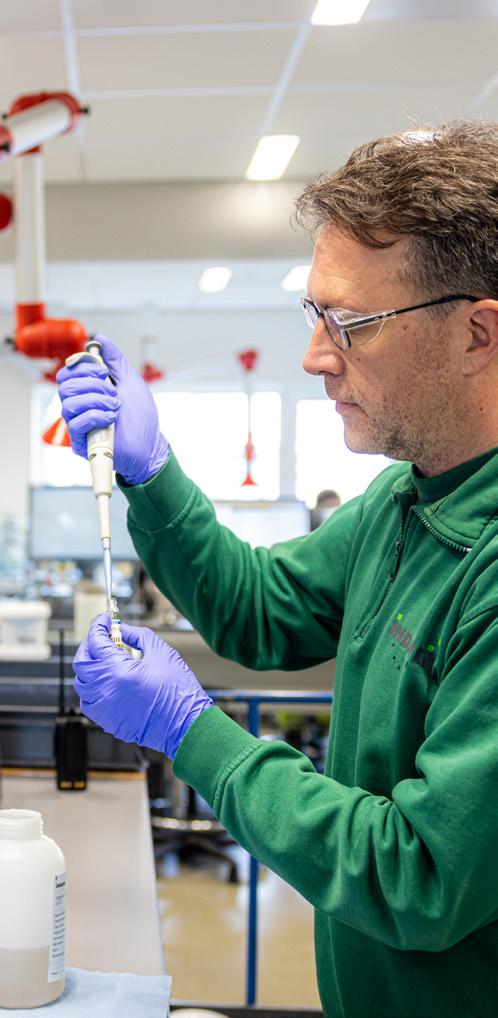
Pillar 3: Innovate
Our third pillar focuses on innovation. We see innovation as the engine for evolving from waste manager and recycler to a material manager offering tailormade total solutions that respect and support people and the environment.
How do we innovate strategically?
At the beginning of 2025, Indaver launched its renewed innovation strategy that revolves around three guiding principles: decarbonisation, digitalisation and diversification.
Digitalisation
In order to close material cycles in a safe, sustainable and efficient way, society must be able to track and trace material flows. Digitalisation will play a key role in this. Product passports, digital twins and other traceability tools will not only improve the sustainability of material processing but also increase the transparency of the chain for all stakeholders.
Digitalisation is a means by which to improve the efficiency and performance of our operations. For example, AI-based process control can improve our waste sorting, while AI-based search systems can streamline the procurement of raw materials.
Digitalisation in action: quality checks with AI
In Willebroek (Belgium), Indaver mechanically sorts PMD waste from local authorities and companies. Every hour, around 1 million objects are divided into 16 pure fractions, ready for recycling into new applications. Since 2024, we have been using AI to optimise the quality control of the sorting process. This gives us these advantages:
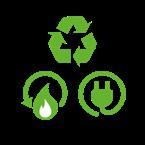
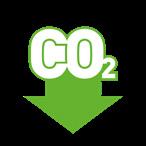
No more labour-intensive random checks. Higher statistical relevance (because each object is characterised). Fast process adjustment is possible.
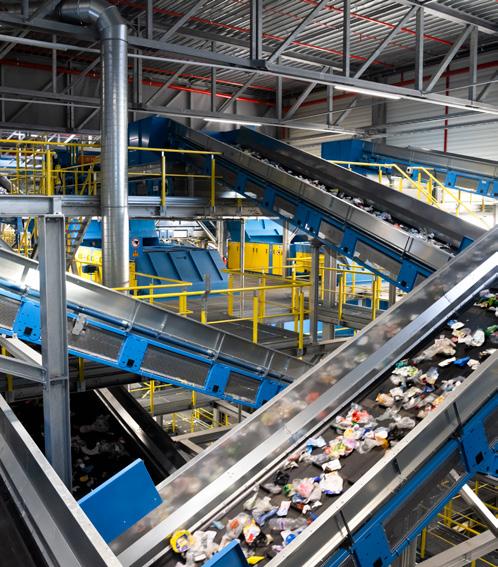
Decarbonisation
Within our Carbon Management Plan (see p. 46), both recovered energy and carbon capture and utilisation are important.
The energy we extract from the residual heat from our incineration plants ensures that the industrial companies and municipalities to which we supply energy no longer need coal- or gas-fired power stations for their heat, process steam or electricity. This helps to avoid emissions and thus contribute to the decarbonisation of society.
Carbon capture and utilisation are likely to grow in importance in the coming decades. Whether Indaver invests in this for the greenhouse gases that are inevitable in responsible material management depends not only on our own willingness to invest, but also on external factors such as the availability of infrastructure and storage capacity.
Decarbonisation in action: converting landfills into solar farms
At the end of 2024, Indaver received a permit for the construction of a Solar Park on the flanks of the landfills in Antwerp and Hooge Maey (Belgium). This Solar Park is the final piece of a broader energy cluster to make the energy consumption of Indaver and Antwerp’s major industry more sustainable. More info on p. 69.
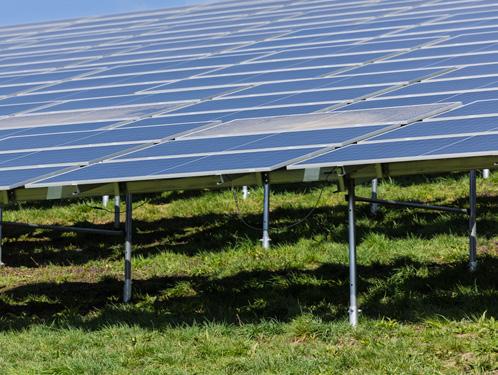
Diversification
Access to critical raw materials, the production of bio-based materials, the phasing out of Substances of Very High Concern and the sustainable management of materials are central to the European government agenda. These are strategic innovation areas to make both the European Green Deal and the Clean Industrial Deal a success. Indaver wants to contribute to their implementation, e.g. through our PFAS approach (see p. 76) and the processing of organic waste into feedstock for bio-based materials.
Diversification in action: better recovery of precious metals
From more than 6,000 tonnes of liquid waste that would otherwise end up in the incinerator, Indaver has already recovered +2,500 kg of palladium and platinum, as well as +250 kg of ruthenium. In addition, the team has now developed extraction solutions for streams containing rhodium and iridium, two high-performance metals. More info on p. 62.

Our specialised business lines and units
To put our 5 core values into practice, we rely on our specialised business lines and units. They all work to the same circular vision, but do so in a very targeted way for certain groups and/or areas of work. Good to know: the business lines and units are supported by central and regional shared services.
Industrial Waste Services (IWS)
What does IWS do?
Business lines and units Target audience Region
Industrial Waste Services (IWS) Industry International
Municipal Solid Waste (MSW) Public and private sector
Belgium, Netherlands, Ireland, United Kingdom
Plastics2Chemicals (P2C) Industry International
Indaver Separation Technologies (IST) Industry
Belgium, the Netherlands and France
IWS is the European total partner for value creation from industrial waste. The business line focuses on the safe processing and disposal of complex, hazardous or sensitive waste streams with its Total Waste Management services. At the same time, IWS is fully committed to the recovery of materials and energy from the same industrial streams.
IWS actively ensures the recovered materials find their way back to the industry, which means we contribute to a more circular economy.

To which industries does IWS offer its services?




How does IWS make a difference?
Broad expertise Waste is becoming more and more complex, as is the composition of the various contaminants that waste contains. This means that we must continuously optimise and supplement our solutions. A recent addition to our IWS portfolio was, for example, the acquisition of the scale-up Inopsys. This allows us to offer customers not only large-scale but also on-site solutions to purify complex and toxic wastewater and to recover valuable components from it.
Indaver receives liquid waste streams from the industry for thermal treatment in its rotary kilns.
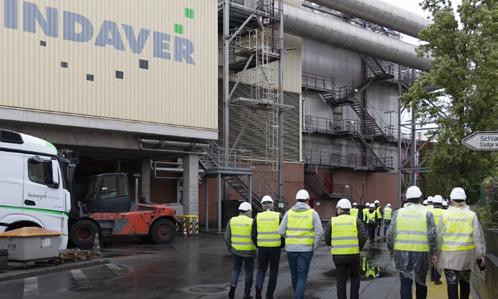
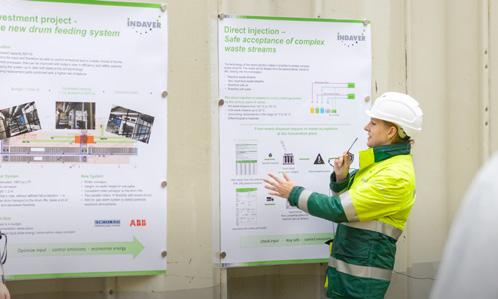
Strong reliability
Our customers know that we always offer the best solutions in terms of technology, safety, cost and environmental compliance. And they know that we guarantee continuity through our own installations and collaborations with third parties. The trust we enjoy so much resulted in the renewal of large contracts in 2024. For example, in Ireland, we started the second and most challenging phase of a large remediation project for a pharmaceutical company.
Circular vision
In the spotlight: more attention for (international) logistics
We continue to invest in increasing our ability to recover a greater amount of valuable components from complex waste. Think of how Inda-MP recovered more palladium, platinum, rhodium and ruthenium for reuse in 2024. We also continue to invest heavily in the sustainable and safe processing of industrial, complex and/or hazardous waste, e.g. in Hamburg and Biebesheim (Germany) and in Antwerp (Belgium). This is how we keep the circular economy clean and safe. “ De IWS Cornerstonneses weerspiegelen het kader waarop IWS inzet om maximaal in te spelen op de noden van haar klanten. In dezelfde lijn herbekeken we ook het businessmodel en werkten we algemene strategische doelstellingen uit. Onze klantenfocus, diensten en
Demand for our logistics services is increasing strongly, partly due to the growing IWS activities in Ireland. Ireland has a limited number of treatment facilities, so we transport waste to facilities in the rest of Western Europe. Our German installations are also being used more to serve international customers. To manage these logistical tasks, we implemented a number of efficiency measures in 2024 that allow us to make maximum use of Katoen Natie’s fleet.
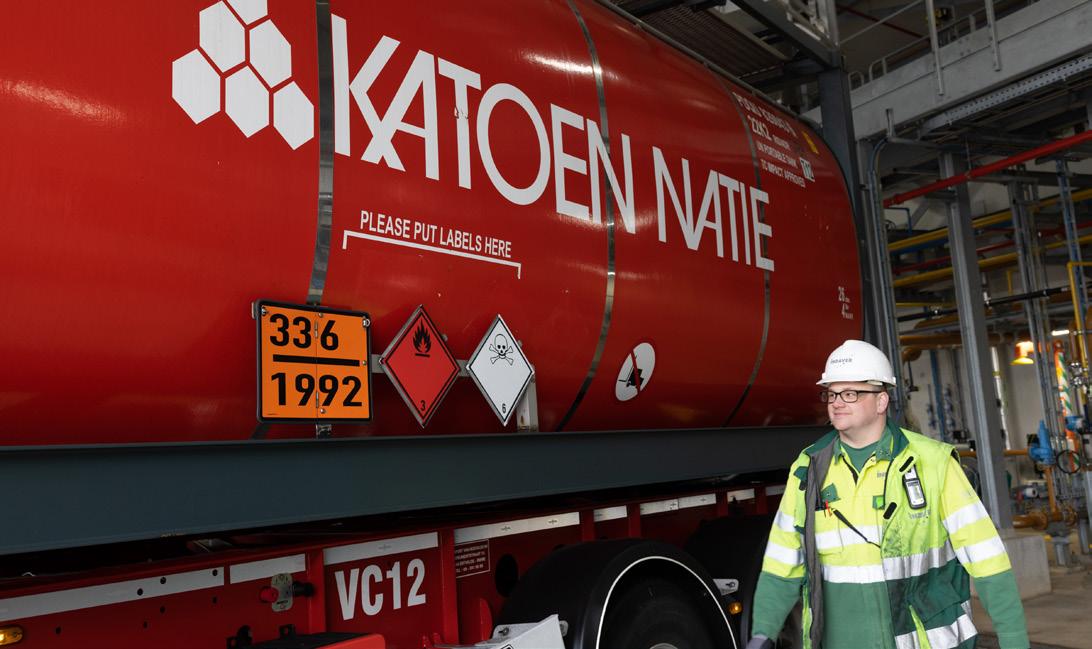
See how ExxonMobil and Schirm GmbH rate the partnership with IWS
What did the business line focus on in 2024?
Customer centricity. That is at the heart of our brand new IWS cornerstones. These cornerstones reflect the ethos and aims of IWS. They show that we continue to respond to the unique but also increasing needs of our customers, Europe’s major industries.
“The IWS Cornerstones reflect the framework within which IWS is committed to responding to the needs of its customers as far as possible. In the same vein, we also reviewed the business model and worked out general strategic objectives. Our customer focus, services and organisation ensure that we can switch quickly in a dynamic market.”
Bart Goethals, General Manager IWS
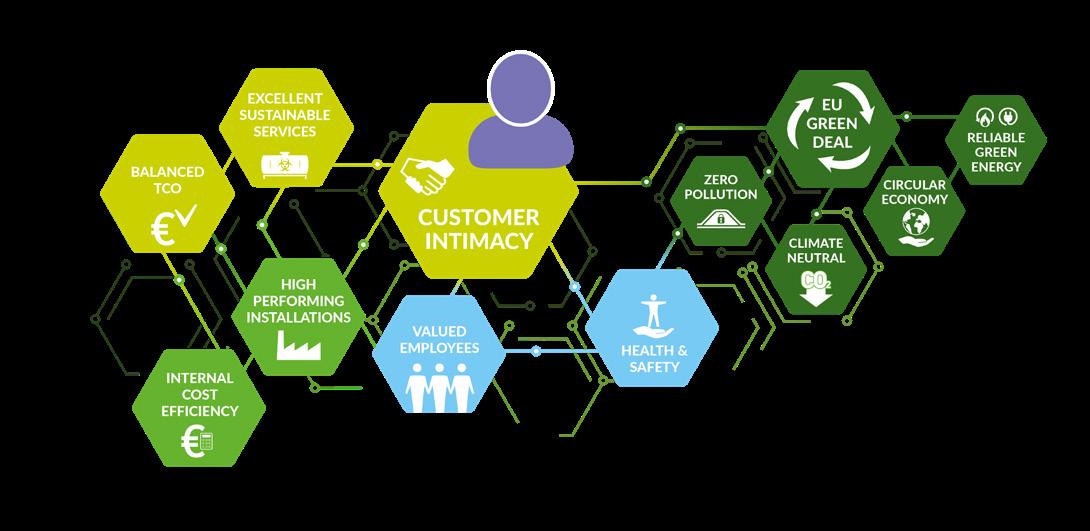
Customer centricity in practice
A striking example of how IWS responds to the individual needs and preferences of our customers is the turnaround project at SABIC in Geleen (the Netherlands). We designed a tailormade total solution for this petrochemical company.
Strategy: SABIC carries out thorough maintenance work – also known as ‘turnarounds’ – at the Chemelot Industrial Park every 6 years. During the works in 2024, the company wanted to permanently decommission the naphtha cracker Olefins 3 to make way for new activities. This decision is in line with the company’s sustainable future strategy.
Approach: For this ambitious project, a real turnaround village was built for the more than 1,500 SABIC employees and contractors. Indaver was appointed for waste management, was involved in the construction of a temporary water treatment plant and also set up a temporary waste park.
This is how we took on the responsibilities of SABIC with Total Waste Management:
waste collection and ADR labelling management of the container park transport
processing largely in our own facilities
Result: within a few weeks we had collected a volume of 2,500 tonnes of waste, 90% of which was hazardous waste. More than 200 transports, 50 solid waste containers and 100 tank containers were used to take the waste to our and other sites for processing.
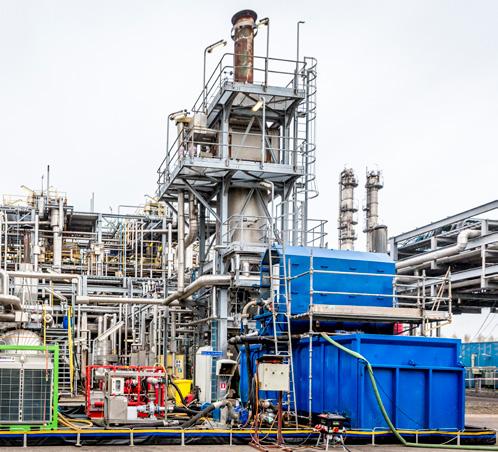
Municipal Solid Waste (MSW)
A look at new key projects in 2024
What does MSW do?
MSW converts recyclable household and commercial waste into new high-quality raw materials. The non-recyclable waste is used to generate sustainable energy for industrial partners and residential areas.
Who does MSW work for?
For collectors and local authorities in Belgium, the Netherlands, the United Kingdom and Ireland.
What did the business line focus on in 2024?
Decisiveness was our key focus in 2024. In a challenging market, in which many governments are considering the future of their waste management and permits are difficult to secure, Indaver is continuing on its chosen path. Our targeted investments are helping us to realise our vision of accelerating the circular economy through waste management and processing.
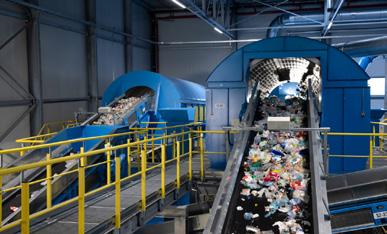
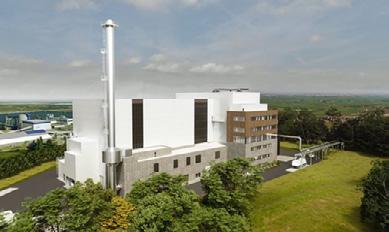
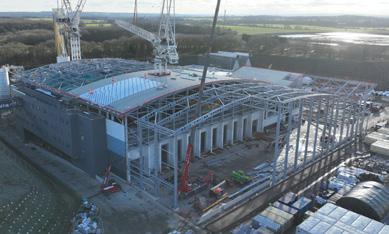
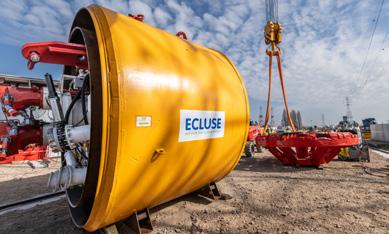

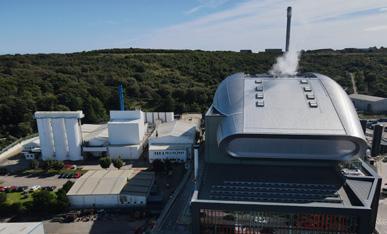
Belgium
Pre-treatment of plastics in Willebroek started
Steam network ECLUSE 2 in Antwerp construction phase
Ireland
Waste-to-Energy plant in Cork permit phase
FOSTER in Ghent construction phase
WAN in Antwerp started
Dranco takeover
Northern Ireland
Belfast Waste-to-Energy plant permit phase
UK
Rivenhall in Essex construction phase
NESS Waste-to-Energy Facility in Aberdeen started
How does MSW make a difference in Belgium?
MSW Belgium offers sustainable, reliable and flexible total solutions for a wide range of waste streams, ranging from residual and packaging waste to bio-organic streams and even wood waste. In addition, customers not only gain access to advanced waste treatment technology, but Indaver also strives for indepth cooperation with public and private partners for the recovery of energy and materials. In order to market this unique approach more effectively, MSW Belgium recently launched its new business model, IndaNova.
“During an event in the restored Handelsbeurs in Antwerp, we showed 150 guests how we put our vision of circular value creation from waste into practice with IndaNova.”
Alain Konings, Director of Sales & Marketing MSW Belgium
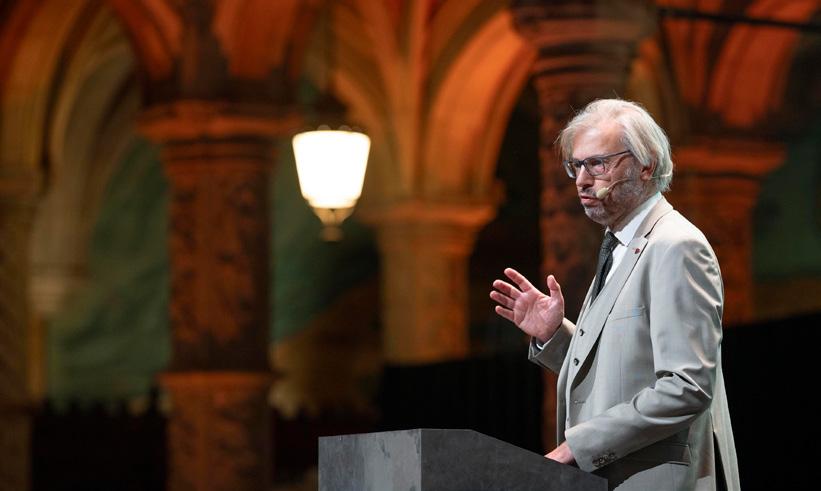
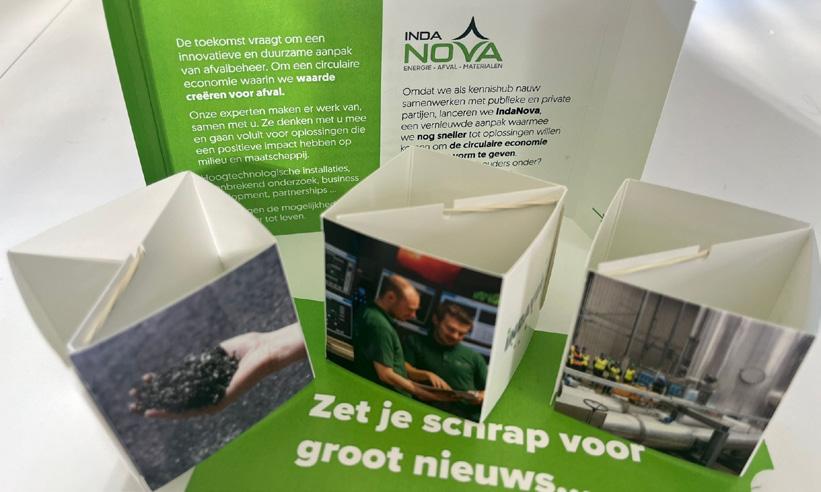
For more info on MSW Belgium, visit our website.
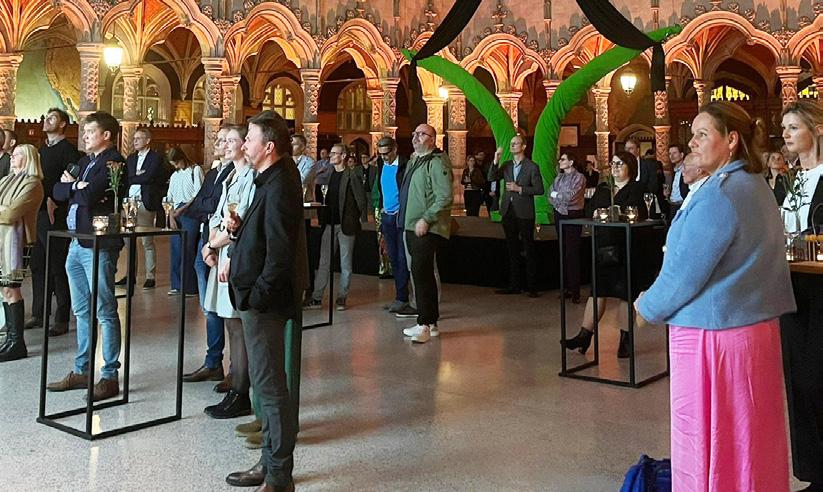
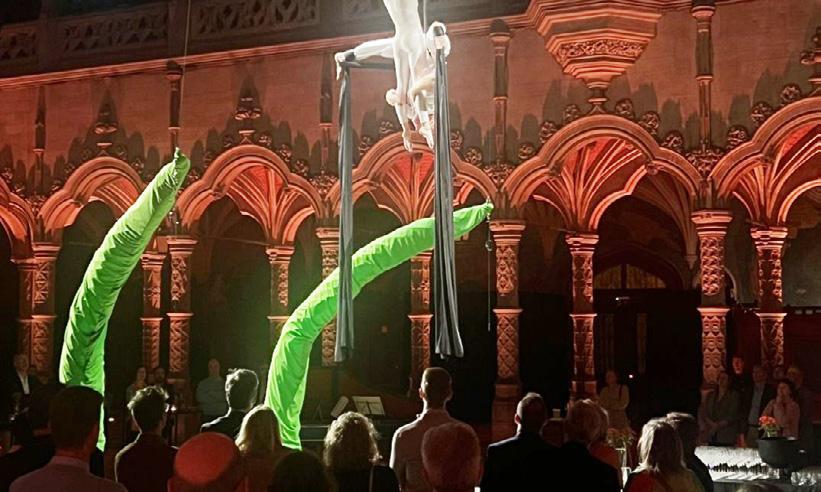
IndaNova in 3 promises
IndaNova stands for an approach that focuses not only on waste but also on the production of circular raw materials and low-carbon energy. This business model will therefore play a key role in achieving the ambitious climate goals for 2050.
#1 With a passion for knowledge-sharing
We are an open and transparent knowledge hub for sustainable waste management – not only internally but also externally. We share our extensive knowledge and experience with students, researchers, industrial partners, governments and other stakeholders. Consider, for example, how MSW Belgium plays an active role in organisations such as Belgian Waste-to-Energy and CEWEP. But we are also participating in feasibility studies on the reuse of plastic food packaging.
#2 Near our network
Indaver brings together organisations from various sectors to achieve ambitious targets. By establishing connections with both public and private parties, Indaver creates a broad network that shapes the circular economy. Strategic collaborations with Port of AntwerpBruges, FINEG, BESIX and Maatschappij Linkerscheldeever, among others, show the power of mutual trust and cooperation.

#3 Always progressive
For the waste streams we process today, we use the most modern techniques and we constantly adapt our installations when there are new, better insights in the technological field. MSW Belgium also invests in technologies and infrastructure for future waste streams. An example: we are preparing for the transition from fluorescent lamps to LED lamps in consultation with management bodies.
Highlights from 2024 (MSW Belgium)
FOSTER: unique public-private partnership
Indaver and BESIX – together FOSTER – have been given the green light for the construction and management of a high-tech sludge incineration plant. It will process two-thirds of the sewage sludge of all domestic wastewater in Flanders – so of 4 million inhabitants. During processing, the installation will extract green energy and bottom ash from the sludge. In a second phase, client Aquafin plans to recover phosphorus from the residues.
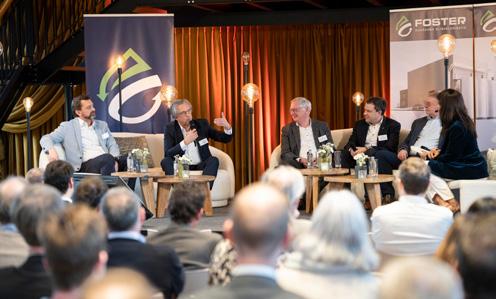
During
ENERGY - WASTE - MATERIALS
ECLUSE 2: challenging expansion of steam network
Through a tunnel under the Scheldt, ECLUSE 2 will transport the recovered energy, in the form of steam, from the Waste-to-Energy plants of Indaver and SLECO to the Evonik company. The tunnel is an essential link in achieving sustainable, circular and climate-neutral chemistry in an industrial symbiosis on both riverbanks.
The benefits of ECLUSE 2:
Less fossil fuels, more renewable energy
Less CO2 emissions
Less nitrogen emissions
Implementation of energy and climate objectives
Less energy loss
“One of the most important reasons we can achieve ECLUSE 2: trust between all partners. And from that trust, we worked together on this project in a very open atmosphere. Together we have overcome difficulties. Everyone has contributed to this.”
Bart Verschueren, Sustainability Manager Energy & Utilities at Evonik
Successful first year for Antwerp North Heat Network (WAN)
The most ambitious heat network in Flanders is running at full speed. The Boortmalt malting plant – which accounts for 90% of the consumption – can thus save the equivalent of the natural gas consumption of 10,000 households. From 2025, a residential network will also be linked to WAN and it will allow schools, public buildings and 3,200 households to heat their homes sustainably.
“Today, we save around 30,000 tonnes of CO2 per year thanks to Indaver’s residual heat. The fact that we could just find the solution in the neighbourhood was an eye-opener.”
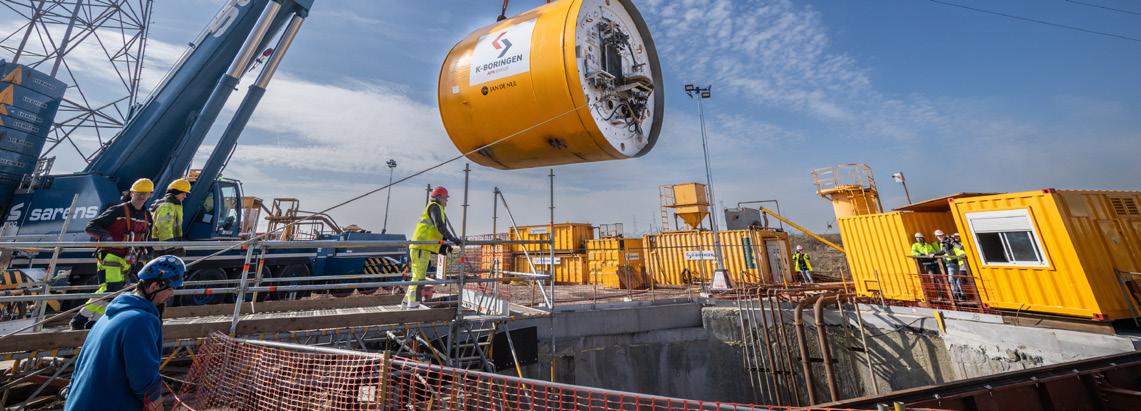
Giovanni Vercammen, Chief Energy & Technology Officer at Boortmalt
Further valorisation of bottom ashes
By carefully washing, sieving and cleaning bottom ashes from our Waste-to-Energy installations, Indaver turns them into raw materials for various applications. In 2024, we took important steps in the further
reprocessing of increasingly high-quality materials from bottom ashes. For example, we have recently started extracting precious metals from the fine fraction of bottom ashes and are close to working together to use recyclate for BENOR-labelled materials.
Taking agility and solidarity to a new level
MSW stands for reliable and flexible service. This will enable us to cope with the larger volumes of PMD waste that will arise as a result of better responses from companies and citizens. But we also prove our reliability and flexibility by assisting competitors in the event of force majeure
For example, in 2024 we processed exceptionally large volumes of waste due to the temporary permit freeze at ISVAG. The contractual overflow from ISVAG to Indaver is 35,000 tonnes per year, but at the end of 2024 we were processing a volume that was twice that amount. We also helped out competitors who were struggling with technical breakdowns due to explosions of nitrous oxide cylinders. And our PMD sorting installation provided continuity during the temporary closure of a competitor.
Arrival of the tunnel drill in Antwerp for the construction of the longest microtunnel in Belgium below the river Scheldt - as an extension of ECLUSE.
How does MSW make a difference in the Netherlands?
In the Netherlands, the focus of our waste and materials management is on two types of waste.
#1 Organic Flow Solutions
In the Netherlands, Indaver processes bioorganic waste into high-quality compost. We do this in four composting facilities for organic waste (Alphen aan den Rijn, Nieuwdorp, Oude Pekela and Rotterdam-Europoort) and six for green waste (Moerdijk, Nieuwdorp, Vagroen Oldekerk, Rijpwetering, Vagroen Groningen and Voorschoten).
With compost of ever-improving quality, we give the soil back its natural nutrients and close the cycle. From the remaining fractions, we then make biomass. In this way, only a small residual fraction ends up in the landfill.
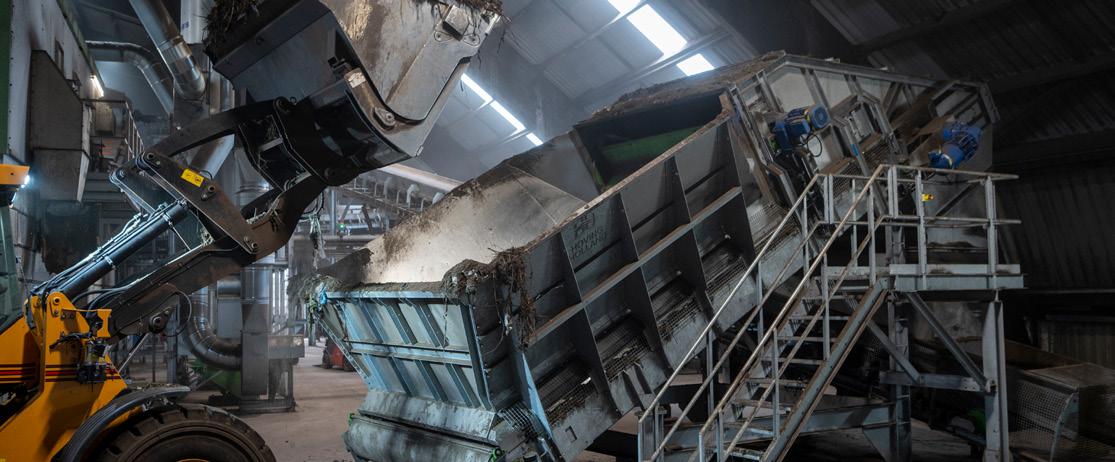
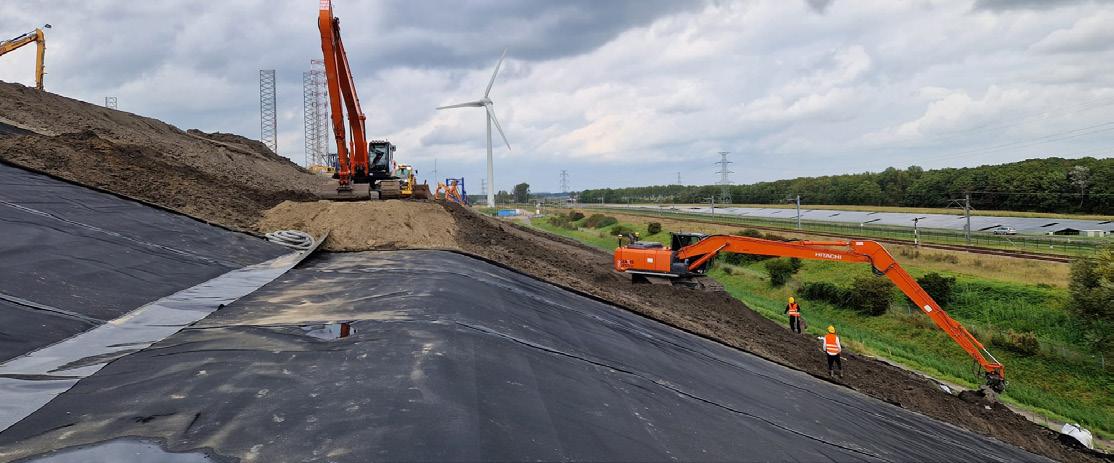
#2 Solutions for non-recyclable and mineral streams
MSW Netherlands stores residual flows that cannot be recycled, reused or incinerated at one of its two operational landfills, Stainkoeln and North and Central Zeeland. Indaver first and foremost ensures that all customers within its working area are assured of a continuous and safe landfill capacity.
In addition to our landfill activities, we clean and supply mineral raw materials within the circular economy. We mediate for our customers between supply and demand in the field of soil, sludge, rubble and other reusable building materials. With our knowledge, extensive network and independent position, we are able to do this in the most efficient and effective way possible. In addition, we have five temporary storage facilities in the Netherlands.
The landfill in North and Central Zeeland is being sealed.
At Rotterdam-Europoort, we make compost of an ever-increasing quality.
Highlights from 2024 (MSW Netherlands)
Preparation for a new office in Stainkoeln
A well-thought-out and designed office can be a powerful lever to boost productivity, creativity, and team spirit. And that is exactly what we are going for with our new office in Stainkoeln. Important: the building will have an energy rating of A+++.
New markets for high-quality compost
High-quality compost can serve as a peat replacement. For example, there is a market in the Netherlands for potting soil with peat substitutes. Moreover, compost offers an ecological advantage as the extraction of peat is very sensitive to emissions. We are now adapting the production processes to be able to produce specific compost products for agriculture, potting soil and tree cultivation, among other things.
Smaller and smaller residual fractions to landfill
At our Europoort location in Rotterdam, we have succeeded in going from 10% to 5% residual flow. The key to success: a new screening line. Thanks to this sieve line, we can largely convert residual flows into biomass of consistent quality. We sell that biomass as a clean energy source and only the last 5% residual flow goes to landfill – a considerable improvement!
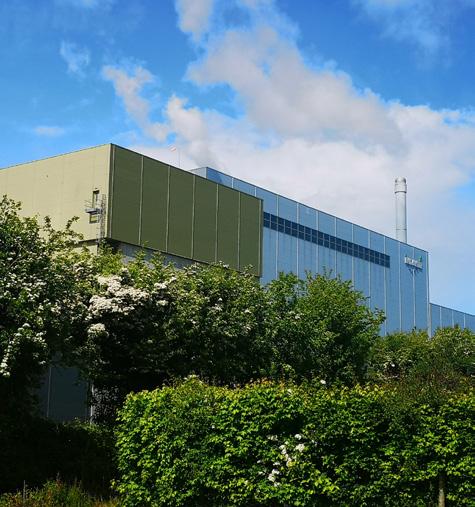
How does MSW make a difference in Ireland?
Municipal Solid Waste (MSW) management and specifically black bin waste management in Ireland, has undergone a significant transformation in recent years, evolving from a system heavily reliant on landfill, to a more integrated approach emphasising recycling, energy recovery and sustainability.
In 2022, Ireland generated 3.19 million tonnes of MSW and recycled 41% of it. That’s roughly 342kg of waste per person. When we have removed the recyclable material, we are left with residual waste, that needs to be processed or disposed of. This is where waste-to-energy facilities come in.
By sending residual waste to Meath Wasteto-Energy (WtE) Facility for treatment and energy recovery, we can divert waste, that would otherwise go to landfill. Our Meath facility processes over 200,000 tonnes of MSW annually, which is delivered by private collectors and state agencies from locations throughout Ireland. The facility generates enough energy to sustain its own operations, and also to export approximately 18 MW of electricity, enough to provide power to about 42,000 homes.
The installation in Meath ensures safe and compliant thermal recovery of waste. It operates at a minimum temperature of 850°C and is equipped with an extensive flue gas cleaning system. All emissions are monitored in real time and available here.
Indaver Meath is the first of only 2 WtE facilities to be developed in Ireland and has operated very successfully since 2011. It is considered critical infrastructure In Ireland. Alongside these dedicated thermal recovery facilities, waste is also co-processed at cement kilns and accepted at the 3 final operating MSW landfills.
Because Ireland has a deficit in treatment capacity for residual waste, there exists a dependency on export of refuse derived fuel or “RDF” (fuel derived from residual MSW) to other countries to be processed. Approx 300,000 tonnes of RDF are exported from Ireland per year. Indaver has been an active party for several years in the export of waste to our long-standing business partners in Sweden, Germany and elsewhere, where waste will be used as a fuel to generate electricity and district heating and cooling.
The Waste-to-Energy facility in Meath produces energy for about 42,000 households annually.
How does MSW make a difference in the United Kingdom?
In Aberdeen, Indaver manages the NESS Waste-to-Energy Facility, which is owned by three local authorities in Northeast Scotland. The facility processes around 150,000 tonnes of household waste annually and recovers both electricity and heat. The electricity is fed into the national grid, while the heat is supplied to surrounding communities via a local district heating network.
In Essex, east of London, Indaver is constructing the Rivenhall Waste-to-Energy facility, which will process 595,000 tonnes of non-recyclable household and similar commercial waste each year. This facility will be crucial for treating these waste streams locally, rather than sending them to landfill or exporting them to other regions. Importantly, Indaver plans to recover enough energy during the waste treatment process to power 130,000 households.

An overview of the construction works at the Rivenhall site.
Plastics2Chemicals (P2C): from complex to circular plastics
Our state-of-the-art installation in the port of Antwerp is, of course, the most visible aspect of Plastics2Chemicals (P2C). But we go beyond the construction and operation of an installation to chemically recycle complex plastics into new, high-quality building-blocks for industry. For example, in 2024 we opened a plant for the pre-treatment of plastic waste and we also provide logistics services, such as storage and transport. In short, we take care of every step in the chain.
Indaver Separation Technologies (IST): tailormade sludge dewatering
Sludge from production processes or a water treatment plant can seriously disrupt a company’s primary processes, resulting in high costs and possibly a production stoppage or environmental incident. To avoid this, IST offers tailormade solutions through mobile and fixed installations.
By separating production sludge or water purification sludge into water and solids, the clean water can be returned to the cycle. In addition, the material value of the dewatered sludge can be put to good use, for example in agriculture.

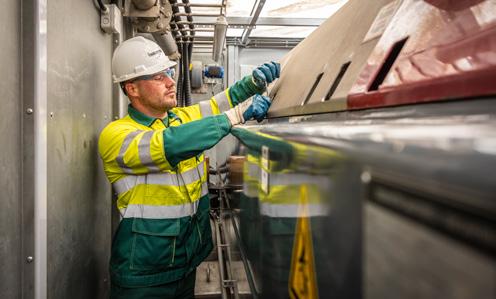
Shared services support business lines and units
Health & Safety offers support and follow-up in the field of health & safety.
Corporate Sustainability supports and coaches the business lines in the fields of sustainability, continuous improvement and innovation.
HR takes care of the sustainable employability and well-being of all employees within Indaver.
IT/BIS ensures the automation and digitisation of processes and all kinds of applications.
Communications is responsible for Indaver’s internal and external communication.
Financial Administration plays a crucial role in ensuring Indaver’s financial stability and growth. This finance department also includes the roles of legal affairs, insurance and purchasing.
Supply Chain is responsible for the entire logistics and administrative chain of waste: from the customer to the processing centre.
Engineering is responsible for the design and construction of new projects or modifications to existing installations.
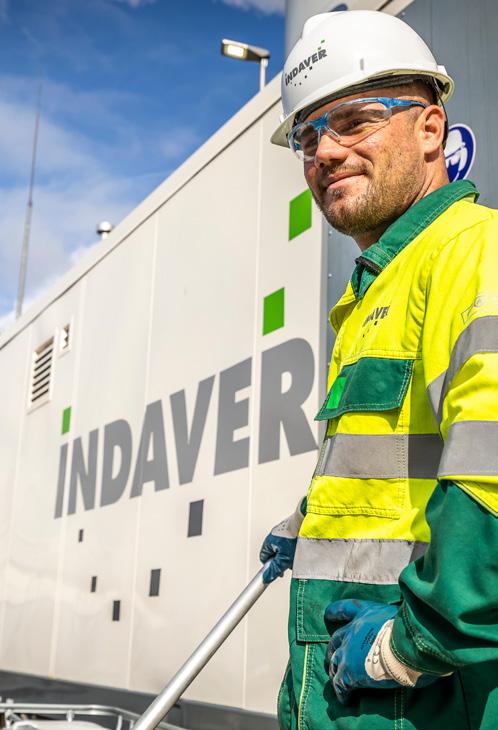
Read more about P2C
Read more about IST.
The European Green Deal as a guide
The World Economic Forum’s Global Risks Report 2024 shows that the main challenges for the next 10 years are ecological in nature. This also applies to Europe. To help turn the tide, Indaver is focusing on three of these ecological challenges: the climate crisis; the raw materials and energy crisis; and the ecosystem crisis.

Climate crisis
Global warming is making itself felt more and more in daily life every year. For example, 2024 was 1.6°C warmer than the average for the period 1850–1900. It is the first calendar year to break through the symbolic threshold of 1.5 degrees, and that by a large margin. There is only one possible conclusion: greenhouse gas emissions must be drastically reduced. Indaver wants to play an exemplary role in this.
Raw materials and energy crisis
Europe urgently needs to become more self-sufficient in strategic and critical raw materials. This is necessary for a number of reasons, including to achieve the climate and sustainability goals. Indaver contributes to this by recovering high-quality materials and sustainable energy from various waste streams.
Ecosystem crisis
Europe’s ecosystems are under pressure from persistent pollution – think of the loss of biodiversity and the risks of Substances of Very High Concern for the environment and people. Indaver is taking the lead in this area, too. Our circular vision and our decisive actions protect the ecosystems by keeping food and material cycles clean.
In 2019, the European Commission presented the European Green Deal: a roadmap to move towards an environmentally sustainable, climate-neutral, and fully circular economy by 2050. This challenging ambition has brought with it a lot of amended and new legislation in recent years – a trend that continued in 2024.
Stricter legislation complements
our strong
decisiveness
New legislative initiatives continue to shape our sector at breakneck speed. As long as they are clear, objective, achievable and the same for all, we embrace these rules and goals for a better Europe. In fact, we see opportunities to make a difference for our customers with our decades-long policy of continuous improvement and innovation. For example, our rotary kiln ovens are among the absolute best in Europe, both in terms of sustainable destruction of hazardous waste and for material and energy recovery.

Green Deal objectives
0% net greenhouse gas emissions by 2025
Decoupling economic growth from the use of raw materials
Making sure no one is left behind 9 strategies
In response to the rapidly changing legal context, Indaver makes regular adjustments.
After all, in our social role we contribute directly to several strategies of the European Green Deal.
Transforming the economy of the EU for a sustainable future
EUROPEAN GREEN DEAL

How Indaver contributes to the European Green Deal: climate and energy
The legislation to stimulate the decarbonisation of European society affects both our own operations and our ambition to focus with even greater intensity on energy generation from household and industrial waste streams.
Renewable
Energy Directive III (RED III)
What?
RED III is the 3rd version of the European Renewable Energy Directive and aims to accelerate the energy transition. For example, there is a binding target for the share of renewable energy: (at least) 42.5% by 2030.
Why relevant?
The directive contains a definition of ‘residual heat’ that the Antwerp North Heat Network (Belgium) and ECLUSE (Belgium), among others, must meet. This allows us to sustainably valorise this residual heat.
Energy Efficiency Directive (EED)
What?
The Energy Efficiency Directive (EED) sets out rules and obligations regarding primary and secondary energy consumption. In 2024, the European Commission published recommendations on financing energy efficiency.
Why relevant?
Heat networks that are fully fed with residual heat are recognised as ‘efficient’ and even ‘carbon-neutral’ through a recent Recommendation Document. In short, Indaver’s heat networks enable companies to reduce their Scope 2 emissions.
Emission Trading System (ETS)
What?
Industrial companies that fall within the scope must surrender one emission allowance for every tonne of fossil CO2 emissions. They can buy and trade those emission rights.
Why relevant?
The outcome of the European decision-making process on the place of waste processing within the ETS is still uncertain, but we do expect an impact. Today, only our E-Wood power plant is covered by the ETS system because of the use of biomass. Our Waste-to-Energy installations could also fall under the ETS regime from 2028 onwards.
Effort Sharing Regulation (ESR)
What?
The ESR sets a national target for each Member State to reduce greenhouse gas emissions from sectors not covered by the Emission Trading System (domestic transport, buildings, agriculture, small industry & waste). All relevant actions must be included in the National Energy and Climate Plan (NECP).
Why relevant?
The waste management sector is currently covered by the ESR system. Sometimes there are additional measures to reduce the environmental impact. For example, the German federal government has been levying a CO2 tax on thermal waste treatment plants since 2024.
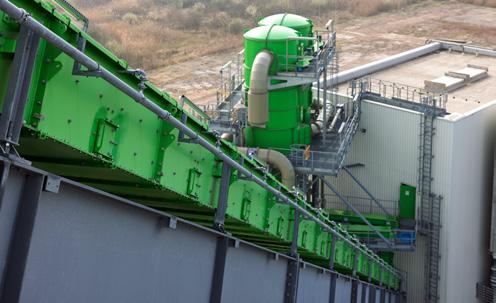
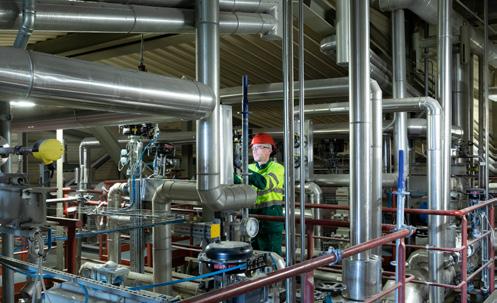
EU Taxonomy
What?
The EU Taxonomy is a classification system that clarifies which activities are sustainable by virtue of their contribution to environmental objectives. The system prevents greenwashing by setting clear criteria for the share of turnover and investments that may be included.
Why relevant?
The classification system recognises that our rotary kiln ovens provide an essential social service. This is because they are the final link in the circular economy by destroying hazardous substances and thus keeping the cycle clean. This is a recognition of the sustainability of our activities in this area.
Carbon Removal Certification Regulation (CRCR)
What?
In December 2024, the ‘Regulation establishing a certification framework for permanent carbon removals, carbon land management and carbon storage in products’ was published. In this way, the EU wants to create a positive climate effect and prevent greenwashing.
Why relevant?
If the voluntary certificates for carbon removals and soil emission reductions break through, this could be an opportunity for efficient and effective carbon removal from our industrial processes, contributing significantly to EU climate neutrality by 2050. After all, CO2 capture and storage counts as permanent carbon removal.
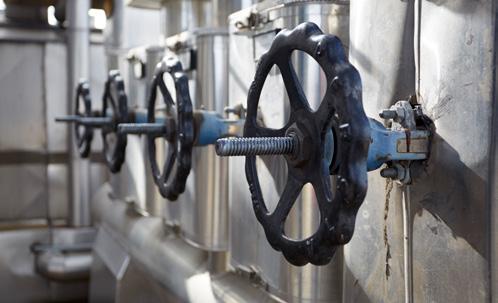

How Indaver contributes to the European Green Deal: the circular economy
The EU is in the process of redesigning the legislative framework for the transition from a linear to a circular production and consumption model. As an enabler and gatekeeper of the circular economy, we make sure to keep our finger on the pulse and inform our customers about the (upcoming) legal framework.
Waste Shipment Regulation (WSR)
What?
The objective of this legislation is to protect the environment and human health from the adverse effects of the international transport of waste. This includes a ban in principle on the export of waste outside the European Union.
Why relevant?
From 2026, the revised WSR introduces a further tightening of the waste export ban outside the EU and of intra-EU traffic with destination ‘Disposal’ (disposal vs recovery). In addition, the new WSR also provides for a substantial digitisation of the notification procedures.
Waste Framework Directive (WFD)
What?
The Waste Framework Directive, which has been in force since 1975, sets out the legal framework for the treatment of waste in the EU. In 2024, a review got underway focused on textiles and food waste.
Why relevant?
The Framework Directive includes concepts and definitions within waste management, such as definitions for waste, recycling and recovery. In addition, it also establishes a priority order in the so-called waste hierarchy: prevention, preparation for reuse, recycling, other recovery applications (e.g. energy recovery), and disposal. The directive thus forms the basis for many of our decisions.
Critical Raw Materials Act (CRMA)
What?
The CRMA aims to ensure that the EU has access to a secure and sustainable supply of critical and strategic raw materials. This is important to achieve the European objectives on climate and digitalisation.
Why relevant?
One of the key goals of the CRMA is that by 2030, at least 15% of the annual consumption of critical and strategic raw materials must come from local recycling processes. This offers an opportunity for Indaver, which has been specialising in the recovery of high-quality materials from various waste streams for years.

Packaging & Packaging Waste Directive (PPWD)
What?
The EU published the revised PPWD in January 2025 with the goal of harmonising packaging standards at national and European level, reducing packaging waste as much as possible, and promoting the reuse and circularity of packaging materials.
Why relevant?
The PPWD includes provisions for the use of recycled content in plastic packaging for the first time. Although the calculation method has yet to take shape, the development of the P2C project gives Indaver a unique asset to help customers achieve the targets.
Towards a circular economy
Need for extra recycling capacity
Targets for the recycling of plastic packaging in the EU:
How Indaver contributes to the European Green Deal: zero pollution
As part of the European Green Deal, the EU wants to reduce air, water and soil pollution to a level that is no longer harmful to humans and our natural ecosystems. This legislation contributes to this.
Industrial Emissions Directive (IED)
What?
Need for high-quality recycling
Targets for recycled content (from post-consumer waste) in plastic packaging in the EU:
Important: because we are selling more and more materials on the raw materials market, quality specifications and product standards are also coming into focus, such as REACH to control the risks of chemical substances.
The directive has been in force since 2010, with the aim of reducing and controlling harmful emissions from industrial activities, thereby protecting our air, waters and soil.
Why relevant?
Through this legislation, the EU sets rules to prevent and, where that is not possible, limit emissions into air, water and soil. Specifically, IED contains, for example, operational requirements, emission limit values and monitoring and compliance requirements for thermal waste treatment plants.
BREF (Best Available Techniques Reference Documents) for waste incineration
What?
The BREF for waste incineration plays a crucial role within European legislation, especially with regard to the Industrial Emissions Directive. The BREF document describes a number of general Best Available Techniques (BAT) that apply to all waste incineration plants, regardless of the type of waste they are processing. In addition, BAT is also given for waste incineration plants that treat specific types of waste, such as household, medical or hazardous waste.
Why relevant?
This BREF has a direct impact on the management and operation of Indaver’s waste incineration plants. We closely follow all requirements, introduce necessary changes and always work in accordance with the BAT.
BREF FOR LANDFILLS IN THE MAKING
The European Agency for Research on Industrial Transformation and Emissions has started the development of the BREF landfills. Indaver is looking forward to the outcome of the European BAT study and we welcome the proposal to ensure equal responsibility among all partners in our sector.
Our international presence
Indaver is active in 9 European countries. There, we manage and operate installations and many other sites that keep material chains closed and safe. Through our targeted investments and acquisitions, we are systematically expanding our radius of action, as well as our capacity to efficiently recover energy and materials from various waste streams.
Waste-to-Energy plants
Our Waste-to-Energy installations extract energy from nonrecyclable waste.
Doel (BE), Meath (IE), Aberdeen (UK), Rivenhall (UK, under construction), Ghent (BE, under construction)
Hazardous waste plants
Our specialised incineration plants neutralise hazardous waste at a high temperature and generate maximum energy. Hamburg (DE), Biebesheim (DE), Antwerp (BE)
Recycling
Our high-tech installations recover valuable materials, such as precious metals, solvents, ferrous and non-ferrous metals and plastics.
Inda-MP (BE), Solvents (UK, BE), P2C (BE), IndaChlor (FR), PMD sorting (BE), bottom ash treatment (BE), Indaver Relight (BE), ARP (NL)
Composting
Our installations process organic and green waste into valuable raw materials and sustainable energy. the Netherlands
Transfer
stations
Transfer stations for the safe, temporary storage and processing of waste.
All Indaver countries
Sustainability reporting according to the CSRD
To make the European Green Deal a success, it is important that consumers, banks, governments and other players can more easily compare organisations when it comes to sustainability performance. The new Corporate Sustainability Reporting Directive (CSRD) enables this level of reliable and transparent comparison. The directive does this by requiring all in-scope companies to publish annual sustainability reports that meet strict standards – the European Sustainability Reporting Standards (ESRS).
In 2026, our parent company, Katoen Natie, will issue a first CSRD-compliant report on fiscal year 2025, to which Indaver will actively contribute. In line with this, we will also continue to publish our own sustainability report. This edition is a so-called transitional edition and already contains aspects from the joint CSRD report.
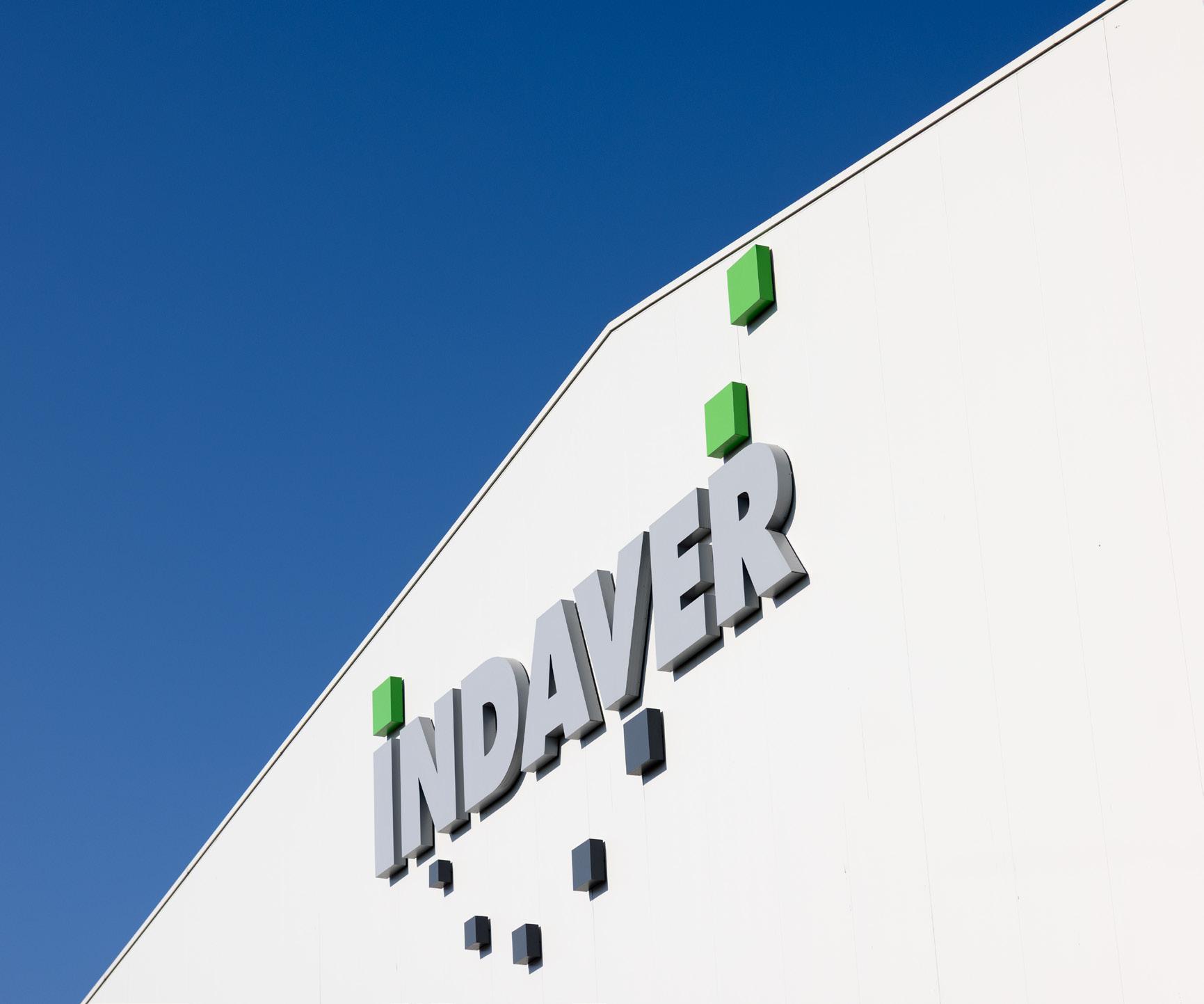
A new chapter in a long tradition
The CSRD has a much broader target group than its predecessor, the Non-Financial Reporting Directive (NFRD). As a result, more than 50,000 European organisations will have to report on sustainability from 2026 – many for the first time. However, Indaver already has a long tradition in sustainability reporting, with the publication of our first annual report more than 20 years ago.
This means that with the arrival of the CSRD, we are mainly building on what we have already been doing. Below is an overview of some important new revisions that we implemented (partly) in this report for 2024.
What were we doing before CSRD?
Structure of the report
Reporting according to the 17 Sustainable Development Goals and GRI standards
Materiality
Determination of materiality based on own evaluations and stakeholder engagement
Data
collection
Data collection for material topics, from training hours to mass balances of installations
Transparency
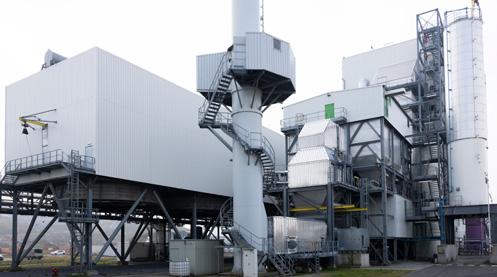
Internal determination of targets and associated action plans
What’s new with CSRD?
Beyond the CSRD...
Joining the SBTi
Reporting according to the ESG format and the relevant ESRS
Determination of materiality according to principles of double materiality as described in ESRS 1 and 2
In addition to the mandatory CSRD requirements, Indaver is also continually raising the bar for itself. For example, we want to score better and better for EcoVadis, and we recently also endorsed the Science Based Targets initiative (SBTi). By the end of 2025, we are aiming for a comprehensive decarbonisation plan, including short- and longterm targets, which we will then submit to the SBTi for validation.
Expansion and deepening of data collection, especially for the carbon footprint (fleet, forklifts, etc.)
External publication of targets and associated action plans
CO2 calculations for customers
We help our customers with their CSRD reporting via our own tool for calculating CO2 emissions. For example, we can share how much the emissions were for a certain volume of waste according to a certain processing method, just like data for transport. This provides customers with reliable data for their own report on Scope 3 (category 3.5: waste generated in operations). We also provide them with information about avoided emissions associated with the volume of waste they deliver (Scope 4).
Our emissions laboratory at Doel.
Double materiality: the key to effective reporting
The concept of double materiality is central to the CSRD and combines two perspectives: impact materiality and financial materiality. The latter perspective is new and requires Indaver to analyse how sustainability issues affect our financial performance. The advantage is that it allows us to better anticipate risks and opportunities that may affect our financial health in the short, medium and long term.
In 2024, much attention was paid to the execution of our double materiality analysis (DMA), including the determination of our impacts, risks and opportunities (IROs). Although in previous years we assessed materiality on the basis of various sources and stakeholder feedback, those analyses did not meet the requirements of the CSRD.
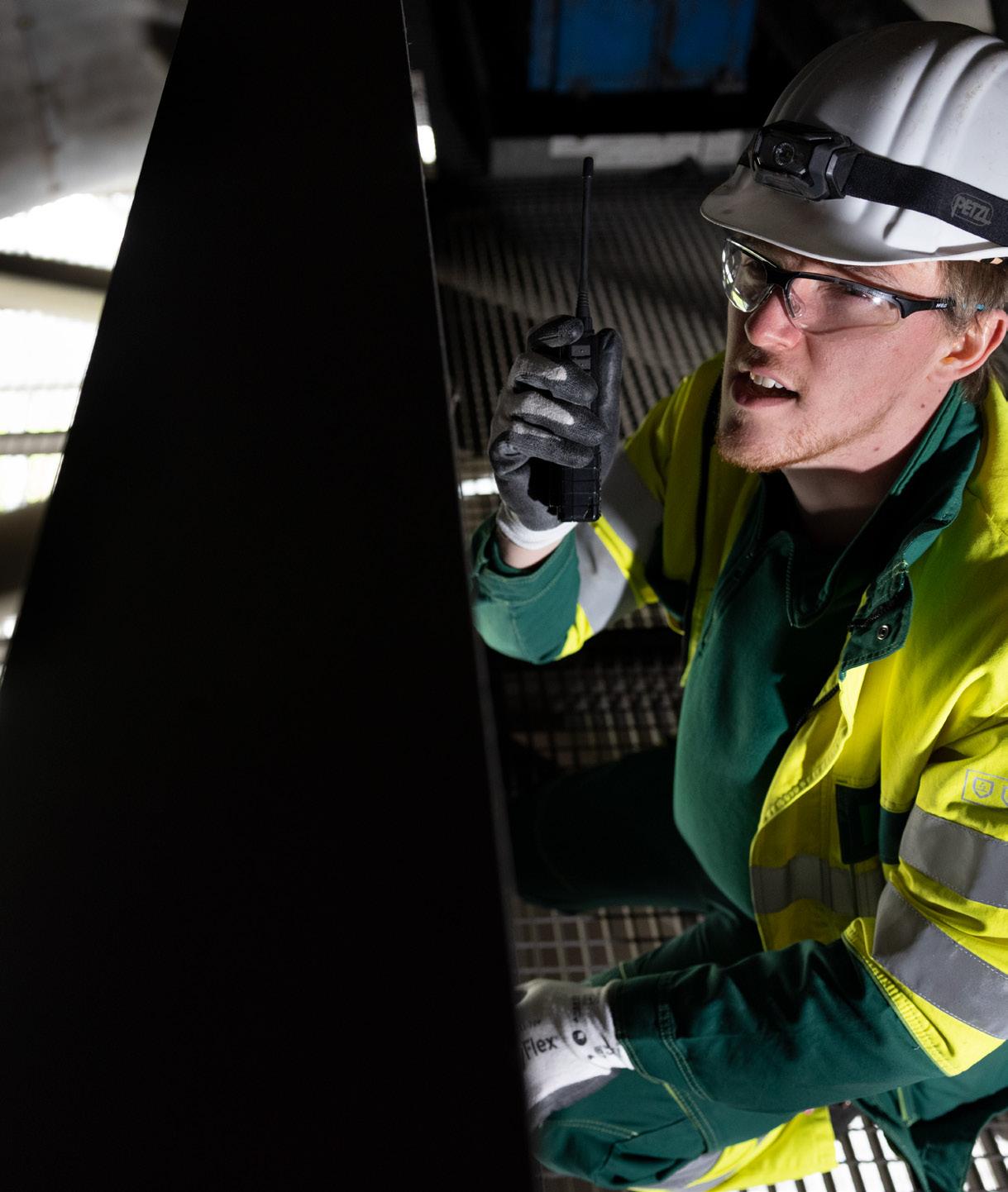
Sustainability reporting according to the CSRD - Towards a solid foundation for reporting in 6 steps
Towards a solid foundation for reporting in 6 steps
Step 1: Scope and pre-selection topics
After determining Indaver’s main activities and value chain, we drew up a longlist of sustainability issues that are close to our strategic objectives. We did this on the basis of the ESRS Guidance Documents. More specifically, we selected 14 of the 18 topics listed.
Step 2: Stakeholder Consultation
We consulted our main internal and external stakeholder groups through direct discussions or indirect methods (such as desk research).
Suppliers and partners
Employees of Katoen Natie
Customers
Research and knowledge institutions
Sector federations
NGOs
Business partners
Investors and analysts
Regulators and policymakers
Subsidiaries of Katoen Natie
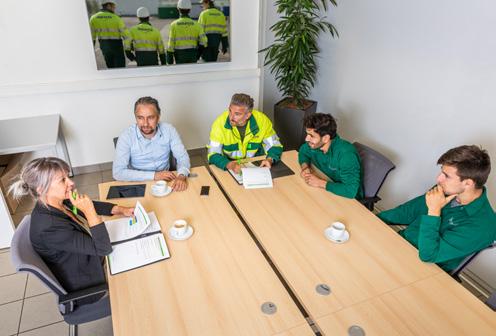
Step 3: Materiality analysis
Based on all the input collected, we confirmed and scored the 14 material topics on which we will report. The topics are evenly spread across Environmental, Social and Governance. To illustrate: all ESRS apply to Indaver, except for ‘ESRS S4 – consumers and end users’, because they are too far down our chain, both upstream and downstream.
topics
Climate change mitigation Employee health &
Hazardous substances & materials Working conditions & employee well-being Sustainable & resilient supply chains
Pollution prevention & reduction Diversity, equity and inclusion
Marine & inland biodiversity Workforce’s social rights
Resource use & circular economy
Workers in the value chain and human rights
Engagement with local communities
Step 4: Determination of Indaver’s IROs
& service innovation
By identifying and scoring all impacts, risks and opportunities (IROs), we better understand how sustainability issues affect our financial results and vice versa. Double materiality is therefore not only a basis for effective reporting, but also a valuable tool for our business strategy and business models.
FIRST QUALITATIVE ASSESSMENT OF INDAVER’S IROS
Environmental topics
Important: this assessment is based on interviews with senior staff and various advocacy groups, which we assume may represent larger stakeholder groups. In the next step, an (external) validation round will follow in which we will have both the topics and exact scores validated.
Social topics
Social topics Environmental topics
For a full description of our material impacts, risks and opportunities, please go to CSRD Benchmark.
Governance topics
Governance topics
Step 5: Central data collection
Although we are very active in the field of sustainability, the CSRD requires us to collect and maintain much more data centrally. That is why we are now consolidating data that was previously not always centrally recorded for various reasons. Think, for example, of data on the application and retention of permits that were only available locally until recently.
Step 6: Targets and action plans
Once we understand in detail where we currently stand and have identified areas for improvement, we can set specific goals to guide our future efforts. We will continue to work on this in 2025 so that we can share them in our next sustainability report.
“We have been measuring and communicating our sustainability performance for years – either because customers asked for it, or because we consider it ‘good business’ ourselves. With the CSRD as a catalyst, we are now shifting up a gear. Not only because we have to, but especially because we believe in the benefits of mapping out impacts, risks and opportunities associated with sustainability topics even more specifically. With the insights, we are improving our contribution to an increasingly cleaner, circular and just society.”
Corrinne Goenee, ESG-manager
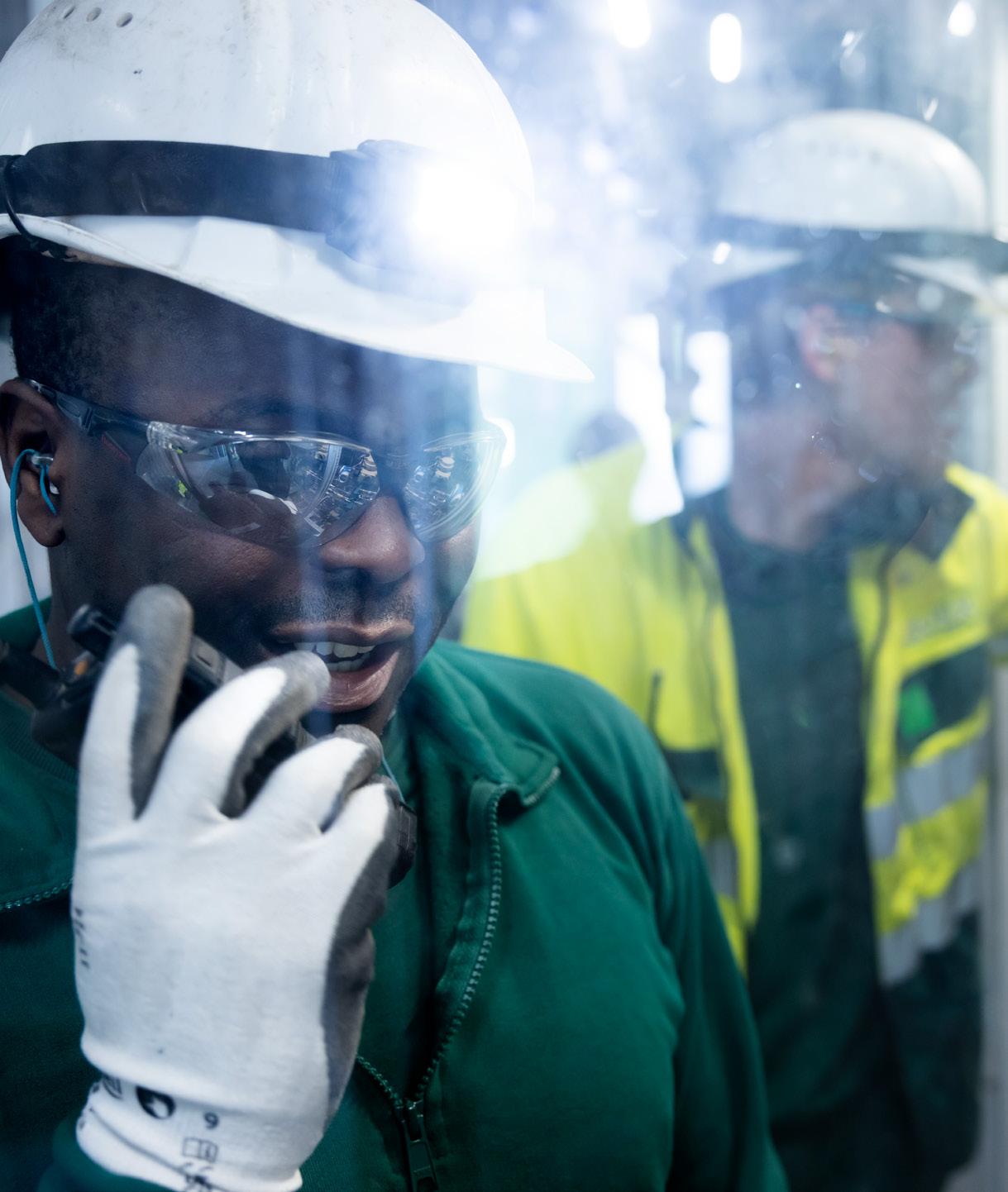
Our contribution to the Sustainable Development Goals
In the context of our sustainability strategy, Indaver attaches great importance to transparent reporting and international alignment. The Sustainable Development Goals (SDGs) of the United Nations are an important frame of reference in this regard.
Our material themes are carefully determined through our materiality analysis and reflect the sustainability priorities of Indaver and its stakeholders. In the attached table, we show how our activities contribute to specific SDGs. For example, the most important SDG for us is SDG 12 - Responsible consumption and production. Needless to say, this objective fits perfectly with Indaver’s mission.
Next to these leading SDGs, we also make a reference to secondary SDGs in this report, such as SDG 15 – Life on land.










SDG 3: Good health and well-being
SDG 4: Quality education
SDG 6: Clean water and sanitation
SDG 7: Affordable and sustainable energy
SDG 8: Fair work and economic growth
SDG 9:
Industry, innovation and infrastructure
SDG 11:
Sustainable cities and communities
SDG 12:
Responsible consumption and production
SDG 13: Climate action
SDG 17: Partnerships for the goals
Indaver’s commitment
We promote a proactive safety and health culture in the 9 countries where we have facilities.
Lifelong learning is a prerequisite for sustainable employability of employees at Indaver.
For customers, we treat wastewater so that it can be reused. To reduce our own water footprint, we make maximum use of rainwater, commit to reusing internal wastewater streams and optimise our processes.
By recovering energy from waste, Indaver contributes to European energy goals.
As an international group with 2,306 employees, we promote economic productivity through diversification, technological modernisation and innovation.
Indaver stimulates innovation both inside and outside its own company walls. Moreover, we support industry in tackling new challenges related to raw materials.
We supply energy to industry and residential areas, while also effectively protecting our ecosystems.
Indaver is creating a pure circular economy. With our core activities, we limit the impact of waste on people, climate and the environment, while also going full steam ahead with positive impact.
Indaver has a Carbon Management Plan with 6 focus areas to pursue Science Based Targets.
We actively seek external partners to put our mission around sustainable waste management into practice.
Environmental
A healthy planet through sustainable waste management
At Indaver, we consider it our social duty to actively contribute to the quality of life on the planet. We use the European Green Deal and the Clean Industrial Deal as a compass for this. Through these action plans, the EU aims to make our society more sustainable by rethinking technologies, production processes, consumption patterns and our way of living.
Indaver is ideally placed to work within a new, fundamentally different system. After all, we are already recovering high-quality materials and energy from waste and thus protecting our ecosystems. In other words, our approach to waste is already providing valuable solutions to some of the biggest challenges facing Europe, such as material scarcity, energy dependence, climate change and environmental pollution.
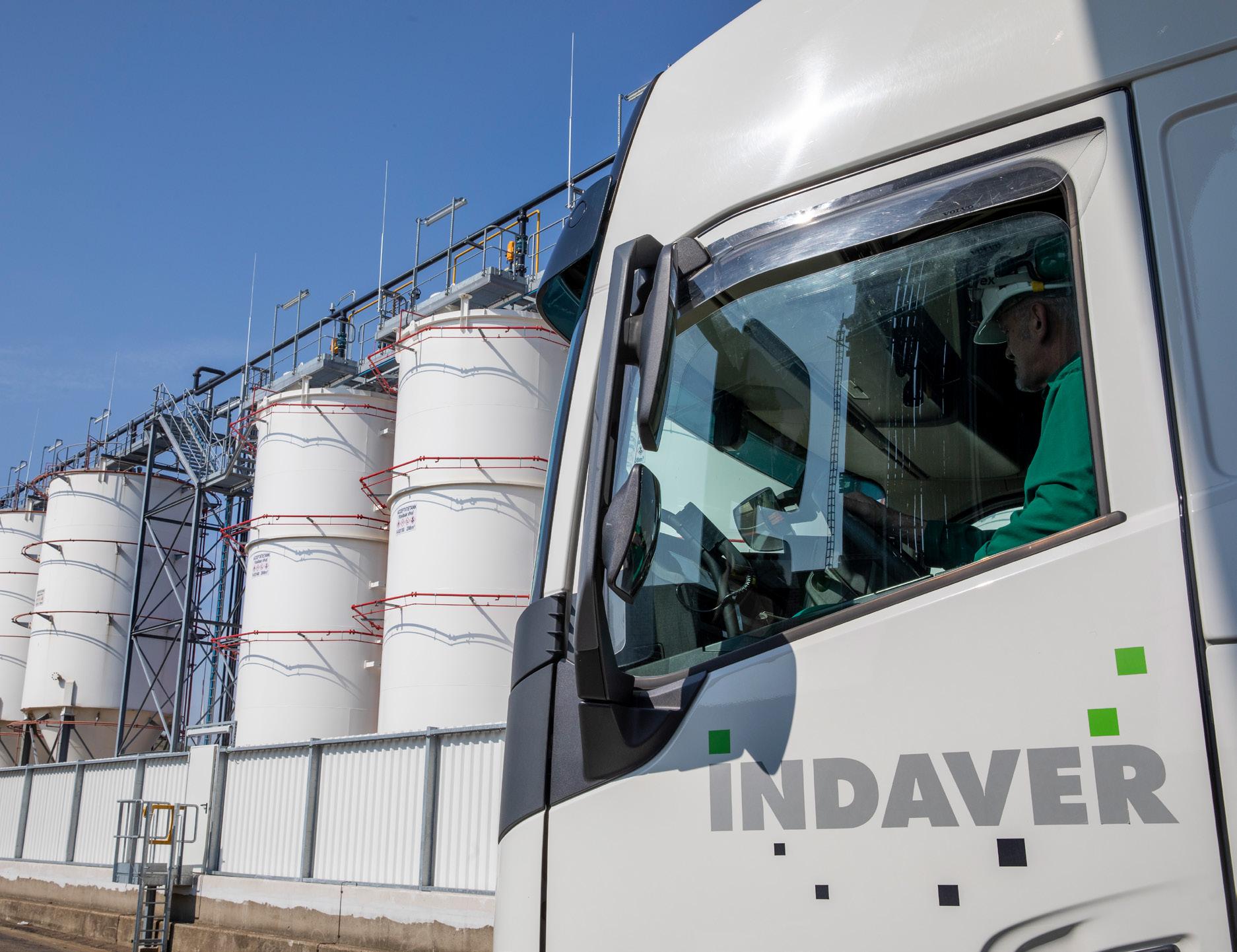
Reducing our carbon footprint
Why important?
Last year, 2024, was the warmest year on record. What’s more, 2024 was the first calendar year to break through the symbolic barrier of 1.5 degrees of warming compared to the pre-industrial period (1850-1900) –that is a first for planet Earth, and an ominous warning. The warming of 1.5 degrees is not yet structural, but scientists expect it to be so around 2030.
In the Paris Climate Agreement, the EU agreed with 200 countries to keep structural global warming ‘well below two degrees, and preferably at one and a half degrees’. The latter goal seems a long way off, but it remains important to strive for every tenth of a degree less warming because every tenth means a less severe impact in the form of extreme weather conditions. Indaver is doing its bit to achieve Europe’s climate targets.
Our objectives and approach
Indaver is ambitious in terms of climate action, but we operate in a particular sector. While waste disposal is crucial to keeping the environment and our material chains clean and pure, it also leads to emissions. During the incineration of waste, CO2 is inevitably released from the waste itself. For our other emissions – e.g. from fuel and purchased electricity – we are aiming for a significant reduction, just like other industrial sectors.
How does our sector differ from other industrial sectors in terms of carbon footprint? We zoom in on the differences per scope in this chapter.
Scope 1
Remarkably high share of (unavoidable) emissions from waste
The focus of our carbon footprint is on Scope 1, the greenhouse gas emissions that arise in or through our installations and vehicles. This mainly concerns the CO2 that is released from waste during incineration. This translates to an estimated 95% of our Scope 1 emissions being unavoidable, because we cannot replace waste with an alternative.
Our Scope 1 emissions are therefore directly proportional to the volumes of waste generated by society, as well as the composition of that waste. In fact, the more installations we start up to carry out our essential social role, the greater our Scope 1 – and therefore carbon footprint. Only carbon capture & storage or carbon capture & utilisation could offer amelioration in this regard, but the technology is not yet advanced enough to roll it out on a large scale in our industry. In addition, its implementation would immediately encounter limitations, such as available infrastructure.
Scope 2
Limited emissions thanks to self-generation
With a 1% share of our total carbon footprint, our Scope 2 emissions are rather limited. This is largely due to the energy that we recover and use ourselves in the thermal treatment of non-recyclable waste. For example, we use part of the energy recovered in our incinerators in Belgium, Germany, Ireland and the United Kingdom to fuel our own buildings and processes.

Scope 3
Much smaller than most industrial sectors
Emissions from our upstream and downstream value chain represent a small share of our total carbon footprint and consist mainly of purchased products and services, such as outsourced processing and transport. This is atypical, because for most industrial players Scope 3 is by far the largest factor in the total carbon footprint – about 75% on average, according to the Carbon Disclosure Project.
It is important to mention that our Scope 1 and 2, as well as the outsourced processing within our Scope 3, form part of our customers’ Scope 3. We pass on the necessary calculations to them, so that they can report truthfully on the impact of their waste.
Scope 4
High share of avoided emissions
Scope 4 is a new concept within CO2 accounting to refer to avoided emissions. More specifically, Scope 4 is defined by the World Resources Institute as ‘emissions that are avoided when an organization uses a product to replace other goods or services; with the same function but with a lower CO2 intensity’.
Scope 4 does not count as a carbon-reduction measure or the achievement of Science Based Targets. It is also not yet a mandatory scope to report on, e.g. within the CSRD. But this new dimension does help to build a more comprehensive overview of Indaver’s contribution to the carbon footprint of society as a whole. For example, Indaver avoids many emissions through energy and material recovery from waste.
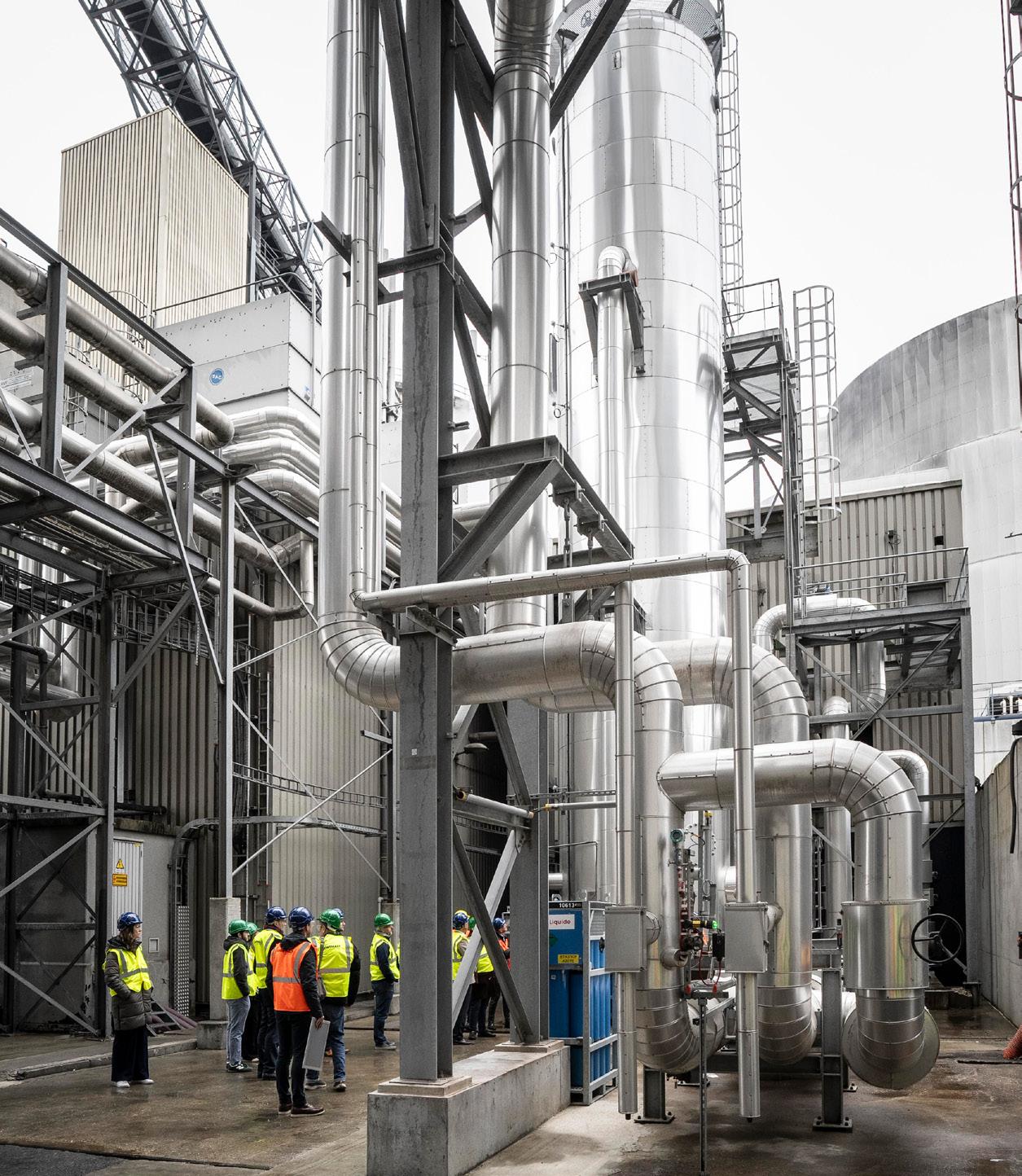
Boortmalt uses green energy from Indaver’s thermical treatment of waste thanks to the Antwerp North Heat Network.
Carbon Management Plan for a CO2-neutral Indaver
Based on the unique nature of our carbon footprint, Indaver has developed its own Carbon Management Plan. This includes 6 qualitative focus areas that are discussed in detail in this section.
In line with our commitment to the Science Based Targets initiative (SBTi), in 2024 we started to further refine and expand this plan. By the end of 2025, we aim to have submitted our decarbonisation targets, timeline and KPIs to the SBTi for validation.
In the making: Science Based Targets
Our commitment to the SBTi means that Indaver wants to draw up a decarbonisation plan that is in line with the targets necessary to limit global warming to 1.5°C, as set out in the Paris Agreement. More specifically, we are working on reduction targets for the short and long term.
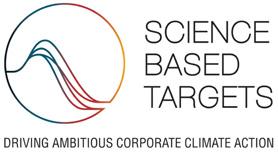
What are we going to do in 2025?
Create a complete and validated inventory of our emissions within Scope 1, 2, 3 and 4 to create a baseline model.
Identify ongoing and potential decarbonisation activities through a bottom-up approach.
Develop a strategy and action plan for decarbonisation.
“We are fully committed to improving our carbon footprint in all Scopes. However, due to the specific nature of our Scope 1 and 4 emissions, a successful journey depends to a large extent on collaborations with partners throughout our value chain. We will take the lead in this and work out an ambitious but realistic plan for ourselves. The ultimate goal: to be CO2 neutral by 2050.”
Karl Vrancken, Chief Sustainability Officer
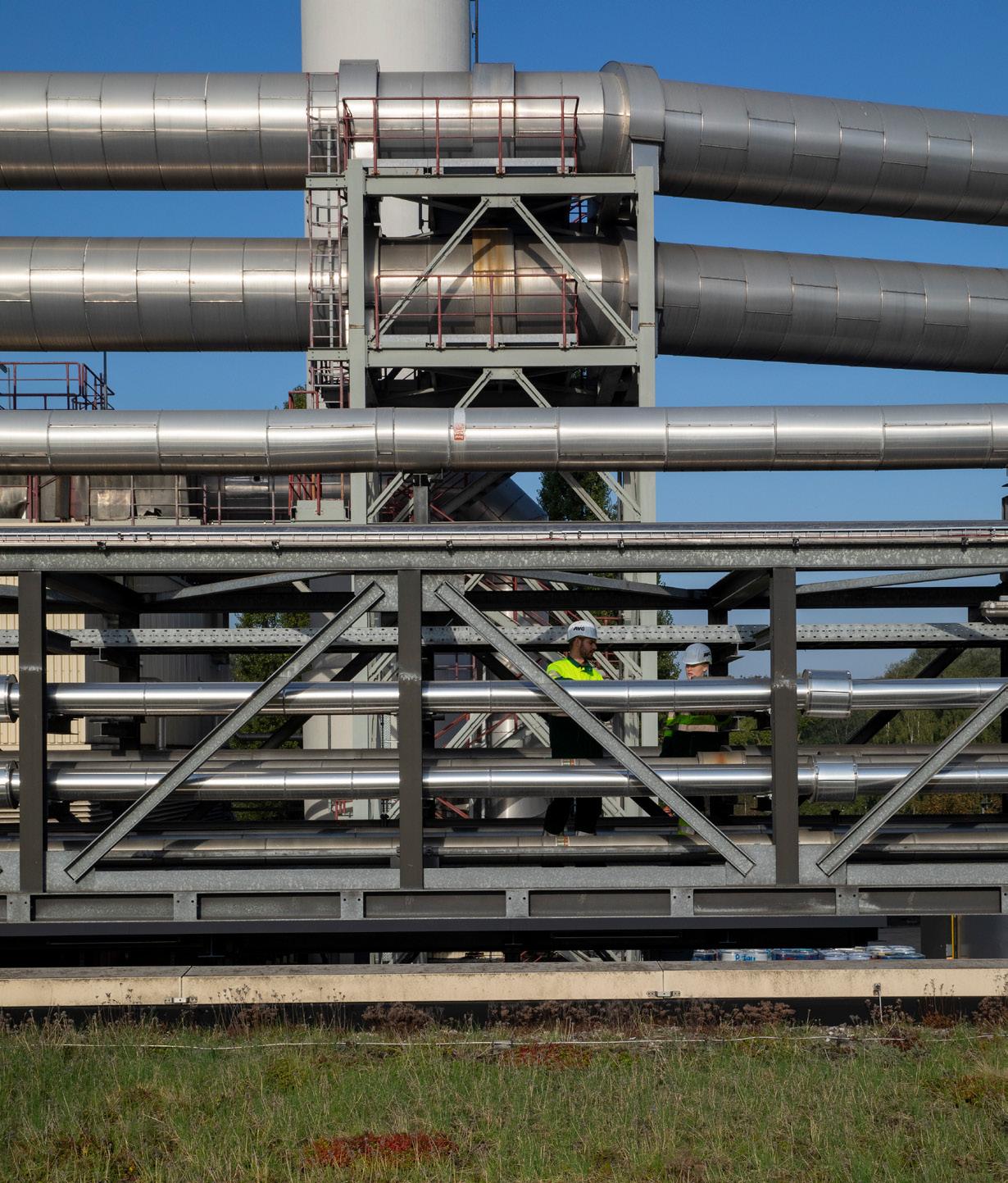
Our projects and initiatives in 2024
For many years, Indaver has had a Carbon Management Plan for managing and reducing CO2 emissions related to our facilities and the treatment of waste. We are currently further developing and quantifying that plan.
In our plan, we identify 6 focus areas that will help to reduce CO2. Some of these focus on the short term, others on the longer term.
Focus area 1
Destroying waste materials to reduce their impact
As gatekeeper of the circular economy, there is an important responsibility for Indaver to keep hazardous waste out of the cycle. Our rotary kiln ovens in Belgium and Germany are essential for this. These furnaces also destroy various hazardous substances, such as HFCs (hydrofluorocarbons). These are mainly used in refrigeration systems and have a high Global Warming Potential (GWP). By destroying these substances, we help to prevent them from contributing to global warming. Our
site IndaChlor (France) also destroys waste materials, such as tetrachloromethane, a harmful substance with a very high GWP, during the recovery of chlorine.
It goes without saying that we always keep these installations in prime condition and improve them whenever possible. For example, in 2023 we replaced a rotary drum in one of our furnaces in Antwerp (Belgium), while in 2024 we introduced several improvements to our installations in Hamburg and Biebesheim (Germany) to ensure we continue to meet the strictest environmental requirements.
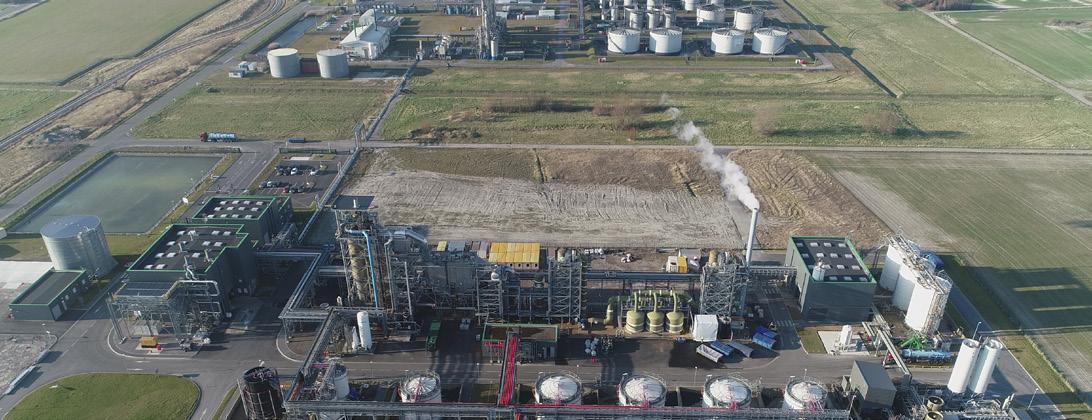


Focus area 2
Avoiding emissions by keeping carbon in the chain through recycling
If we succeed in high-quality recycling of waste materials into new raw materials, we avoid the CO2 emissions associated with the extraction and processing of new raw materials. In this respect, our sorting centre for PMD waste in Willebroek (Belgium) is a good example. The plant sorts tens of thousands of tonnes of waste annually into 16 streams with a very high degree of purity, ready for reuse.
On the same site, we opened a pre-treatment plant in 2024 that converts certain separated plastic waste streams into pellets after the sorting process. These serve as ready-to-use raw materials for our state-of-the-art Plastics2Chemicals plant (see p. 56), where we recycle polystyrene (PS), among other materials, into new basic chemicals for industry.
Indaver also keeps carbon in the chain through composting, especially at our Dutch sites, because applying compost adds carbon to the soil and part of it remains stored. Soil plays an important role in carbon storage. More carbon in the soil means less carbon in the atmosphere.
Composting: storing carbon in the soil
The conversion of organic waste into highquality compost is part of our decarbonisation plan.
Soil can store large amounts of carbon, but the carbon applied via compost will not be stored forever. How much organic carbon remains stored in a soil depends on various factors, such as the type and stability of the compost. For example, the amount of carbon that is still in the soil after one year for high-quality, mature compost is between 85% and 95%.


Our IndaChlor site destroys hazardous materials such as tetrachloromethane during the recovery of chlorine.
Reducing fossil energy sources in our treatment processes, buildings and vehicles
By continuously striving for optimal energy efficiency, we are reducing our energy consumption. For the energy we do need, we switch from fossil fuels to renewable energy, such as wind and solar, as much as possible. This also limits greenhouse gas emissions into the atmosphere.
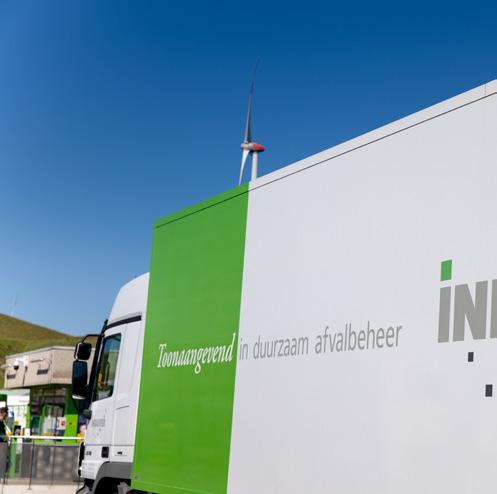


Green mobility
Indaver has been working for a number of years on a greener fleet and sustainable mobility options for its employees. Bicycle leasing, electric cars and awareness campaigns should help us reduce the consumption of fossil fuels.
Sustainability also applies to our professional mobility, from electric forklifts at our sites to smarter transport between sites. An example of the latter is how we no longer transport the residue from the flue gas treatment in Meath (Ireland) in wet form for final storage, but rather in dry form. We made this change because it requires less transport and produces less emissions.
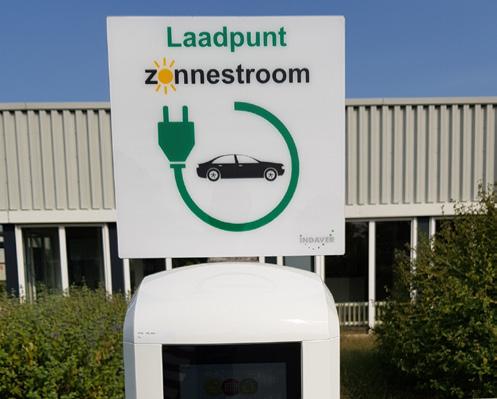
Renewable energy for own sites
At our sites in Willebroek (Belgium) and Terneuzen (the Netherlands), we use renewable energy to power our operations. For example, the 670 solar panels in Terneuzen generate about 280 MWh per year – good for 10% of the company’s own energy consumption. In Willebroek, the wind turbine generates 7,500 MWh per year, while the solar panels on the roof of the PMD sorting plant have a peak capacity of 345 kW. Both energy sources account for about half of the site’s total energy consumption.
But the project that receives the gold medal in the field of renewable energy takes place on the Antwerp site (Belgium). There, we received a permit to build a Solar Park on the landfills of our Antwerp and Hooge Maey sites. The flanks of these safely covered landfills have an ideal slope for catching sunlight.
Construction of Solar Park: final piece of a versatile energy cluster
The energy cluster will also make the energy supply of Indaver, a number of port companies and part of the city more sustainable.
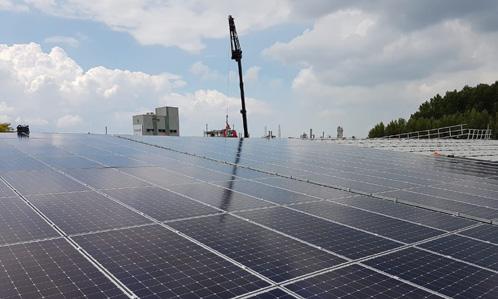
Our Solar Park (under construction) will supply a significant part of the electricity demand of our installations, including Plastics2Chemical.
Wind turbines generate renewable energy. Four engines generate energy from landfill gas (methane).
We convert part of the energy released during the thermal treatment of waste into electricity for our own processes.
Our rotary kilns supply residual heat to the Antwerp North Heat Network (WAN).
At many parking lots, employees can charge their electric vehicle with solar power.
Indaver invests in energy-efficient engines for its fleet.
Energy-efficient investments
The cleanest energy is the energy we do not consume. Indaver is constantly looking for options to reduce energy consumption on our sites in an intelligent way, without compromising quality or capacity.
Two projects from 2024 in the spotlight:
#1 Alternative to preheating in Hamburg (Germany)
The air at the front wall of the rotary kiln is preheated to a temperature of 120°C by our internal steam system as standard. Thanks to recent optimisations, we can now incinerate waste without preheated air, which means less energy is needed.
#2 Less pressure loss leads to less energy consumption in Biebesheim (Germany) Through an optimised design, we prevent pressure losses in our installation. This in turn leads to savings in the suction hoists, which are among the largest energy consumers on the site. Over a whole year, the energy savings can amount to 1.17 GWh.
Focus area 4
Recovering high-quality materials from waste streams
By recovering materials from waste via the Best Available Techniques (BAT), we save the energy and CO2 emissions further down the chain that would be needed for the extraction or processing of those raw materials with fossil fuels.
A particularly valuable installation for the recovery of materials is Inda-MP in Antwerp (Belgium). Here, Indaver recovers precious metals from precious metal-containing liquids. We do this for European companies that specialise in pharmaceuticals, agrochemicals, catalysts, hydrogen and fuel cells. This means that together we prevent the extraction of new precious metals, which is a very carbonintensive process: for example, 1 kg of palladium equals about 25 tonnes of CO2.
The strength of Inda-MP lies in the fact that we offer a solution for every liquid waste stream, including water-based, by deploying multiple technologies and installations. And we guarantee an all-round service: from logistics services for liquids (with the support of parent company Katoen Natie) to the delivery of refined precious metals.
Good to know: in 2024, we started using a new process line in Inda-MP that allows us to process even more waste streams tailored to customers’ needs.



Our site in Antwerp (Belgium), where we recover precious metals from metal-containing liquids.
Focus area 5
Recovering energy from waste streams
We want to use every joule of energy we extract from the waste in a smart way. For this, we take a two-strand approach: we use the energy for our own operations, and we supply energy to other users in the form of steam, electricity or heat. These other users can be residential areas, companies, hospitals or other customers. Together, we are preventing CO2 from being emitted elsewhere through the production of energy from fossil fuels.
Investments in higher energy yields
Our aim at all our sites is to generate more energy from the same volume of waste. This will be the case in the Rivenhall Integrated Waste Management Facility (UK) too. When Rivenhall opens in 2025, it will not only be our largest Waste-to-Energy plant, it will also integrate state-of-the-art technology, such as highly efficient boiler and turbine designs. This will allow us to extract maximum energy from the waste, without expanding the capacity of the site.
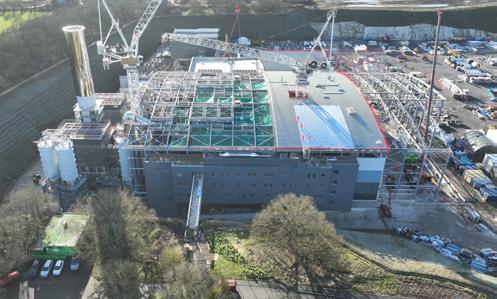
The enormous opportunity presented for energy production is the reason why the UK Secretary of State for Energy Security and Net Zero gave us permission, at the end of 2024, to
produce more energy than originally envisaged. The first permit was c. 49.9 MW. Now, there is no longer a limit and we may be heading towards 65 MW.
We are also investing in better energy production in our existing facilities. An example: in Biebesheim (Germany), thorough maintenance work has ensured that the energy recovery system is functioning optimally and we can now create more energy in the turbine. In concrete terms, we recovered more than 1 GWh more energy in 2024.
New project: Aberdeen (UK)
2024 was the first full year that Indaver managed the NESS Energy-fromWaste Facility in Aberdeen. In conjunction with the heat network operator, we conducted a series of tests to validate the heat supply from the facility.




Expansion of steam, heat and electricity networks
Our treatment plants produce green and reliable energy from the incineration processing of waste. We supply the energy that we do not use ourselves to large industrial customers and residential areas in the form of steam, hot water, green gas or electricity. As with energy efficiency, we look at opportunities for our new sites and optimisation opportunities for our ongoing projects.
Current project: Doel and Antwerp (Belgium)
In 2024, we started the expansion of ECLUSE, one of the largest industrial steam networks of its kind. The plan is to achieve an additional reduction of 150,000 tonnes of CO2 emissions with ECLUSE 2. Good to know: the steam produced by ECLUSE 1 and 2 is 50% ‘green’. More info on p. 67.
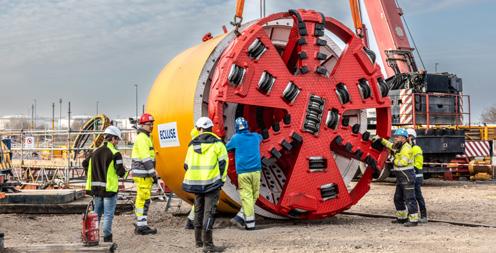
Focus area 6
Carbon capture and storage or useful reuse
In Alphen aan den Rijn (the Netherlands), we recover CO2 to reuse in useful applications in horticulture and industry. But we are also investigating at other sites how we can capture, store or reuse carbon. A good example is the Rivenhall Integrated Waste Management Facility in Essex (UK) – which was still under construction in 2024.

When industry and agriculture meet
At the Rivenhall site, we have plans to build a plant to capture thousands of tonnes of CO2 per year. Our partner, Oasthouse Ventures, will use that captured carbon to power and feed around 40 hectares of modern fruit and vegetable greenhouses next to the Indaver site – a nice symbiosis between industry and agriculture.
Indaver will use what remains of the captured CO2 for other sustainable applications, such as the production of e-methanol. The aviation sector can use e-methanol as a substitute for fossil fuels and thus reduce greenhouse gas emissions.
The application for all of these plans was submitted to the local authorities in early 2025.



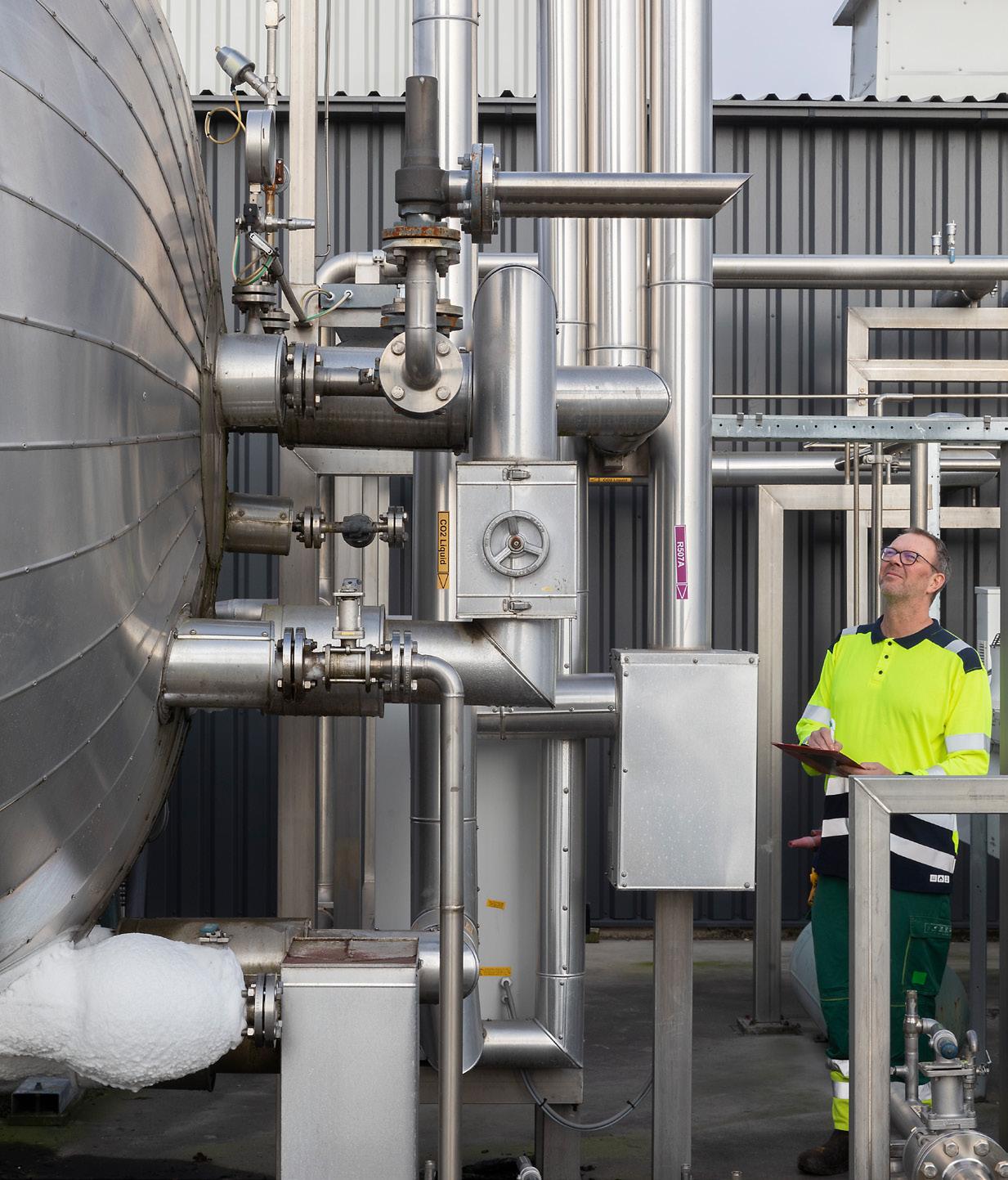
At our site in Alphen aan den Rijn (the Netherlands), we produce compost from organic waste streams. The composting process generates liquid CO2
Building a circular economy
Why important?
The Green Deal is the key means by which the EU is promoting the transition to a circular economy. It supports this transition through legislation, such as the Critical Raw Materials Act and the Packaging & Packaging Waste Directive (PPWD). There are good reasons for choosing a circular economy, including the following:
Protection of the environment
Circular production and consumption patterns limit the loss of biodiversity, reduce waste and safeguard our ecosystems. They also deliver a huge advantage in terms of CO2 emissions.
Less dependent on (the import of) raw materials
A circular economy reduces the demand for raw materials and reduces Europe’s dependence on other countries in this area. This is certainly important for critical and strategic raw materials.
Economic growth
The transition to a more circular economy can increase competitiveness, boost innovation, boost economic growth and create jobs (700,000 jobs by 2030 in the EU alone).
The circular transition and the energy transition: two sides of the same coin
Materials are also crucial to make the energy transition a success. For example, we need a lot of metals, minerals and other critical raw materials for our wind turbines, batteries, electric cars, cables and solar panels.
The circular economy does not eliminate the need for energy, but it encourages us to use energy more efficiently, to reduce primary energy consumption, and to switch focus to renewable energy. These ideas are also promoted and supported by the Green Deal. For example, through the Renewable Energy Directive III (RED III), there is a binding target for the share of renewable energy: min. 42.5% by 2030.
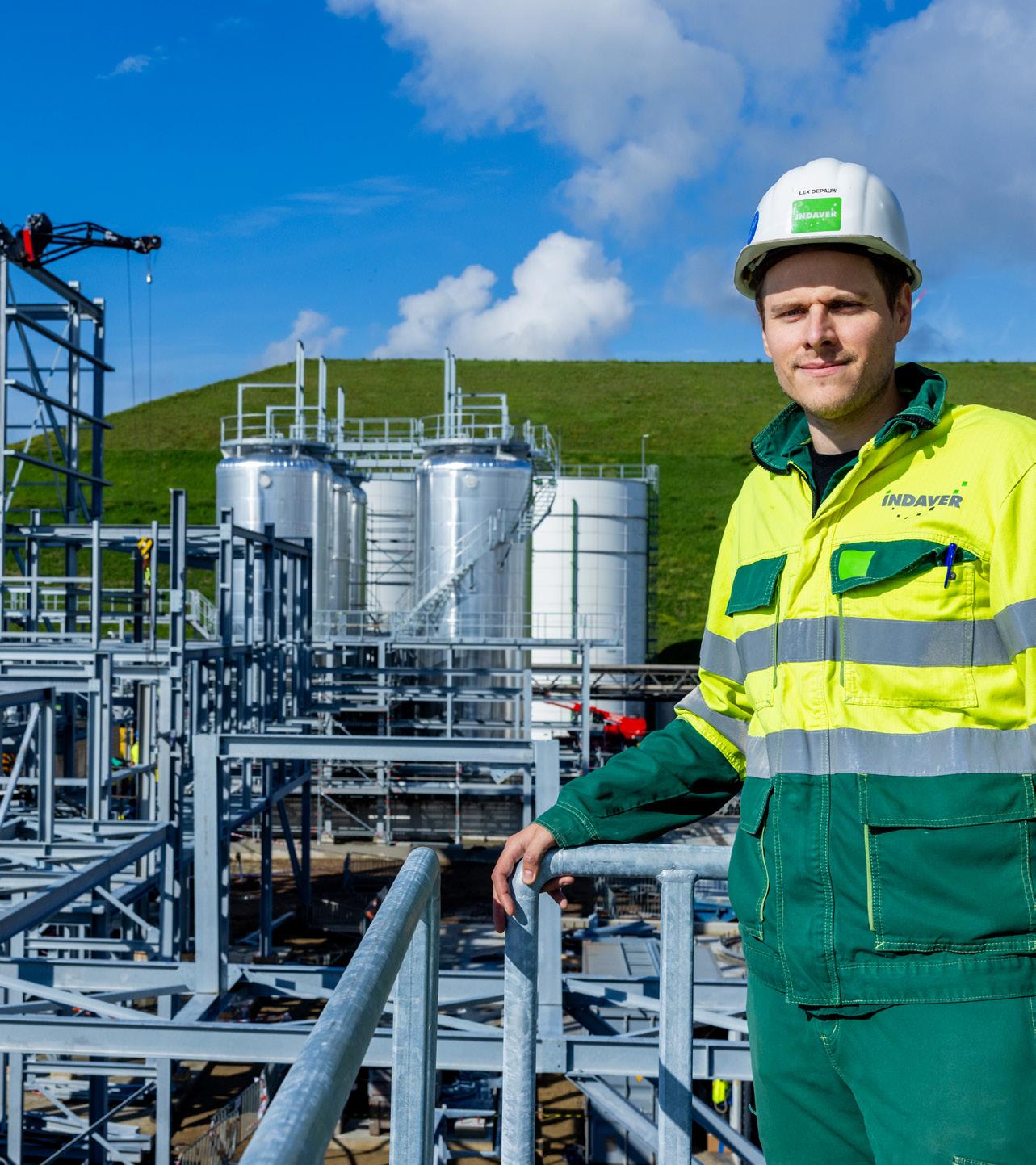
Our objectives and approach
Based on our strongly rooted systems approach, Indaver wants to actively contribute to the circular economy. A healthy living environment, a thriving society, a resilient economy ... they are all connected. Our contribution lies primarily in our role as an enabler: we create value from waste in the form of valuable reusable materials and clean energy.
Important: Indaver also contributes to the circular economy by keeping material and food cycles clean. Want to know more about our gatekeeper function? Go to the section ‘Protecting ecosystems’ on p. 73.

#1 Material extraction from waste: giving useful raw materials a new life
Indaver keeps materials in the cycle for as long as possible, with the highest possible value. What’s more, the secondary raw materials produced by Indaver meet the same quality requirements as the primary raw materials: they are pure, reliable and safe. This makes them a complete replacement in the production processes of industry and other sectors.
Indaver is increasingly focused on identifying which raw materials society needs – for example, palladium and certain basic chemicals. We then look at which waste streams lend themselves to this and which processing techniques we need to apply to them.
In this way, we try to recover pure and highquality materials that we are certain will be useful to our customers. We even go a step further by investing in projects that allow us to supply the raw materials directly to the companies.
#2 Energy production from waste: shaping the energy transition in a circular way
The increasing demand for low-carbon energy allows Indaver to further position itself as an innovative energy supplier. Through thermal treatment plants in Belgium, Germany, France, Ireland and the United Kingdom, Indaver is committed to maximum energy generation. We also recover as much as possible the methane released from landfills that contains a proportion of organic material in the form of green gas or electricity.
We use the energy we gain primarily for our own processes, but we are also supplying more and more energy to industrial customers and residential areas via heat, steam and electricity networks.
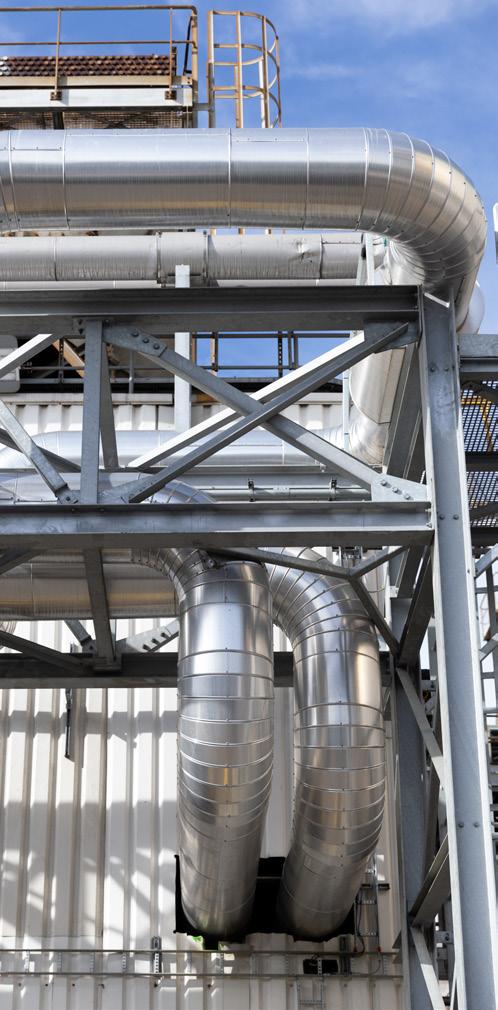
Our energy recovery in figures (2024)
MWh or the annual consumption of 96,055 European households (average 9.17 MWh per year per household of 2.3 people).
MWh or 105,492 electric cars driving around the world once (40,075 km at 21 kWh per 100 km).
Material extraction: our projects and initiatives in 2024
Plastics2Chemicals: from complex to circular plastics
Using the European Green Deal and the increasingly stringent targets for packaging as a guideline, Indaver continues to look for scalable and economically feasible recycling solutions for complex plastics. The goal is to scale up to Europe’s largest depolymerisation plant in Antwerp (Belgium) by 2029, with a capacity of 65,000 tonnes per year. After that, we want to roll out the concept further in other regions.
Ambitious legislation drives industry to take swift action
A circular approach is a challenge for all plastics, but especially for plastics that are still recycled to a limited extent today, including polystyrene and polyolefins. What does come back onto the market through recycling, the (petro)chemical industry is usually unable to use for the production of primary packaging due to the suboptimal quality of the recyclate – certainly not in the strictly regulated food sector. As a result, it is a problem for many companies to comply with all the latest EU legislation.
The good news: long before strict targets put the recycling challenges around ‘problematic plastics’ on the agenda, Indaver was already seeking out solutions. Stakeholders throughout the chain are reaping the benefits of our work today.
2017
Investigation
Investigation into technologies for the chemical recycling of (extruded)
Polystyrene (XPS and PS) and Polyolefins (PO) to include these plastic families in the circular economy.
Pilot project & validation
Start-up of the pilot installation to test the chemical recycling on real-life waste streams, in collaboration with the universities of Ghent and Antwerp.
2025 2029
Demonstration
Start-up of the pre-treatment facility in Willebroek and the demo plant in Antwerp to recycle (X)PS and PO.
Industrial scale
Start-up of an extra line in Antwerp and focus on circular solutions for (X)PS. As the largest depolymerisation facility in Europe, the site will be able to process about half of all European household (X)PS waste.
Internationalisation & optimisation
Construction of installations for the chemical recycling of (X)PS and PO at strategic locations across Europe. With our partners, we continue to optimise technologies and processes.
2024
How a first in chemical recycling closes the loop
Under the name Plastics2Chemicals (P2C), Indaver closes the chain to break down plastics on an industrial scale into high-quality basic chemicals, suitable for new packaging –including for food. Simply put, yogurt pots will remain yogurt pots from now on. And that is a European first!
How do we close the chain upstream?
The selectively collected packaging waste is carefully sorted in our PMD sorting plant. The end-products are bales of sorted monomaterials. These bales must first be loosened, further purified, then converted into small granules before P2C can chemically recycle them. We have been carrying out this missing link in the chain ourselves since 2024. To this end, we built a pre-treatment site in Willebroek.
How do we close the chain downstream?
Industrial customers are looking for highquality basic chemicals and we can supply them thanks to an innovative technology. The technology makes it possible to create raw materials that are equivalent to raw materials from fossil streams. In this way, we also help our customers to comply with the guidelines on minimal recycled content in new packaging.
“Our strength? In addition to chemical recycling, P2C, together with its parent companies Indaver and Katoen Natie, can also take care of sorting, pre-treatment, processing of residues and logistics services. And all this in its own installations. This way, suppliers of complex plastics and buyers of recyclate do not have to arrange any additional steps themselves. In short, we take care of everything in all areas.”
Korneel Van Aelst, Sales Manager P2C
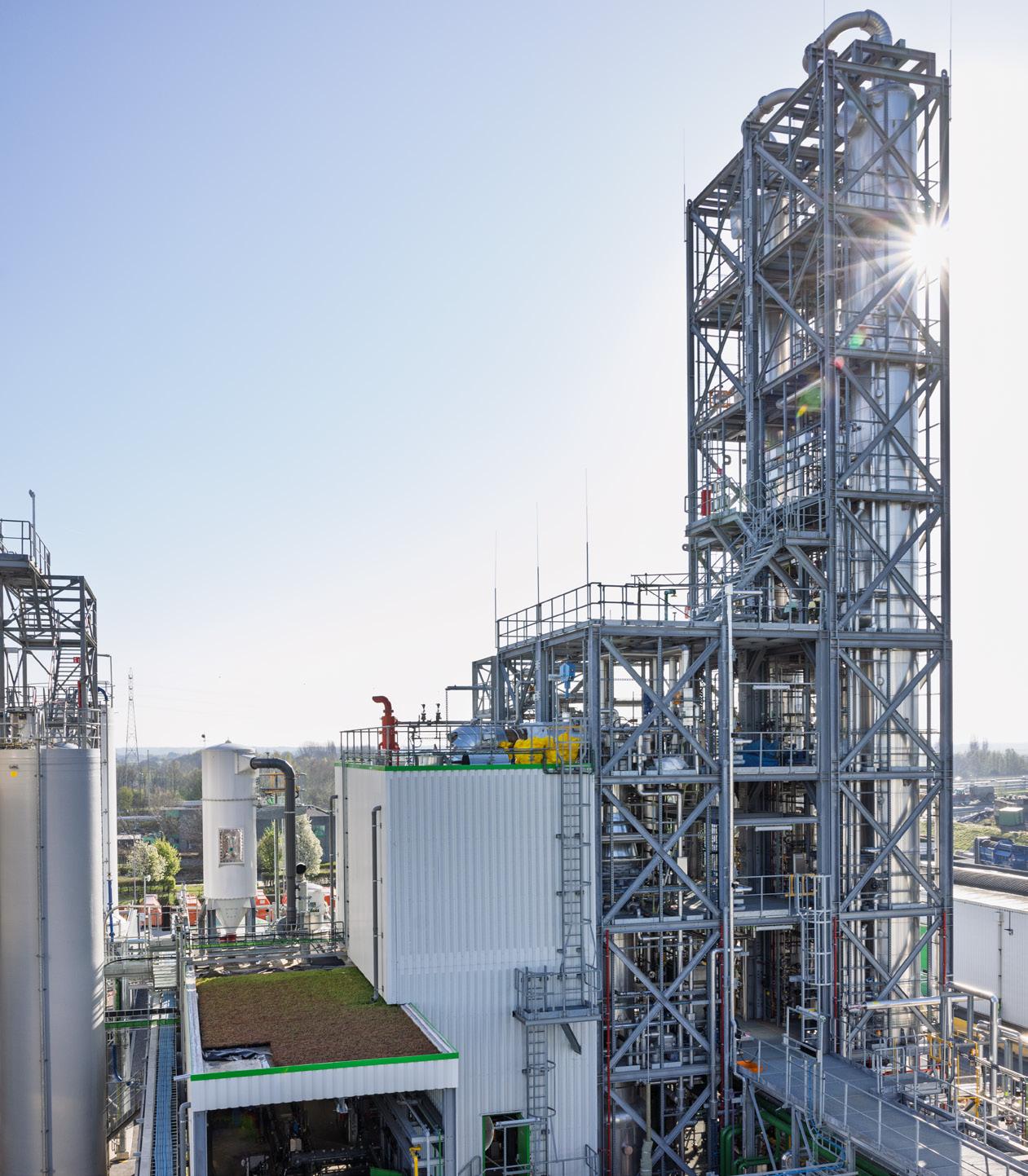
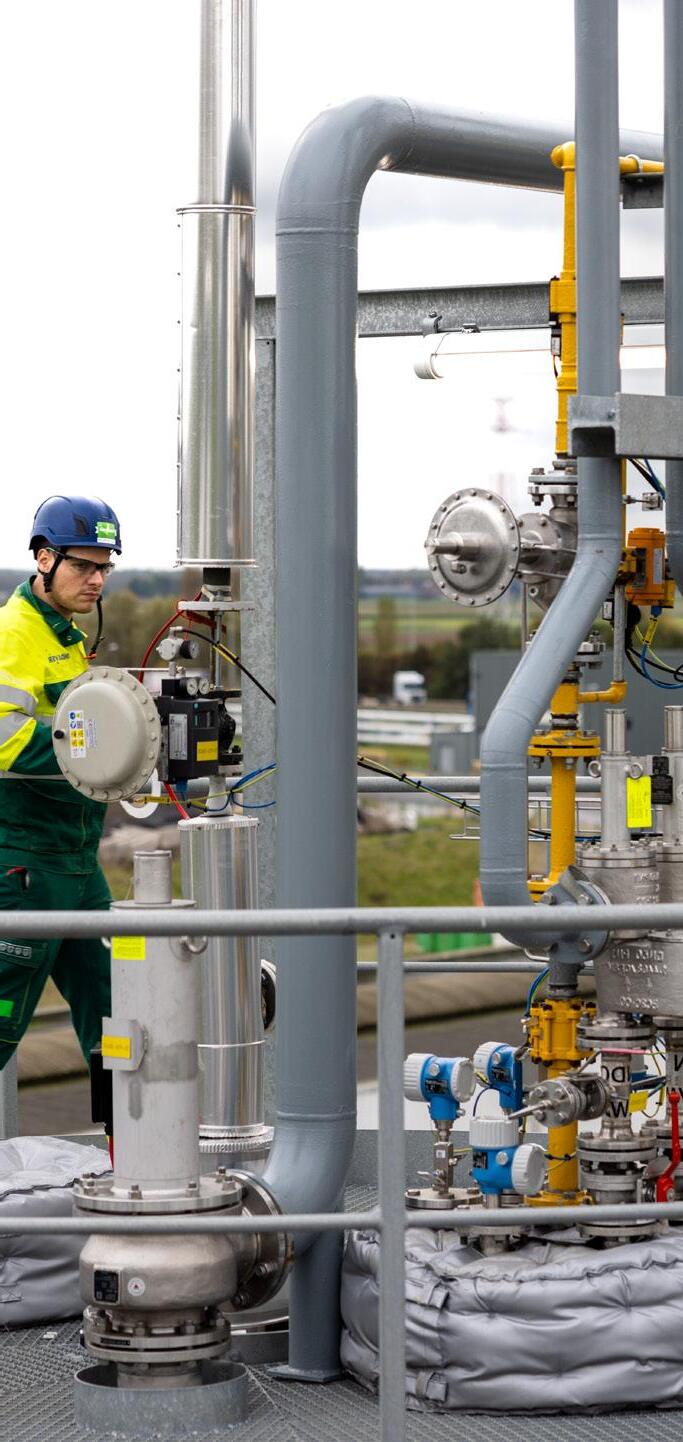
and initiatives in 2024
On the home straight to official start of P2C
In 2024, the most visible progress was the start-up of the plant in Willebroek. In addition, we finalised the construction of our state-ofthe-art recycling plant in Antwerp and tested all parts there to ensure optimal safety and quality. In 2025, we effectively start material recycling.
Much has happened behind the scenes at Willebroek in 2024. The installations and technology are only part of the story. Equally important is our license to operate. The granting of this license means that everything is ready for a sustainable process: from guaranteed feedstock to the right statutes and certificates for our end-products. Every detail was given a lot of attention in 2024.
26,000
65,000
A project with impact
Capacity
tonnes/year from 2029
or around 50% of Europe’s household (X)PS packaging waste.
Green operations in sustainable facilities, powered by renewable energy.
CO2 reduction in phase 1: 50,000 to 90,000 tonnes CO2-eq. per year.
Talent work for 100 additional full-time equivalents (FTEs) spread across Antwerp and Willebroek. tonnes/year in phase 1
Cooperation throughout the chain, from suppliers of end-of-plastics to buyers of basic chemicals.
Further develop expertise and include it in other recycling projects.
Want to follow all updates? Go to our P2C website.
Polystyrene: from end-of-life plastics to drop-in feedstock for industry
In the first months of the operations, we mainly focused on polystyrene (PS). The result: today, thanks to good chain cooperation, we can carry out several crucial steps, from the sorting of end-of-life plastics to the supply of r-styrene with the same quality and functionality as fossil feedstock. This service has been welcomed in the sector. For example, Trinseo will buy 50% of all r-styrene and INEOS Styrolution will purchase 50% of the styrene monomer.
Good to know:
we also want to go from end-of-life plastics to drop-in feedstock for polyolefins. That is why in 2025 we will work on a further purification step for the crude naphtha that we are now supplying.
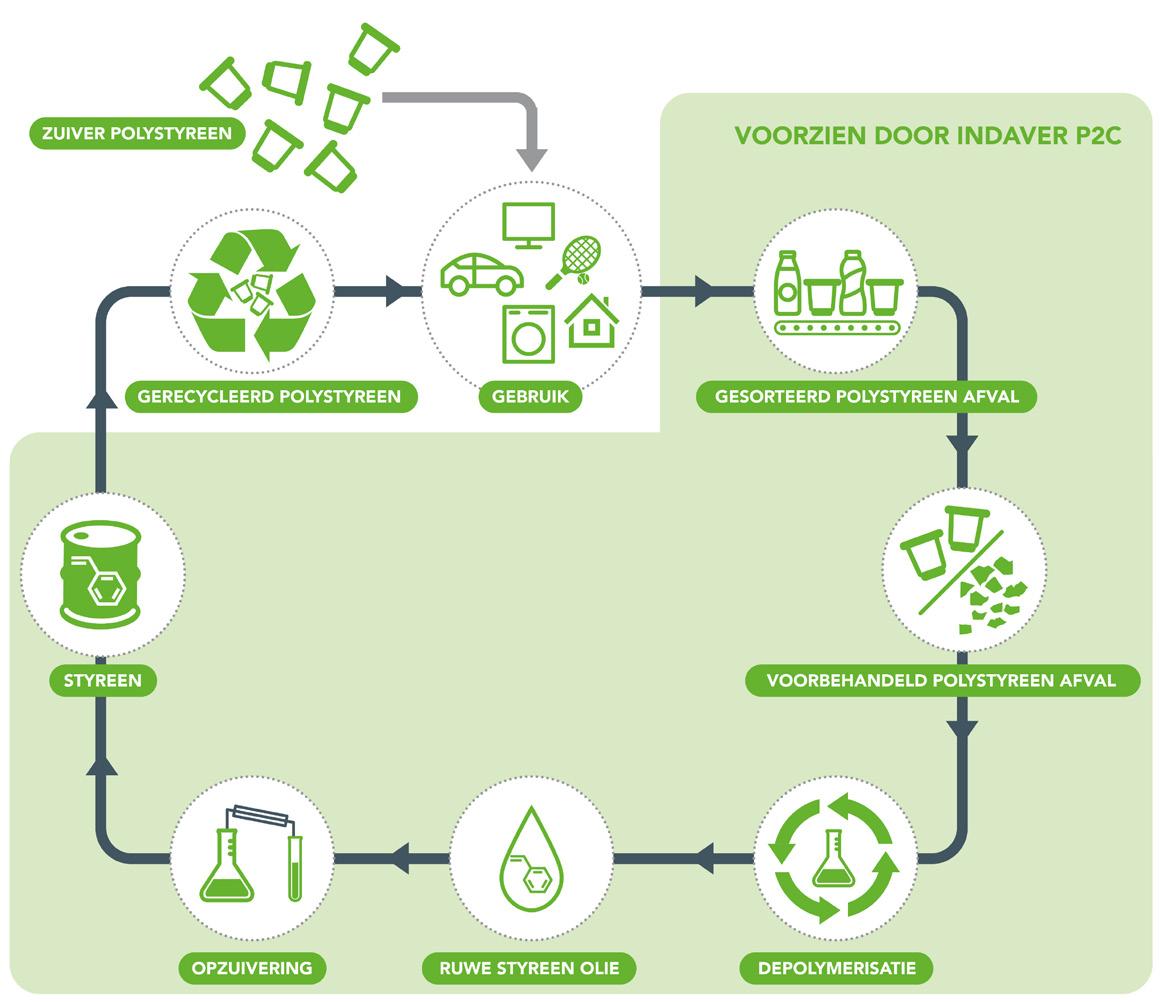
SUPPLIED BY INDAVER P2C
VIRGIN POLYSTYRENE
Recycling bottom ashes: now even more useful end-products
The bottom ashes that remain in our grate incinerators after the incineration of nonrecyclable household and similar industrial waste are treated further, because this residual flow also has circular potential.
By carefully washing, sieving and cleaning the bottom ashes, Indaver can turn them into raw materials for various applications. In 2024, we took important steps in the further reprocessing of increasingly high-quality materials from bottom ashes at various sites.
Ash treatment in Doel (Belgium)
In Doel, Indaver recovers valuable materials and energy from non-recyclable and nonhazardous waste. There is also an installation, on the same site, where we treat about 100,000 tonnes of bottom ash from our grate furnaces every year. We recycle a large part of this as granulate, but we also valorise bottom ashes as well as scrap, non-ferrous metal, gravel and sand. The bottom ashes from our fluidised bed incinerators are then validated by a partner.
An important evolution in 2024 was the start of our metal recovery from the fine fraction of bottom ashes from grate furnaces, specifically gold, silver and copper. By recovering these metals, we create economic and sustainable value. For example, the remelting of metals results in lower CO2 emissions than the extraction of primary ores and their import, while the process is also more energy-efficient.
Useful applications for recycled bottom ashes:
Ferrous and non-ferrous metals are sold as new raw materials to the metal industry.
Granules are useful for the construction of dykes because of their drainage properties. In addition, they are also used in the construction sector (e.g. in foundation work).
Sand fractions are put to good use in construction and stability applications in landfills. For example, the sand fractions serve as a protective coating.

Did you know that ...
Indaver has three raw material declarations for the use of bottom ash aggregates from the grate incinerators in Doel: for the production of legion blocks; for sub-foundations; and for concrete pavers. These granules have thus acquired the status of a product.
Study visit CEWEP
In September 2024, CEWEP, the European umbrella organisation of Waste-to-Energy installations, held a conference on ash treatment in Mechelen (Belgium). As part of that conference, a study visit took place to our shaft treatment plant in Doel – a great recognition of our expertise.
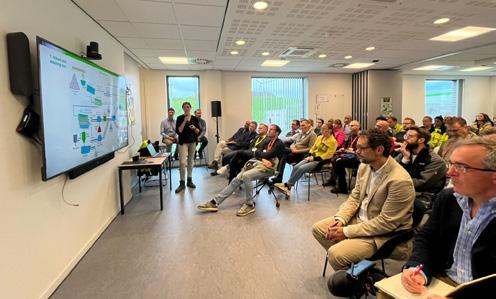
Ash treatment in Meath (Ireland)
In Ireland, a project was underway in 2024 with a specialist partner to determine whether the bottom ashes at our Waste-to-Energy facility in Meath were suitable for reuse in the industrial or civil aggregates market.
We expect that the ongoing trials will contribute to the preparation of an application for the End Of Waste status for the residues. In addition to current metal recovery conducted at the facility, this will further enhance the material recovery from the operation.
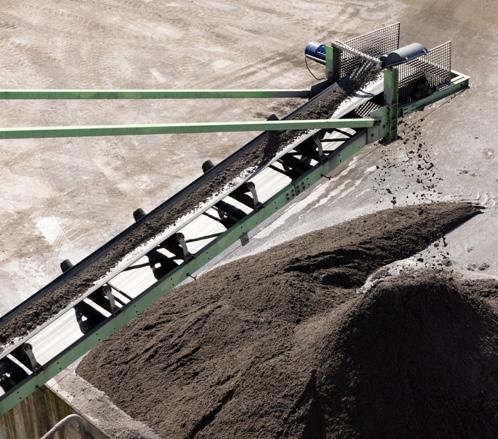
Ash treatment in Groningen (the Netherlands)
In Groningen, Indaver Mineral is exploring the possibilities of upgrading the bottom ashes of both Waste-to-Energy plants and biomass power plants into ‘clean products’. Until recently, bottom ashes were used as secondary raw materials or building materials, for example for the foundations of roads and embankments.
To avoid environmental impact, it was sufficient to isolate, manage and control the bottom ashes (IBC). Since 2024, sales under IBC conditions are no longer allowed in the Netherlands. In order to further valorise bottom ashes, we first need to reprocess them into freely applicable material.
Indaver is examining how we can do this. One option is to move the contamination to the washing water, and then purify it before it is discharged. In this way, the remaining contamination remains in the sewage sludge and we can store it safely. In addition, tests are currently underway to determine whether we can stabilise contamination in the bottom ashes through a process of carbonisation.
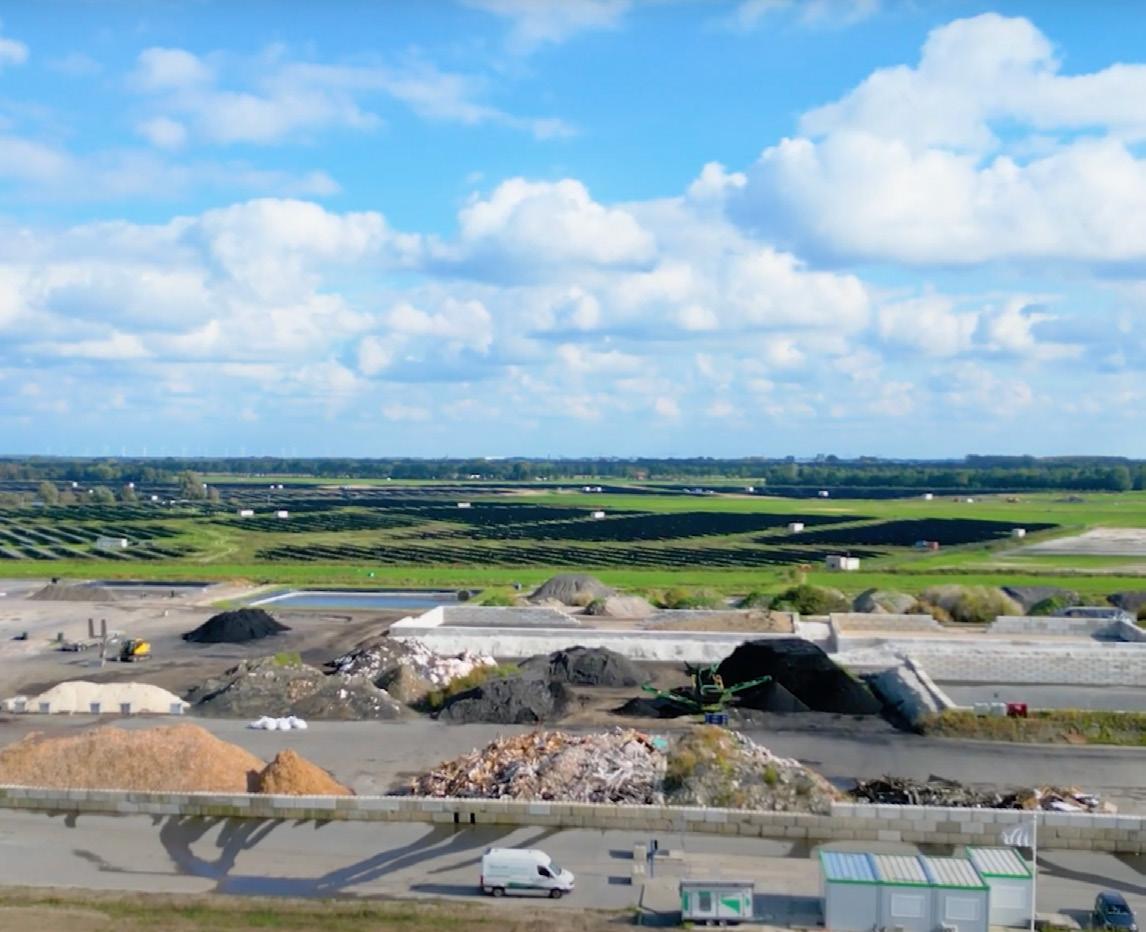
Inda-MP: Recovering Precious Metals from Liquids
At our Inda-MP facilities in Antwerp (Belgium), we recover precious metals from liquid waste streams. These valuable metals are used in various sectors such as pharmaceuticals, fine chemicals, agrochemicals, hydrogen production, fuel cells, and catalysts. However, after use they can be lost in water or solvent streams, or combinations thereof.
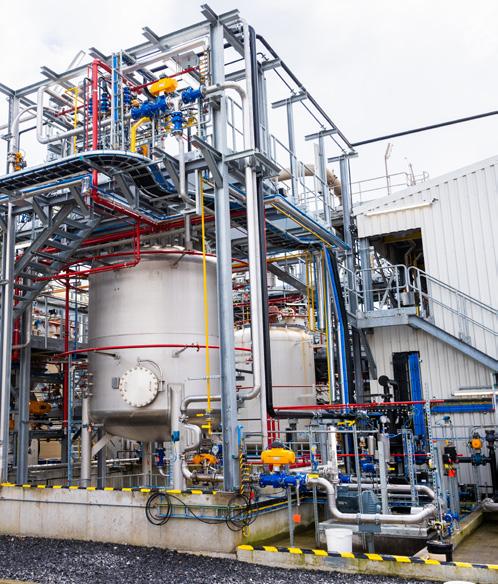
Inda-MP
as a
one-stop shop for customers
Recycling precious metals from liquid waste is our specialty, and we offer complete peace of mind. Indaver manages the entire process: from the logistics of the liquid phase to processing, recycling, and returning the refined precious metals. The valuable solvents are further purified by Indaver Solvents (more info on p. 64), while the hazardous components are safely destroyed and converted into energy.
New process line in 2024
With the second process line, we are not only increasing our capacity but also expanding our technical capabilities for processing a wide variety of liquids. Thanks to new technologies, we can process aqueous streams even more efficiently – whether they contain sediment, have a low or high pH, show high chlorine content, or include thermally unstable components.
The introduction of an additional process line was necessary as the volume of liquid waste streams containing precious metals is increasing. Indaver aims to support the circular economy by offering an appropriate solution for this.
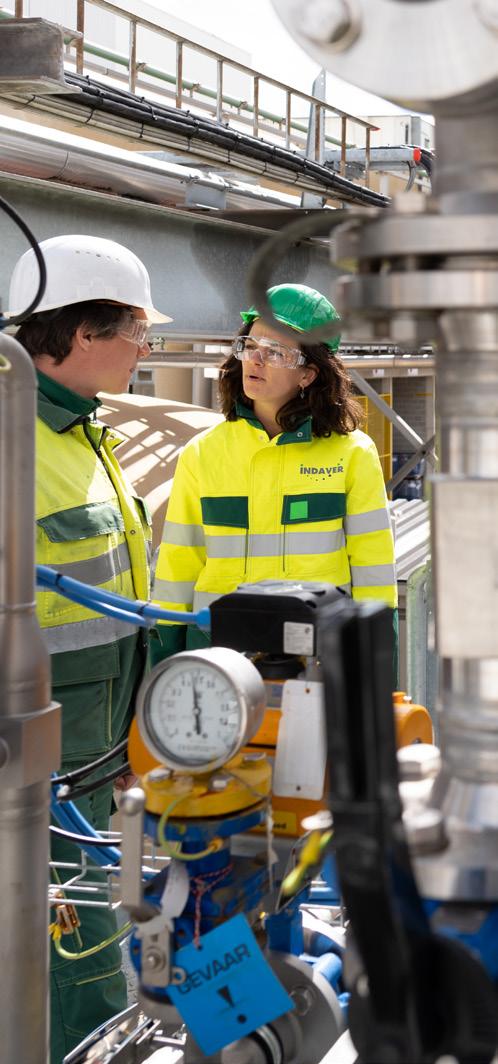
The total environmental gain since the start of Inda-MP in 2019
Precious metals such as palladium, platinum and ruthenium are precious and very scarce in Europe. But their extraction is carbon intensive. So, there are many reasons to recover secondary precious metals.
+2,500 kg palladium and platinum recovered +250 kg ruthenium
91,000 tonnes
CO2 avoided (no mining and processing of new metals)
20,000 tonnes solvents recovered

From organic waste streams to compost, biomass and energy
Indaver has 10 composting plants in the Netherlands. At these sites, we process organic residual flows, such as green and organic waste, into high-quality compost. We then make biomass from the woody residual flows to generate electricity. Finally, we also produce green gas and liquid CO2 in Alphen aan den Rijn. With these forms of material extraction, we contribute to a circular economy.
Three focus areas in 2024:
#1 Improving the quality of compost
Although all of Indaver’s Dutch sites have been Keurcompost certified for many years, we continue to make continuous efforts to improve the quality of our compost.
In Nieuwdorp, for example, together with our customer, the O.L.A.Z. (Public Entity Waste Removal Zeeland), we assess the quality of the organic waste supplied on a regular basis, according to an established protocol. The result:
the quality of Zeeland’s organic waste is among the top in the Netherlands, with an average of only 2.1% pollution – well below the pollution standard of 5% that is included in all Dutch organic waste contracts.
#2 Reprocessing of residual flows
In addition to useful organic waste streams, our sites will inevitably have to deal with residual flows. As far as possible, Indaver further purifies these residual flows to turn them into valuable end-products.
At our Europoort location in Rotterdam, we managed to go from 10% to 5% residual flow in 2024. The key to success: a new screening line. Thanks to this sieve line, we can convert most of the residual flows into biomass of consistent quality. We then sell that biomass as a clean energy source and only the last 5% residual flow goes to landfill – a considerable improvement!
#3 Exploring new opportunities
By redesigning processes and sites, Indaver is looking for new sales markets for its organic end-products.
One of the opportunities for compost is peat replacement. For example, there is a market in the Netherlands for potting soil with peat substitutes. Compost offers an ecological advantage as the extraction of peat is very sensitive to emissions. In the meantime, we are working hard to adapt production processes so that we can produce specific compost products for agriculture, potting soil and tree cultivation, among other things.
Other opportunities include the production of fibres for chipboard and building boards from organic waste, as well as the market for CO2 certificates via the green gas and liquid CO2 that we produce in Alphen aan den Rijn.
Indaver Solvents: from industrial waste to fine chemicals
Indaver develops large-scale solutions for solvent recycling. We use various technologies for this, such as pervaporation, fractionation and distillation, which we employ in our own recycling facilities throughout Europe. In this way, we offer a circular alternative to solvent waste that is currently used and/or exported for thermal processing.
Since 2024, we have been bundling all our solvent recycling activities under a new name: Indaver Solvents. With this industry, we are fully committed to sustainable growth based on innovation, strong ecological awareness and operational excellence.
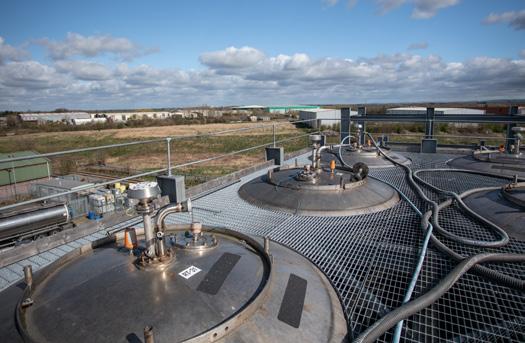
Indaver Solvents: high-quality material recovery
In our centralised recycling facilities, we use advanced technologies to convert solvent waste into high-quality solvents and fine chemicals – which find their way back into industry.
Middlewich (UK)
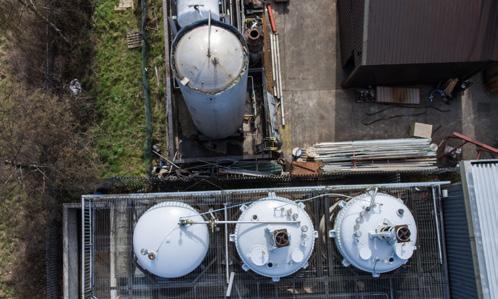

Improvement projects from 2024
Indaver Solvents is in full development: from capacity expansions and efficiency gains to new safety measures. This will allow us to process even more and more complex flows in the future.
An improved nitrogen-based plant protection system.
A new installation for the solvent Acetonnesitrile (ACN).
A new water-cooling system.
New storage tanks that score even higher for safety.
Renewed certification for ISO 9001 (quality) and ISO 14001 (environment)
We are committed to continuous improvement through international management standards. Our smooth recertification for ISO 9001 and ISO 14001 shows that we excel in this.
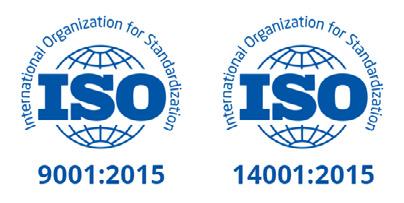

New: on-site solvent recycling
Depending on the volume and value of the recoverable solvents, on-site solutions such as a Build-Own-Operate project may be advisable. This decentralised approach provides additional benefits, such as reduced transportation.
Indaver Solvents can support and advise in all areas related to the development of such plants.
Antwerp (Belgium)
At our site in Middlewich (UK), we recover solvents with a capacity of 30,000 tonnes a year.
Energy production from low-grade solvents
Low-quality solvents that are not suitable for recycling are pre-treated via blending. This makes them suitable as a replacement fuel in cement kilns. In other words, blending is an application of energy production. Indaver also offers solutions for this with its specialised blending plants.
More projects on material extraction
Indaver is shaping the future of battery recycling together with VITO
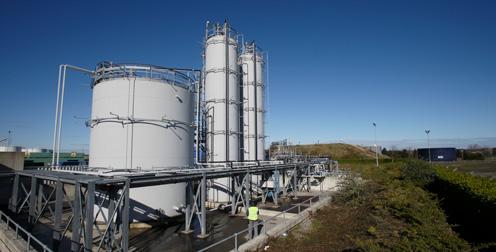
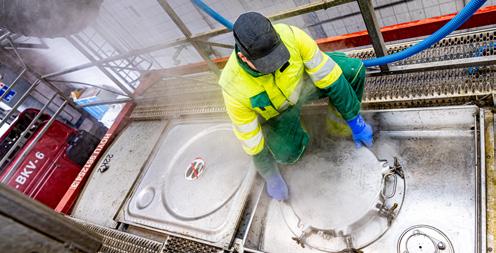
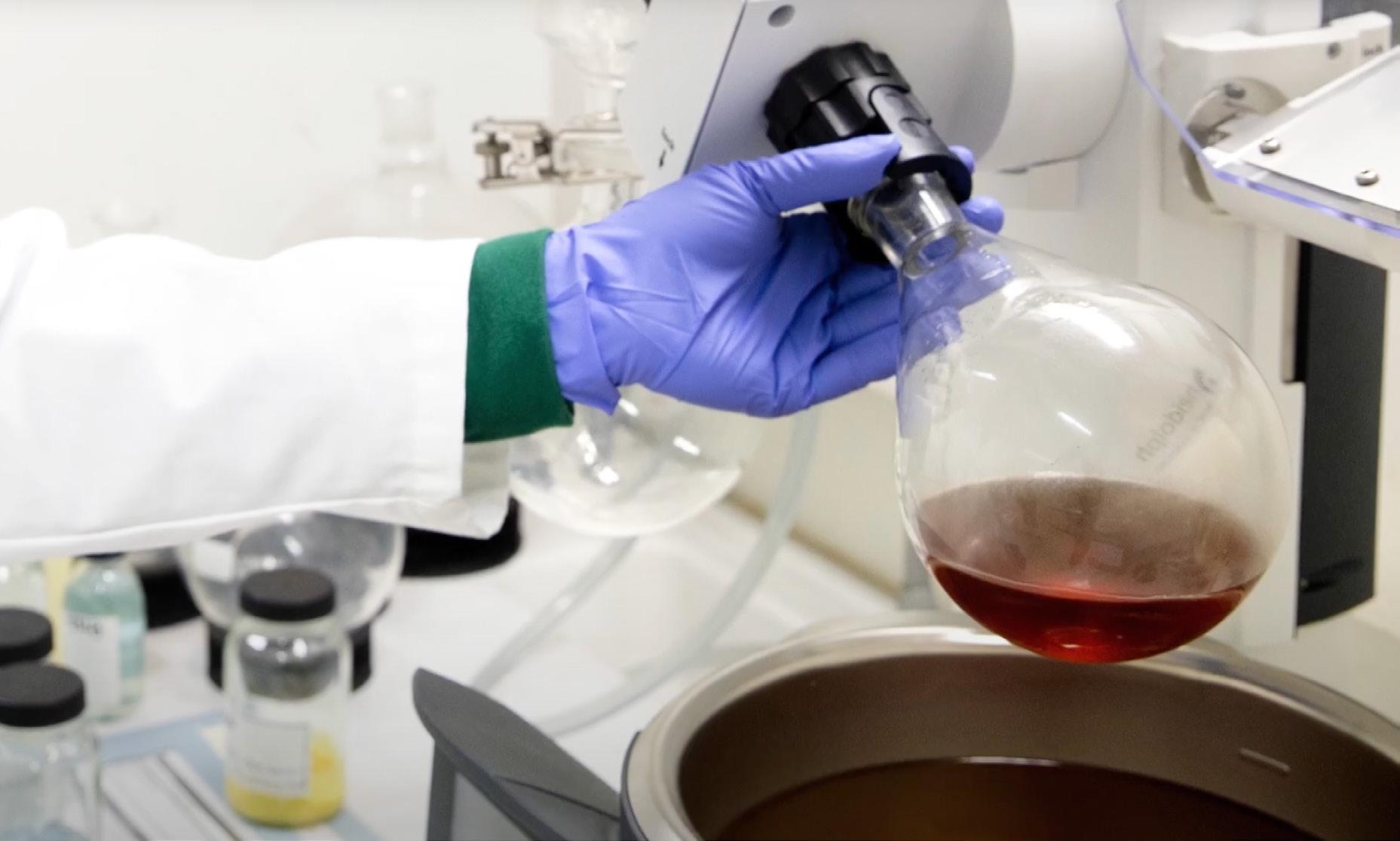
Indaver Solvents is a partner in the Innomem project ‘MEM4BAT’, together with VITO, the Flemish Institute for Technological Research. The core innovation of this project is to filter and recover critical metals from waste solvents using advanced membrane processes. These technologies not only provide the high degree of purity required for reuse in various industries but also drastically reduce CO2 emissions.
See how we are paving the way for sustainable, efficient solvent recycling in the rapidly growing battery industry.
Port of Dublin (Ireland)
Terneuzen (Netherlands)
Energy production: our projects and initiatives in 2024
WAN: renewable energy for industry and homes
Together with Port of Antwerp-Bruges (Belgium), Indaver realised the Antwerp North Heat Network (WAN). Since the end of 2023, Boortmalt, the largest malting plant in the world, has been using the residual heat from the Indaver rotary kilns to make malt from barley. The first year was a great success. In a second phase, grid operator Fluvius will build a residential network.
Festive inauguration
On 29 February 2024, Antwerp Mayor Bart De Wever – now Prime Minister of Belgium –pressed the symbolic start button to start using the Antwerp North Heat Network.
Watch the aftermovie:
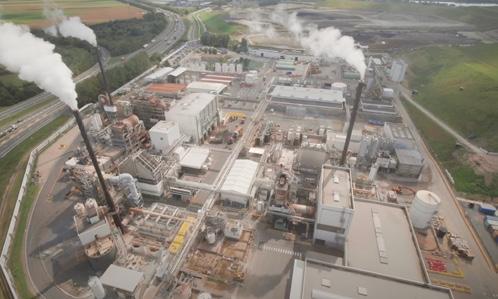
A project with two objectives
#1 Energy for companies:
the industrial heat network is an ‘open access’ network. This means that any nearby company in the port can join – either to supply residual heat or to purchase residual heat. In 2024, Indaver was the only supplier of residual heat and Boortmalt was the only industrial customer (90%). Thanks to WAN, the malting plant saves the equivalent of the natural gas consumption of 10,000 households.
#2 Energy for local residents:
grid company Fluvius is building a residential network that is linked to WAN, which will allow schools, public buildings and 3,200 family homes to be heated sustainably. The commissioning of this network is scheduled for August 2025.
Once the full capacity of the heat network has been reached, it will result in 80,000 tonnes less CO2 emissions. This makes WAN a crucial part of the City of Antwerp’s urban climate policy.

Indaver supplies residual heat to Boortmalt via the Antwerp North Heat Network.
ECLUSE 2: ECLUSE steam network dives under the Scheldt
Since 2019, the ECLUSE steam network has been supplying five chemical companies on the left bank of the Scheldt in the Antwerp port region (Belgium) with process steam. This comes from Indaver’s and SLECO’s thermal treatment plants in Doel. In 2023, ECLUSE received a permit to expand to the right bank of the Scheldt and work started in early 2024. How do we get to the other side? Under the project name ECLUSE 2, the partnership is constructing a tunnel under the Scheldt for energy transport. A strong partnership
ECLUSE is a collaboration between Indaver, SLECO, FINEG, Water-Link, Port of AntwerpBruges and Scheldt Left Bank Corporation.
ECLUSE 2 in 5 questions:
#1 Why is ECLUSE expanding?
Our Waste-to-Energy site in Doel can supply more steam than is needed by its neighbouring companies in the Waasland Port. At present, we convert the steam that is not used into electricity. However, it is far more energyefficient to use steam directly. That is why the partnership was looking for additional buyers of the generated steam.
#2 Who will use ECLUSE 2?
Evonik signed up for the project. After all, the chemical giant uses a lot of steam, a need that is being met by natural gas today. By using steam from waste processing, Evonik will save the annual consumption of natural gas for 38,000 households. To achieve this, ECLUSE must first build a tunnel under the Scheldt to connect the two banks of the river.
Important: once the Scheldt tunnel is in place, other companies on the right bank will be able to join the network. The tunnel will also provide space for cables and additional pipelines to transport chemical products (hydrogen, chemicals, etc.).
#3 What is the status of ECLUSE 2?
The goal is a 1.5-kilometre tunnel and a pipeline to the Evonik site. In 2024, the proverbial shovel went into the ground and we built shafts 15 metres deep along both banks. In March 2025, a tunnel-boring machine started connecting the banks, about 30 metres underground. The tunnel should be completed in the summer of 2025, after which the followup works will commence.

ECLUSE 2: technical tour de force requires unity
The project requires precision work because the works run very close to high-voltage lines and also crossroads and train tracks. It was quite a challenge to get all involved parties on the same page in 2024, from grid operators to nature organisations. But now everyone understands the long-term sustainable impact of this project and we have worked together on constructive solutions.
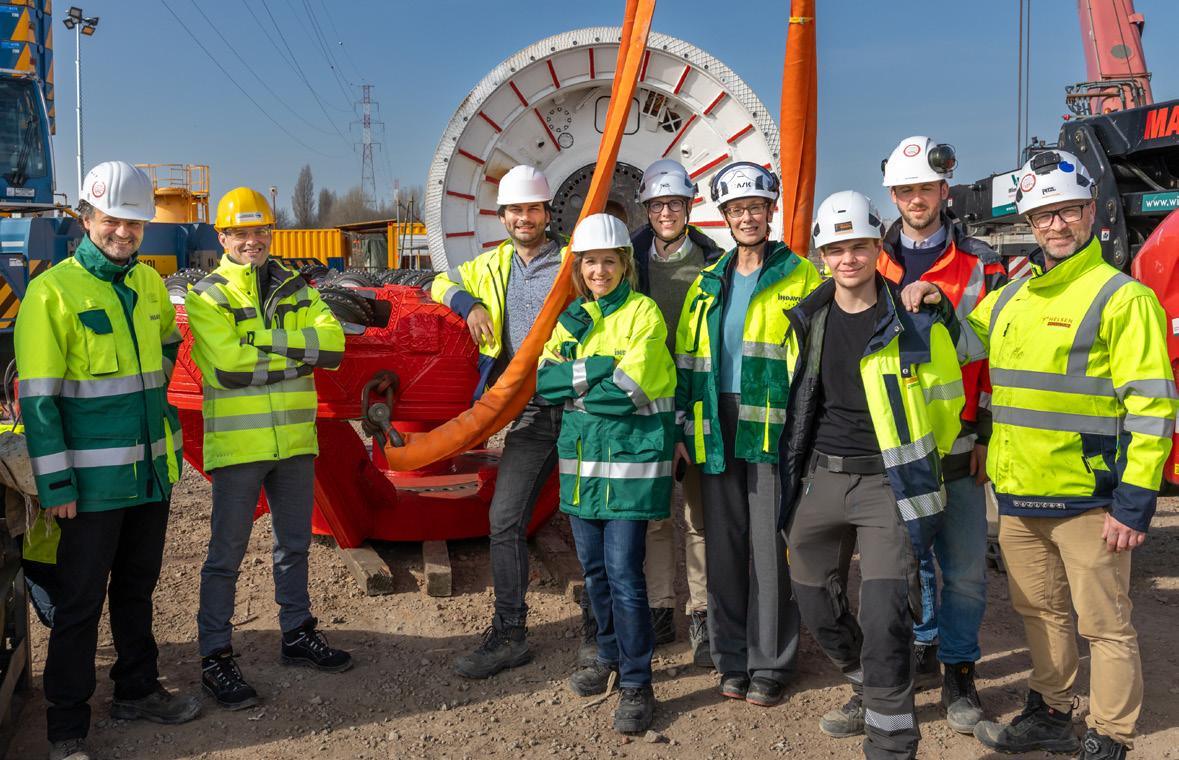
#4 What are the advantages of ECLUSE 2?
Less fossil fuels, more renewable energy: companies can save significantly on fossil fuels by switching off their own installations. The steam they use from ECLUSE is 50% green.
Reduce CO2 emissions: when ECLUSE 2’s full capacity is in use, CO2 savings could amount to more than 150,000 tonnes per year.
Energy and climate targets: ECLUSE 2 will make an important contribution to the National Energy and Climate Plan for 2030 because it can meet up to 24% of the target for the growth of heat networks.
Stronger industrial cluster: making the energy supply more sustainable within an industrial symbiosis through physical connections strengthens the bond between companies in the Antwerp port area.
#5 What does the future look like?
The primary goal is to further distribute the high-quality steam to companies in the area. But there will also be an opportunity to make the connection between existing and future heat networks in Antwerp at a later date. This can be done with condensation water that is still about 80°C warm. This means the possibilities for valorising the steam from our site in Doel have not yet been exhausted.
The project team of ECLUSE 2 receives the drilling machine that will drill a tunnel below the river Scheldt.
Under construction: an innovative Solar Park on former landfills
Indaver has begun construction of a Solar Park on the flanks of the Antwerp and Hooge Maey landfills. This state-of-the-art Solar Park is the final piece of a broader energy cluster and will generate 21 GWh of green electricity annually.
A modern solar project in a precarious environment
The Solar Park will cover an area of 20 hectares of marginal land, i.e. land that is underused due to socioeconomic reasons, low productivity, pollution or temporarily fallow. We will have 32,000 solar panels installed there from 2025.
In doing so, we will make sustainable design choices:
Optimal soil conditions: small panel tables and decent spacing between the panels will ensure that sufficient sunlight reaches the soil, resulting in healthy vegetation.
Erosion protection: thorough studies of stability and erosion control will ensure the sustainability of the park.
Manual installation: to protect the fragile soil of the landfill, manual installation of panels will be employed instead of heavy machinery.
Part of a broader energy cluster
The future Solar Park, together with other technologies, will make Indaver’s energy supply more sustainable. For example, there are already wind turbines in situ and landfill gas (methane) is actively being extracted at the site and converted into electricity.
Indaver also valorises the energy released from our thermal treatment of waste through a combination of electricity production and the supply of residual heat via the Antwerp North Heat Network to maltproducer Boortmalt.
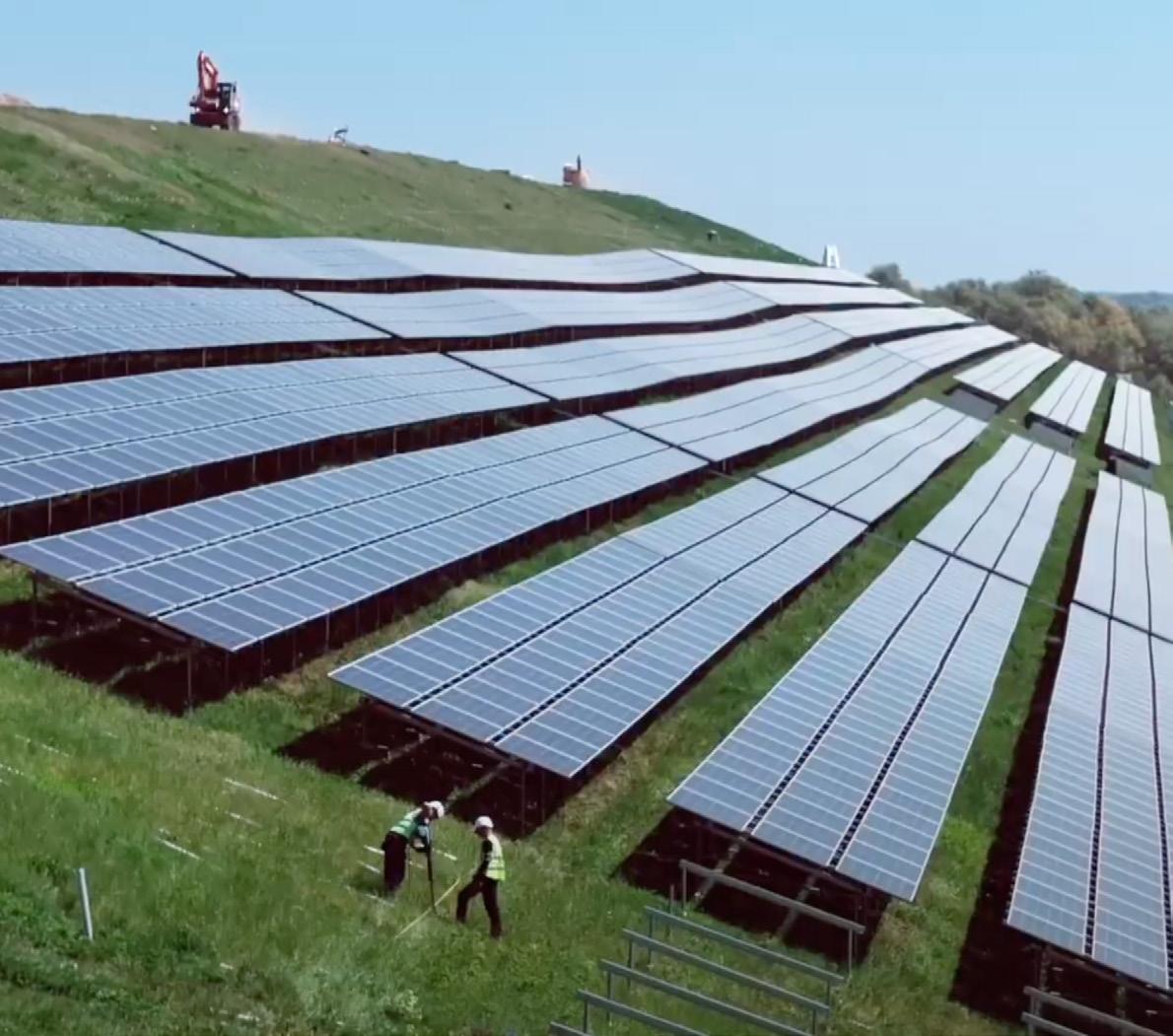
Rivenhall site almost ready to generate over 50 MW
In the United Kingdom, Indaver is building its largest Waste-to-Energy plant. The plant at the Rivenhall Integrated Waste Management Facility (IWMF) in Essex will treat 595,000 tonnes of non-recyclable household waste and similar industrial waste annually. During processing, we will generate more than 50 MW of electricity.
Expected start-up at the end of 2025
At the moment, the Rivenhall site is still under construction, but in 2024 we made good progress. For example, all of the large machines and devices are now in place, including the turbine that will generate electricity from the processing of waste. In short, everything is on track to be operational by the end of 2025.
99% processing capacity contracted
The facility will soon be up and running at full speed, as the full capacity is already reserved for several contracts. In August 2024, for example, Indaver won four contracts for residual waste-processing from Essex County Council. These contracts cover a total volume of 337,000 tonnes per year with an initial duration of seven years.
In 2024, we also received confirmation of the renewal of Essex County Council’s POP waste (POP = Persistent Organic Pollutants) contract. We are processing this waste through subcontractors until our own site becomes operational.
New: permission to generate unlimited energy
The Waste-to-Energy plant distinguishes itself with highly efficient boiler and turbine designs. This allows us to extract maximum energy from the waste.
That is also the reason why the UK Secretary of State for Energy Security and Net Zero gave us permission, at the end of 2024, to produce more energy than originally envisaged. The first permit was c. 49.9 MW. Now there is no longer a limit and we may be heading towards 65 MW.
3 facts about the Rivenhall site
#1
The installation will be built into the ground at a lower level so that it blends into the flat landscape as much as possible and causes as little disturbance as possible to its natural environment. This largescale operation involved the excavation of 2.5 million tonnes of soil, which we then used to restore various parts of the site to their original level and make them suitable for agriculture.
#2
To support the local food supply, Indaver wants to capture carbon through a new plant and supply it to modern greenhouses around the site.
The greenhouses will grow tomatoes. Extra CO2 can greatly promote the growth of crops –up to 30%.
#3
The site was a base of the British Royal Air Force (RAF) during WWII. We are setting up an experience centre for visitors in one of the surrounding farms. This will be an on-site museum and the starting-point for the public tour of our facility.
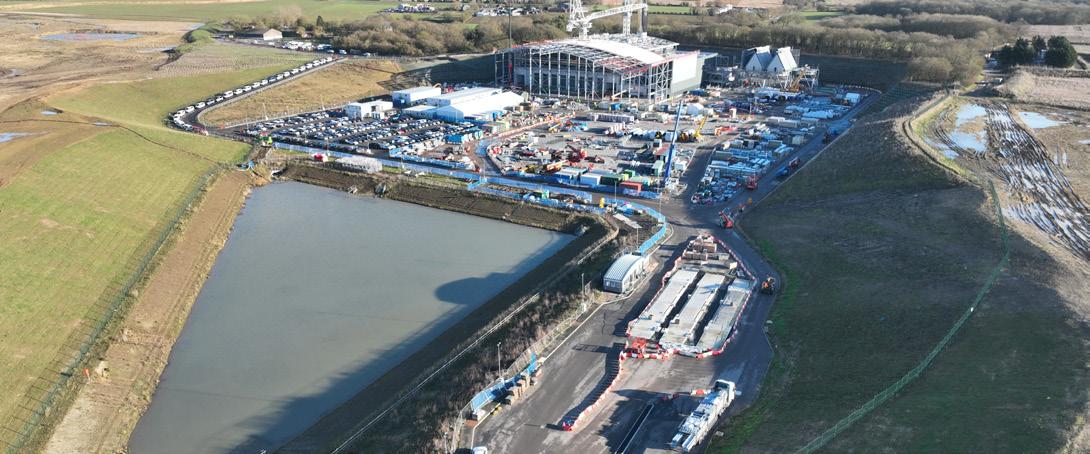
FOSTER: sludge as a valuable source of energy
On the ArcelorMittal Belgium site in the port of Ghent (Belgium), Indaver and BESIX – together FOSTER – are building a high-tech installation for the thermal treatment of water treatment sludge on behalf of water purifier Aquafin. The plant will extract green energy and bottom ash from the sludge. In a second phase, Aquafin plans to recover phosphorus from the residues.
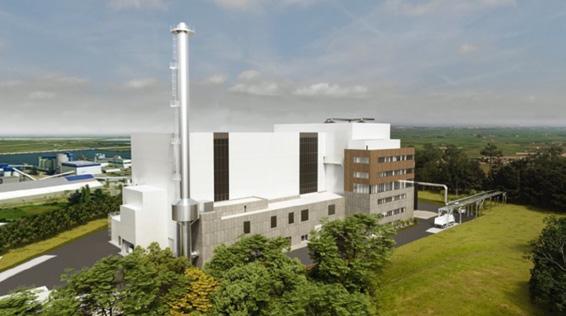
Approval of permit and start of construction
In 2024, FOSTER was given the green light for the design, construction, financing, operation and maintenance (until 2046) of a new sludge incineration plant. The plant will only process Aquafin’s sewage treatment sludge, which comprises two-thirds of the sewage sludge of all domestic wastewater in Flanders, i.e. of 4 million inhabitants.
The works started at the end of 2024 and are progressing well. The first phase of the civil preparation works was slated for completion in March 2025. After that, the construction of the thermal processing section will start. The end of the works is scheduled for 2027.
Maximum recovery of energy and materials
The plant will process the biomass that remains after the treatment of the domestic wastewater. This biomass, which comes from the growth of the microorganisms that do the purification work, contains a wealth of energy and raw materials.
Since the installation is a mono-processor, and therefore only processes sludge, the installation will be even better able to recover raw materials from the biomass supplied.
Choice of location according to CO2 impact
The installation will be located on the site of ArcelorMittal Belgium, which grants Aquafin a right of superficies on the site. The company will purchase the entire steam production from the sludge treatment as an additional feed for the internal steam network. In this way, the installation will contribute to the steel producer’s sustainability strategy.
In addition, a data model has shown that the centrally located port of Ghent is the best place to limit the CO2 impact of sludge transports in Flanders.
Towards even more impact: phosphorus extraction
See the progress we made in early 2025.
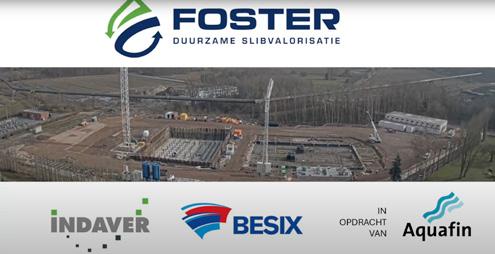
See how FOSTER is pioneering sustainable waste processing.

In a follow-up project, Aquafin wants to recover phosphorus from the residues of sludge processing. Phosphorus is an essential buildingblock for all life. For example, it is used in modern agriculture, in the form of phosphate, as fertiliser.
Phosphorus ends up in wastewater via human urine, and from there in sewage sludge. By opting for mono-processing of the sludge, FOSTER will be better able to recover the phosphorus. This will make Flanders less dependent on exploitation in foreign mines.
More projects on energy production
E-Wood power plant in Doel (Belgium)
E-Wood, a 50-50 collaboration between Indaver and Veolia, will produce around 20 MW of renewable energy annually from non-recyclable waste wood (e.g. from recycling parks). In the first instance, this is supplied as electricity on the high-voltage grid. In the second instance, E-Wood supplies steam directly to companies in the Waasland port via the ECLUSE steam network. In this way, they can significantly improve their ecological footprint.
In addition, E-Wood also contributes to a more sustainable energy mix in general and thus to the objectives of Belgium and Europe.
Discover E-Wood.
NESS Energy-from-Waste Facility in Aberdeen (UK)
In Scotland, Indaver has been managing the NESS Energy-from-Waste Facility since December 2023. The plant treats around 150,000 tonnes of non-recyclable municipal waste from a number of municipalities in northeast Scotland.
In 2024, we conducted some successful tests to evaluate whether we can supply the heat released during waste incineration to the heat network operator that supplies heat to nearby residential areas.
During 2025, the heat network will continue to grow and the facility will continue to provide increasing levels of heat.
Discover the NESS project.
Greater contribution to the energy grid in Hamburg (Germany)
In Hamburg, our rotary kilns have been supplying energy to the city grid for years. The optimisations we carried out there in 2024 will allow us to valorise even more energy:
The switch to systems that guarantee the same qualitative operation without preheating will allow us to supply more steam to the grid.
By recovering more energy from flue gas condensation, we will soon be able to provide as many as 30,000 additional households with clean energy (project approved in 2024).
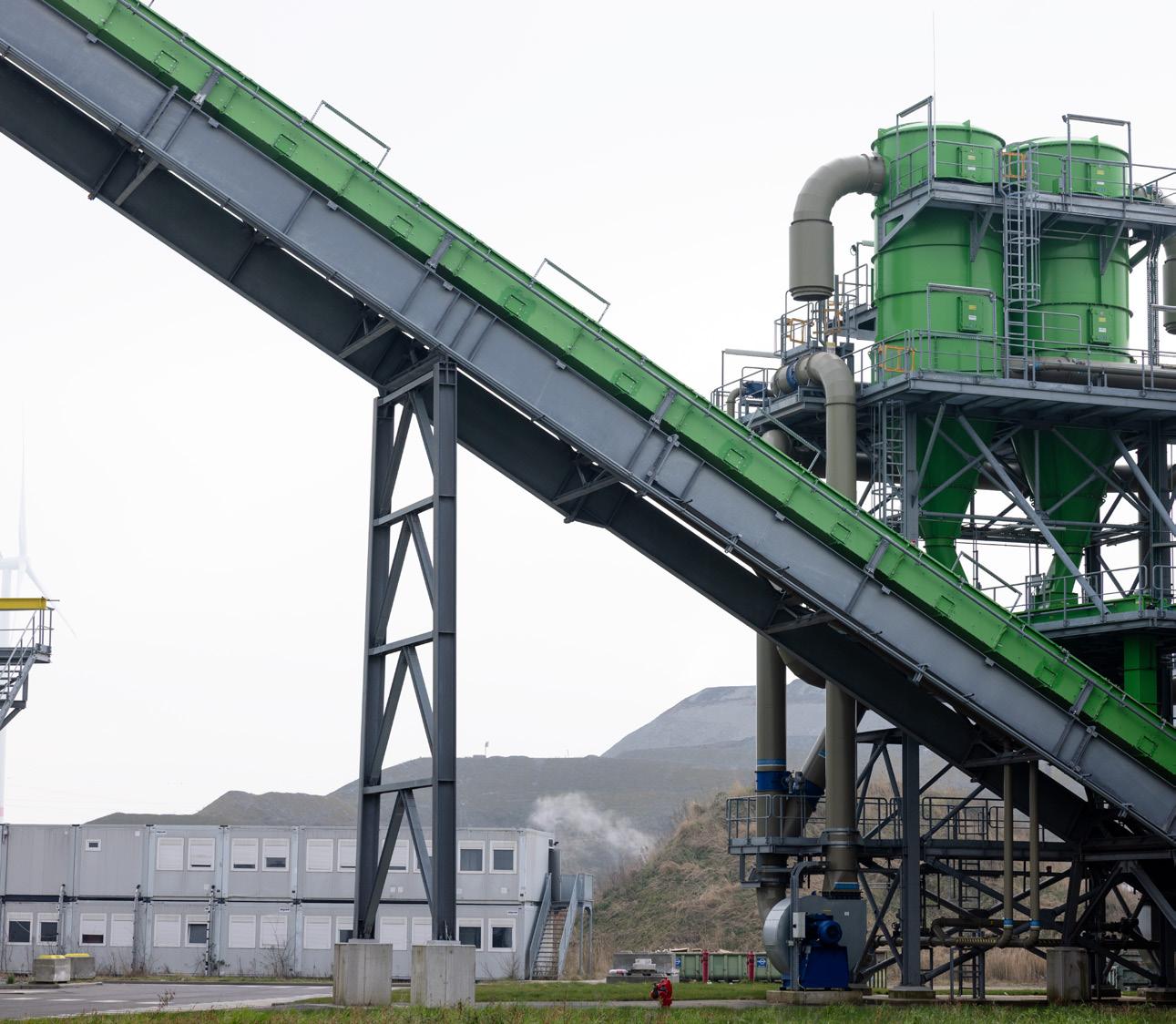
E-Wood will produce renewable energy from non-recyclable waste wood.
Protecting our ecosystems
Why important?
Europe’s ecosystems are at risk from persistent pollution of water, air and soil, and several reports were published in 2024 urging quick action:
Water
According to the European Environment Agency, Europe’s water resources are under serious pressure, with hardly any significant progress since 2009. For example, less than 40% of all surface water is currently in a healthy state, while almost 25% of the groundwater – from which we get two-thirds of our drinking water –has a questionable chemical status.
Air
Air pollution is one of the biggest environmental risks to the health of Europeans. According to a report by the European Court of Auditors, air quality is improving far too slowly, especially in our cities. Air pollution in Europe also remains well above the recommended level of the World Health Organization.
Soil
There is little reliable data on soil pollution in Europe and there are large regional differences, but several reports point to the accumulation of heavy metals and Persistent Organic Pollutants (POPs) in our soil despite the efforts of the industry and transport sectors.
These forms of pollution threaten our competitiveness, our food security, our agricultural productivity, our biodiversity and our resilience to extreme weather events and climate change. That is why Europe is drafting increasingly strict legislation as part of the Green Deal.
Objectives enshrined in legislation
The relevant legislation for our sector includes the renewed EU waste legislation, regulations on industrial emissions, the expanded lists of pollutants, and the tighter framework for the transition to the circular economy.
A concrete example within the circular economy: secondary raw materials must have the same qualities as the primary raw materials they replace. In addition, undesirable and harmful substances must never return to the materials or food cycles. Laws and regulations provide the frameworks for the safe processing and final storage of these residual fractions.
Zero ≠ zero
The EU wants to reduce pollution to levels that are not harmful to people and the environment. It uses the term ‘zero pollution’ for this.


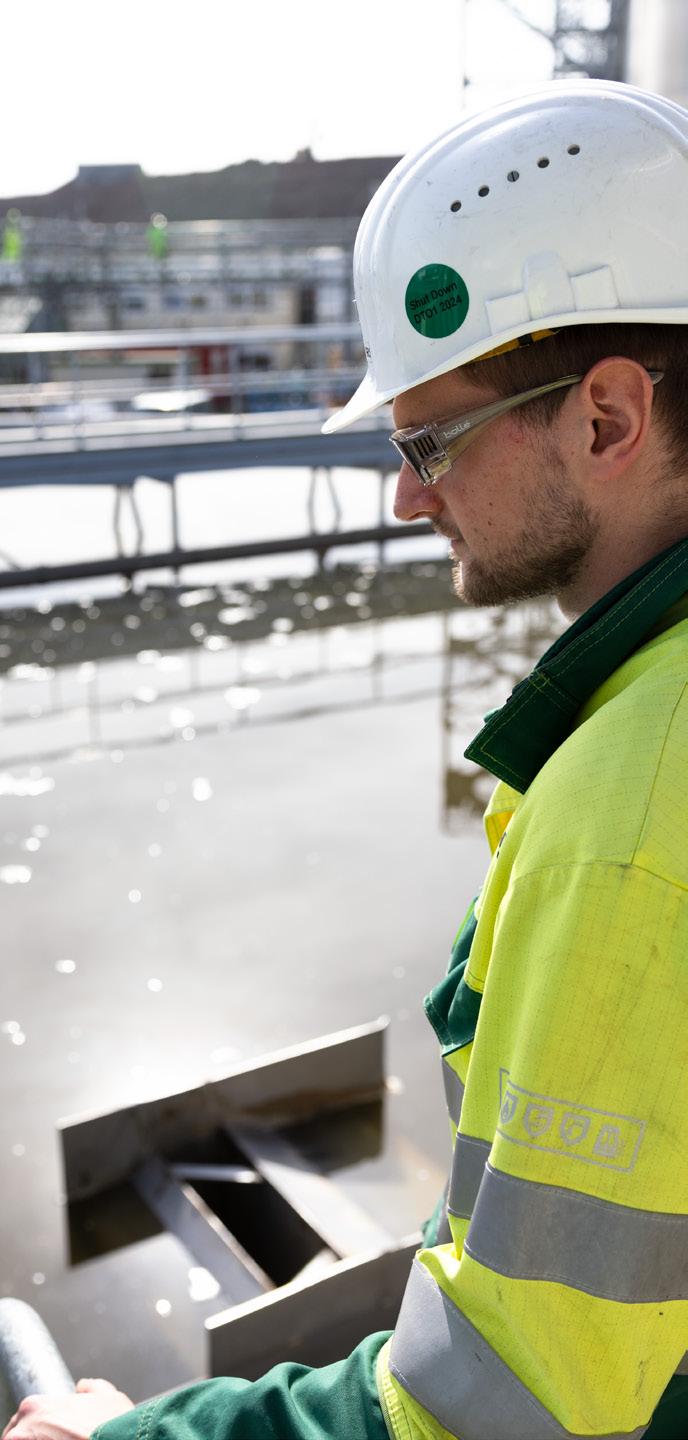
Our objectives and approach
Indaver has been offering sustainable solutions for the treatment of hazardous waste since its early years. For example, we remove harmful substances from the cycle in a sustainable, safe way by destroying them at a high temperature or through safe storage. This is how we protect our ecosystems, with benefits for industry, our economy, people and the environment. We offer these solutions to our customers:
Organic hazardous waste
This type of waste is suitable for incineration and we destroy it in our rotary kiln ovens. Comprehensive water treatment and flue gas cleaning, designed according to the principle of continuous improvement, ensure that emissions meet the strictest standards.
Inorganic hazardous waste
We process this in our physicochemical installations. The chemical processing treatment neutralises and immobilises the heavy metals and other potentially harmful components.
Residues after thermal or physicochemical processing
We store all residues safely and sustainably in our hazardous waste landfills. We also store waste streams without prior processing at these landfills, such as asbestos and certain PFAScontaining waste.
“Our ecosystems are under great pressure. We have the knowledge, expertise and experience to develop sustainable solutions –also for the PFAS problem. And we like to put our opportunities at the service of society.”
Steven De Laet, Inopsys
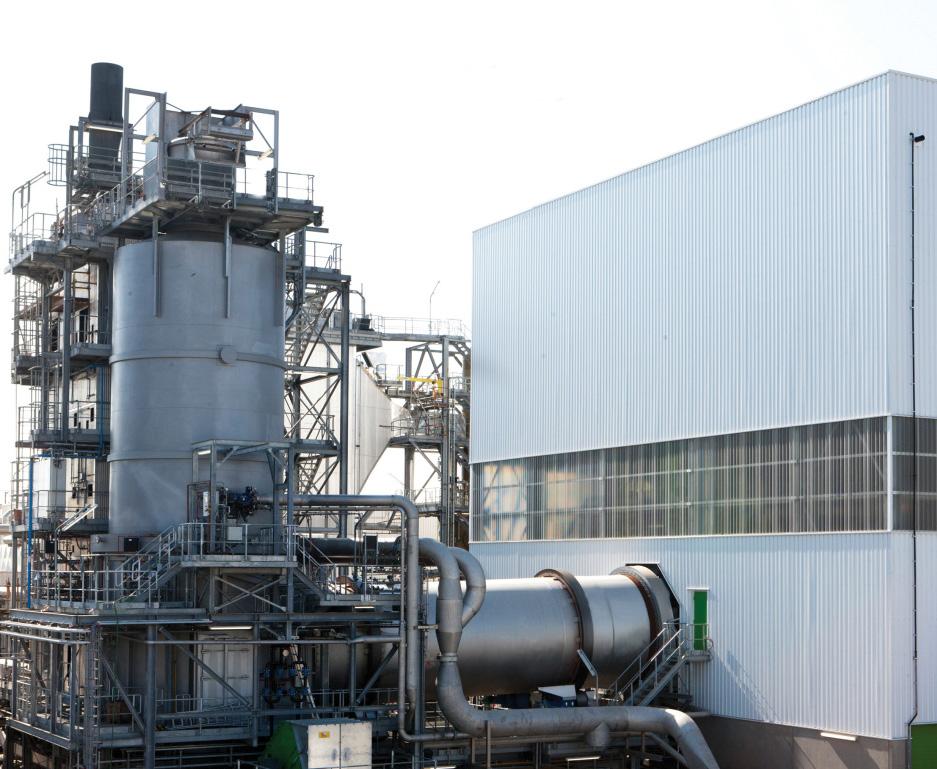
Our projects and initiatives in 2024
Brownfield redevelopment: remediation according to the strictest environmental standards
In Ireland, Indaver has been appointed as the main contractor for the remediation of a 36-hectare site that was previously used for the production of active pharmaceutical ingredients by a leading pharmaceutical company. The project involves the removal and treatment of an estimated 150,000 tonnes of contaminated soil and waste on a site located in an ecologically and residentially sensitive area.
Teamwork led by Indaver
Indaver was entrusted as the main contractor because of its extensive experience with hazardous waste and complex soil remediation. We leverage that experience to minimise the impact on the environment and the neighbouring community. In addition, Indaver excels in using technological innovations to process this type of waste in a safe and sustainable way.
A selection of our on-site actions:
We communicate transparently with stakeholders about the project’s progress.
We carry out excavation works under specially designed enclosures.
We install noise barriers during certain operations.
We purify all air within the enclosures to prevent odours and pollution.
We transport excavated soil without disrupting local residents.
Although Indaver is taking the lead, the remediation is primarily a joint effort. We are working closely with the pharmaceutical company and local partners to align expertise, safety protocols, and stakeholder communication. This collaboration not only makes a project of this scale possible, but also ensures it is carried out responsibly.
Towards a sustainable future
Throughout the duration of the project, Indaver will excavate, transport, and process approximately 150,000 tonnes of waste. Around 90% of that volume will be cleaned and sent for land restoration, while the remaining 10% (which still contains solvents or active compounds) will
be thermally treated at specialised facilities, such as our plant in Meath.
Once the remediation is successfully completed, the owners intend to give the former pharmaceutical site a sustainable future as a location for new economic initiatives. Because
the remediation is being conducted according to the strictest environmental standards, the site is open to redevelopment. This paves the way for the creation of new jobs and local prosperity.

Destroying PFAS in a sustainable, effective and large-scale way
Indaver is determined to help tackle the PFAS problem and to act as a crucial link in the chain. In Antwerp (Belgium), for example, we remove 668,000 kg of PFAS from society every year. This is something we do with the utmost care for the environment.
“Because
we do not produce PFAS ourselves and do not use any during our activities, but do destroy huge volumes of PFAS-containing waste, Indaver is currently an indispensable link for a clean circular economy.”
Andres Van Brecht, Manager Waste Legislation
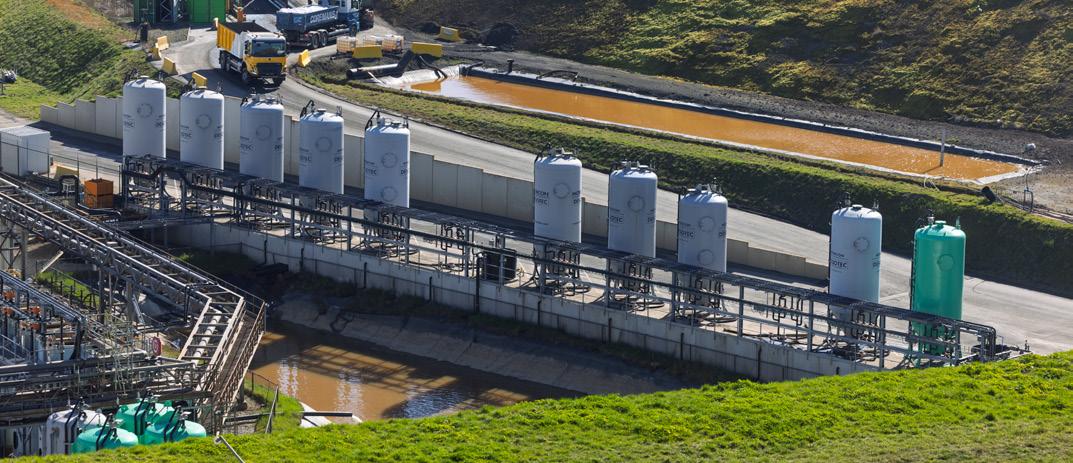
The PFAS problem in a nutshell:
What are PFAS?
PFAS is the collective name for more than 6,000 substances that, due to their chemical properties, are resistant to moisture, heat and stains, among other things. As a result, we find PFAS in many consumer products and industrial applications.
The number of carbon atoms determines whether it is a long, short or ultra-short PFAS. The long compounds, such as PFOA and PFOS, can build up in bodies of animals and humans. Short and ultra-short compounds, such as PFBA, TFA and PFPrA, do so to a lesser extent.
Why are PFAS also called ‘forever chemicals’?
Many PFAS are not or hardly biodegradable. As a result, they remain in the environment for a very long time and can end up in our water and food, for example.
How harmful are PFAS?
PFAS pose a risk to humans and to the environment because they are difficult to degrade and enrich in case of prolonged exposure. Health risks include disruptions of the hormone balance, liver function and the immune system. Please note: some PFAS are more harmful than others.
What is being done about the problem?
To effectively curb the spread of PFAS, an integrated chain approach is needed (production, distribution, use and processing). After all, we cannot completely drain the bath as long as the tap is running. That is why a ban on the production of PFAS is currently on the European negotiating table.
Until then, it is mainly the PFAS processors, such as Indaver, who put their experience and expertise at the service of society, who are creating solutions for this problem.
An extensive water treatment plant with activated carbon filters ensures that no short or long PFAS chains are detected in Indaver’s wastewater.
Our positive impact in numbers (2024)
160,000 tonnes
waste treated in Antwerp rotary kilns
16,000 tonnes
PFAS-containing waste
668 tonnes
PFAS safely removed from our ecosystems
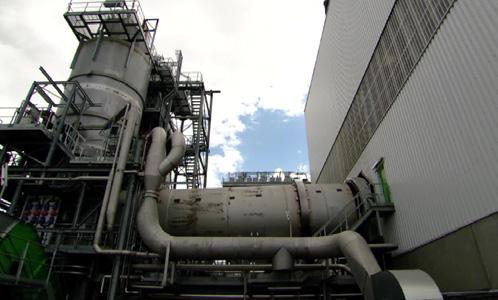
Indaver creates a clean circular economy
In our three Antwerp rotary kilns we process PFAS-containing waste. This includes production waste, consumer products containing PFAS, and waste from soil remediation.
We combat the PFAS molecules using temperatures higher than 1,050ºC. By exposing the harmful molecules to this heat for a long time and under intense turbulence, they are effectively destroyed. This technique is known as the Best Available Technique (BAT) for this type of waste and is prescribed in legislation.
Indaver makes maximum use of the capacity in its plants to tackle the PFAS problem in Flanders. It was therefore decided to further reduce the direct supply of PFAS-containing waste from the Netherlands in 2024.
With the greatest care for the environment
The processing of PFAS-containing waste releases limited residual emissions, both in terms of air emissions and emissions to water. Scientific studies and numerous measurements show that Indaver’s residual emissions do not pose any risks to our employees or local residents.
Air: further improvement to less than 0.05 kg of PFAS per year
Indaver carries out a lot of measurements to check any residues of PFAS molecules at the level of the chimney. In addition, we make our flue gases available to organisations that are working on the development of measurement methods. After all, the fact that there are no generally validated measurement methods is no reason for us to adopt a passive attitude.
For example, Indaver participates in scientific research in which we have fortnightly measurements of PFAS residues in our air emissions carried out by independent laboratories. This allowed us to demonstrate in 2024 that our optimisations are bearing fruit. Today, the emissions to air from the three furnaces together amount to less than 0.05 kg of PFAS per year (measured according to the current measurement method LUC VI-003). That is a 50% reduction compared to 2023.
Please note: although there is no general framework of standards, evaluations are possible. For example, the VITO research centre published a BAT (Best Available Techniques) study in March 2024 with proposals for emission limit values. Based on our measurement results, Indaver can already demonstrate that it more than meets the proposed framework of standards. In addition, the results of our measurements are also far below the EFSA (European Food Safety Agency) standards framework.
Immissions and depositions within acceptable levels
We also model our measurement results based on immissions (the amount of the substance that could be present at approximately 1.5 metres above the ground) and depositions (the amount of the substance that ends up on the soil near the installations).
Independent studies by Arche and VITO show that we remain below the relevant limits for both domains and that there is therefore no risk to employees or local residents. These studies are available on the Indaver website.
Water: below the detection limit for short and long PFAS chains
The possible release of PFAS residues via wastewater is also carefully measured and monitored. We do this through our eight activated carbon filters. As part of a multi-stage water treatment process, they ensure that our installations meet the extremely strict standards set out in the current discharge permit.
For example, for the standardised PFAS molecules, we can demonstrate that the release of PFAS residues via wastewater falls below the current detection limit (measurement method WAC/IV/A/025). We apply the same focus on far-reaching purification to groundwater. After we pump up the water, it is purified via three activated carbon filters. Only then do we use the water in our flue gas treatment plant as process water.
In the past, fire-extinguishing exercises had regularly been held on the site and there had also been a few large fires. And historical processing activities had also had an impact.
At the end of 2024, we also completed the second phase of the descriptive soil investigation for an evaluation of possible contamination around our Antwerp site. In 2025, additional investigations will be carried out.
Closely
Additional investments in water treatment in 2024
Extra sand filters
Two permanent activated carbon filter systems: for the further treatment of both wastewater and groundwater
Soil: descriptive soil investigation (phase 2) submitted
Finally, Indaver checks whether there are PFAS contaminations in the soil or groundwater. We do this on the basis of phased soil investigations.
After an exploratory soil investigation and the first phase of a descriptive soil investigation at our Antwerp site (Belgium), we proceeded with a soil remediation project in 2024. The reason: an increased presence of PFAS in groundwater.
following and acting on developments
The scientific insights into PFAS, both in terms of characteristics (eco-toxicity) and the way in which they can be measured, are evolving very quickly. Indaver is closely monitoring this scientific evolution and also making active contributions to help further refine existing measurement methods and analyses.
We continuously invest in improving our processing based on new insights or techniques. This positions us to continue to offer a sustainable, effective and large-scale solution to the PFAS problem in Flanders, today and tomorrow.
160,000 tonnes waste per year in rotary kilns
16,000 tonnes waste containing PFAS
668 tonnes PFAS
to air < 0.1 kg/year *
to water
activated carbon filters
0.05 kg/year ** 3 activated carbon filters
More projects to protect ecosystems
Moldova: 111 tonnes of hazardous chemicals removed
Between August 2024 and January 2025, we and our partners removed 111 tonnes of hazardous chemicals from the right bank of the Dniester River. The project involved the collection and repackaging of chemicals and toxic substances (dichloroethane, monoethanolamine, dichloramine). Six trucks transported the chemicals to our facilities in Hamburg (Germany) to neutralise them completely and safely through thermal processing.
The risk to the local Moldovan communities was thus removed, while the way is open once again for investments in the area.
Leachate from landfill Groundwater
Results for water, air and soil
Every year, we share the impact of our installations in terms of air, water and soil. For example, we indicate how the installations compare to the emission limit values and how our water consumption is evolving. This helps us to determine which innovations and investments are needed to raise the bar for ourselves and others.




Our biological water treatment in Antwerp (Belgium).
Results for water
Indaver uses primary water sources, such as groundwater, tap water and surface water, sparingly. In recent years there has been a growing understanding that we need to deal with our rainwater differently. Flanders has therefore drawn up a rainwater and drought plan, containing an integrated vision of where and how companies can reuse or infiltrate rainwater, buffer it, and only slow down its drainage as a final step.
Rainwater collection
In many locations, we have buffer basins or tanks to collect clean rainwater from, for example, building roofs or other paved surfaces that do not come into contact with waste.
Infiltration of rainwater
In accordance with the legal requirements, we strive to allow rainwater to infiltrate our sites as much as possible through the use of wadis, infiltration crates or other infiltration facilities. However, infiltration is not (technically) possible at all Indaver locations due to, for example, a high groundwater level or poor water permeability of the soil.
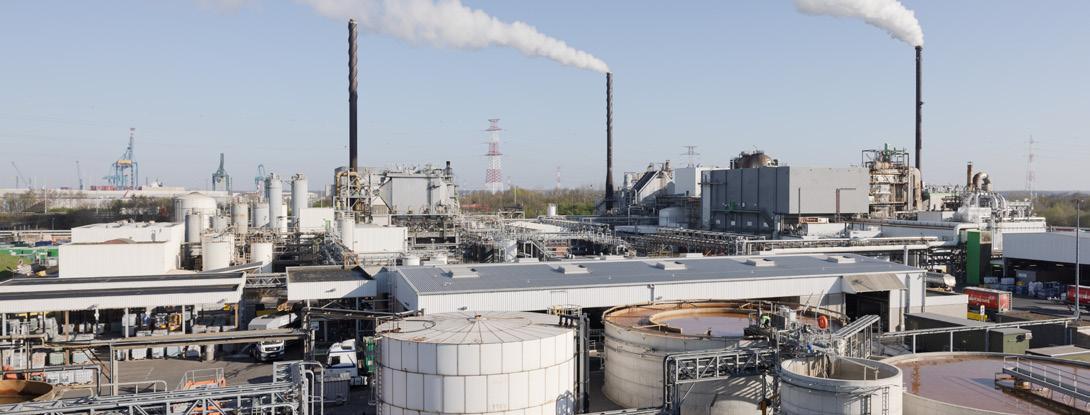
Buffering for reuse and/or delayed disposal
Where infiltration is not technically possible, we buffer the rainwater in the context of reuse on the site. For example, we use it as sanitary water in the buildings, for dust control in our landfills, or as process water in our treatment plants.
After reuse, we slowly drain the excess water into the sewer system and/or surface water. In this way, we reduce the risk of overloading sewers and flooding. Only when all rainwater collection systems are filled, for example, during a downpour, do we drain their overflow directly into the sewer system and/or surface water.
Safe discharge
Indaver has several sites that are discharge-free. In concrete terms, this means no wastewater is discharged. The sites that do discharge wastewater have a water treatment system that ensures the quality of the wastewater is in accordance with the requirements imposed in the legislation and/or the environmental permit.
Antwerp (Belgium): towards record flow rate for reusable wastewater
The Indaver site in Antwerp is a major water user. We rely on tap water and groundwater, but we are also committed to the reuse of internal wastewater flows in the treatment processes.
In 2024, Indaver installed a high-performance plant for the purification of groundwater, runoff water from the landfill, and water from the sewer system contaminated with PFAS. The installation consists of a sand filter and activated carbon filters, which can treat up to 25,000m³ of water per month. In December 2024, a record flow rate of more than 22,000m³ of wastewater was treated for reuse on the site. This comprised about 40% of the site’s (monthly) water needs.

Innovative services for clean water
INOPSYS: EFFECTIVE PURIFICATION OF PFAS AND OTHER CONTAMINANTS FROM WATER
With the acquisition of Inopsys, Indaver can offer an alternative to the use of activated carbon for the purification of PFAS-containing water. By using adsorption materials in a mobile processing unit on the customer’s site, we deliver these advantages:
Less waste by reusing the adsorption materials.
Better absorption of PFAS, including PFAS substances that are more difficult to remove.
On-site purification with compact installation, resulting in less transport.
Thanks to the innovative treatment and mobile units, Inopsys can supply the purified water directly back to the production company for reuse in industrial processes. Essentially, Inopsys uses technology to offer Water-as-a-Service to its customers. This means that the customer does not have to invest in the installation, management and maintenance of water treatment systems.
Indaver Separation Technologies: tailormade sludge dewatering
Indaver Separation Technologies (IST) helps to close material cycles by separating wastewater treatment sludge or production sludge into solid and water. This allows the clean water to return to the cycle, while the calorific or material value of the dewatered sludge can be put to good use.

Read more on p. 27 or go to our website.
Indaver Separation Technologies in ‘s Gravenpolder (the Netherlands).
Rotary kilns Antwerp
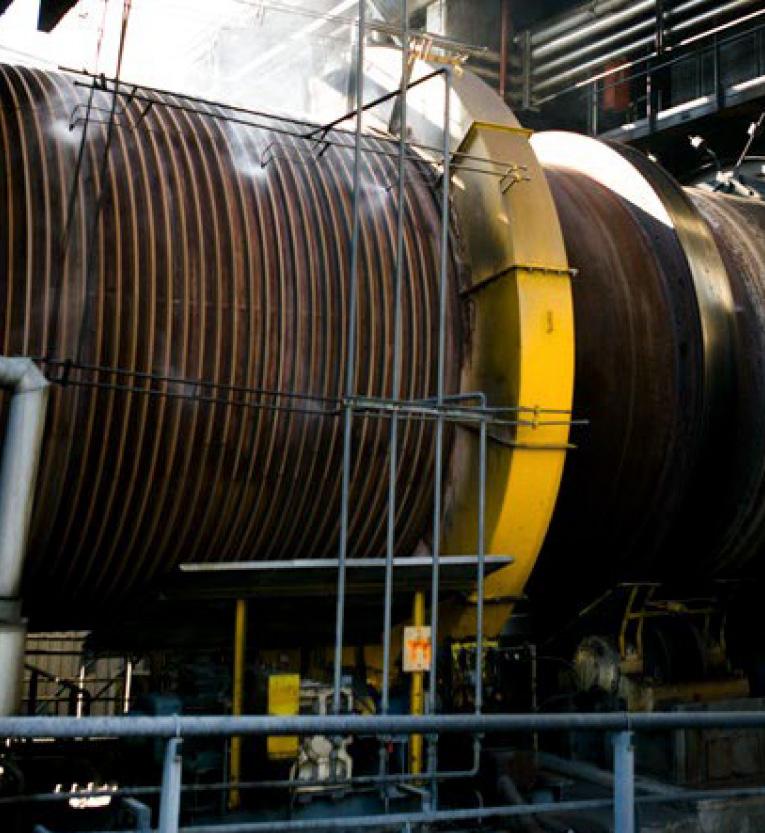
Rotary kilns Antwerp
Performance 2024: the daily average values of the continuously measured parameters (Dust, CO, TOC, HCl, SO2 and NOx) were determined based on validated averages cf. Vlarem II art. 5.2.3 bis 1.27 §1.
* Sum of Sb, As, Pb, Cr, Co, Cu, Mn, Ni, V, Sn.
Volumes of pollutants from contaminated components (in tonnes)
(*) The pollutant loads for the continuously measured parameters (Dust, CO, TOC, HCl, SO2 and NOx) were determined based on validated daily averages cf. Vlarem II art. 5.2.3 bis 1.27 §1. The same system was applied for the discontinuously measured parameters.
Dioxin measurements
Concentration (ng TEQ/Nm³)
Rotary kilns Hamburg
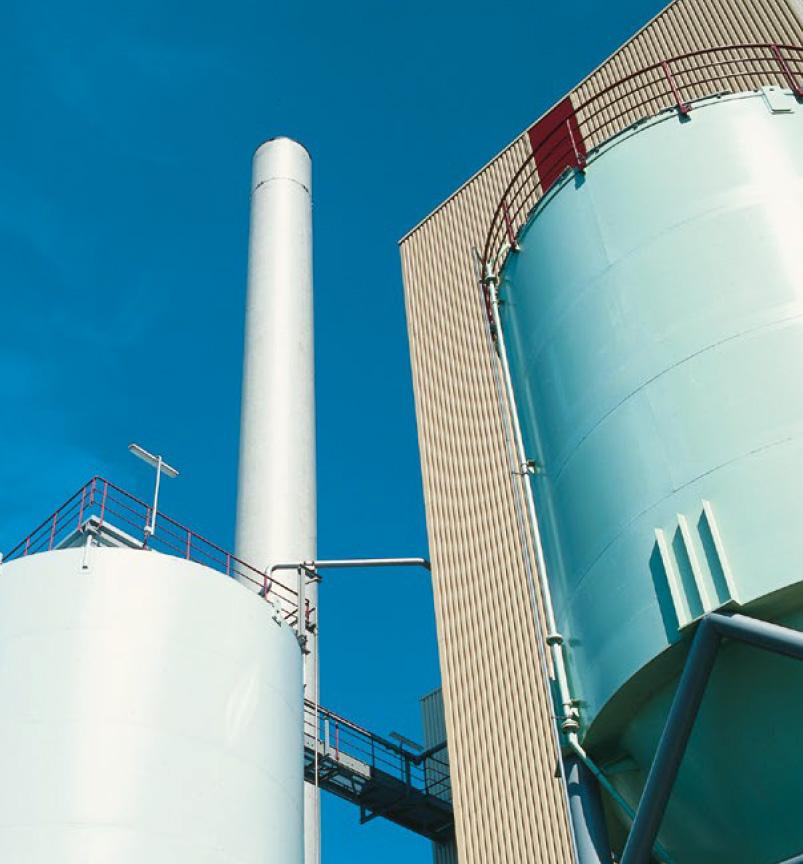
Rotary kilns Hamburg
Rotary kilns Biebesheim
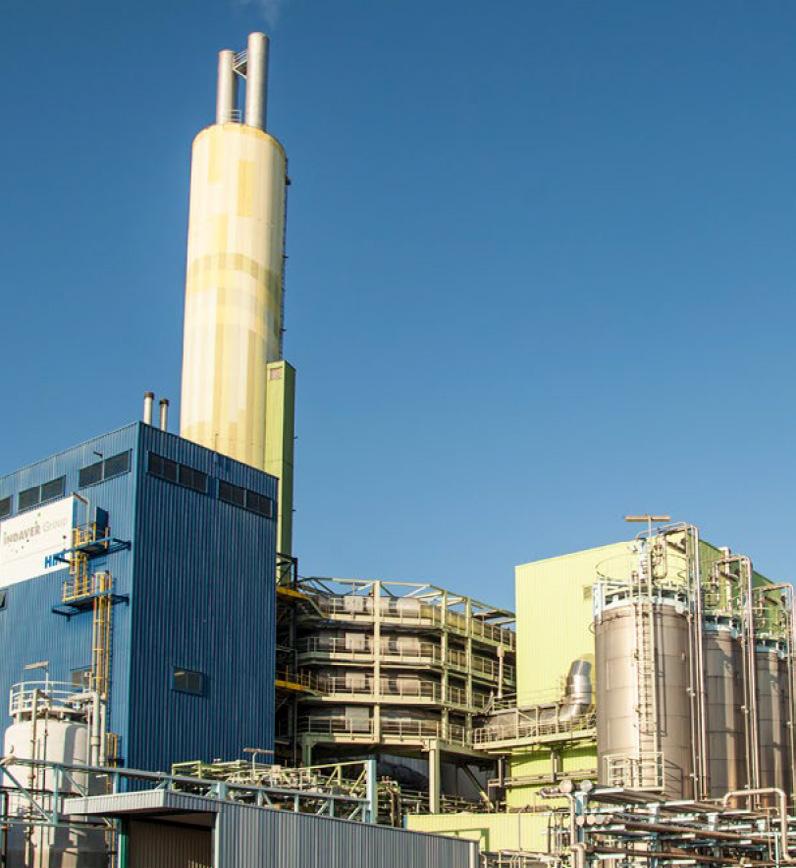
Rotary kilns Biebesheim
* Sum of Sb, As, Pb, Cr, Co, Cu, Mn, Ni, V, Sn.
Grate incinerators Doel
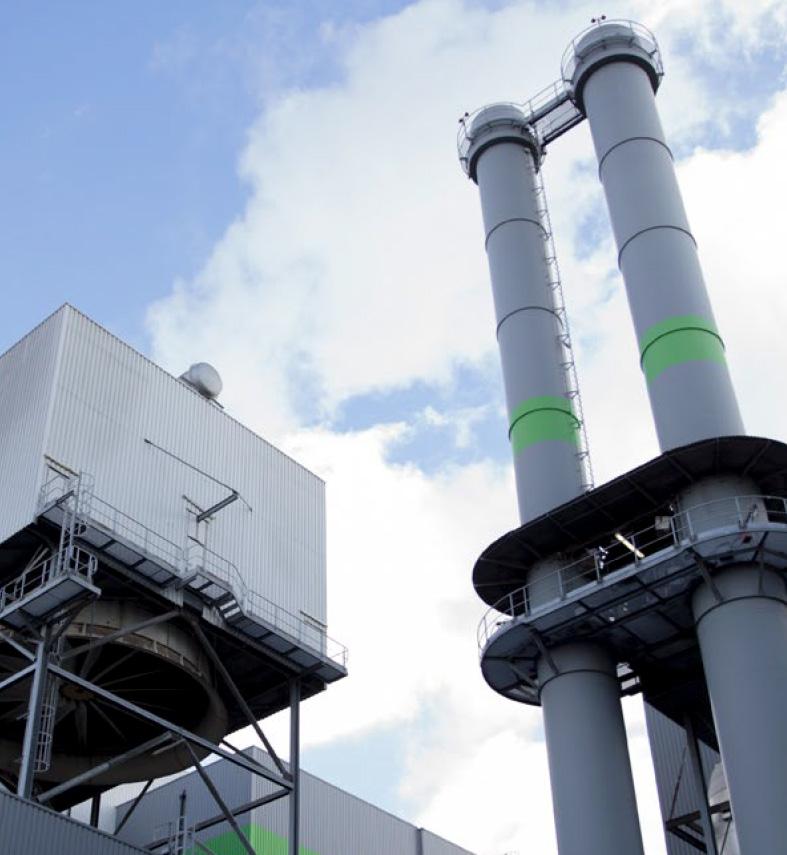
Grate incinerators Doel
Sum of Sb, As, Pb, Cr, Co, Cu, Mn, Ni, V, Sn.
Grate incinerator Meath
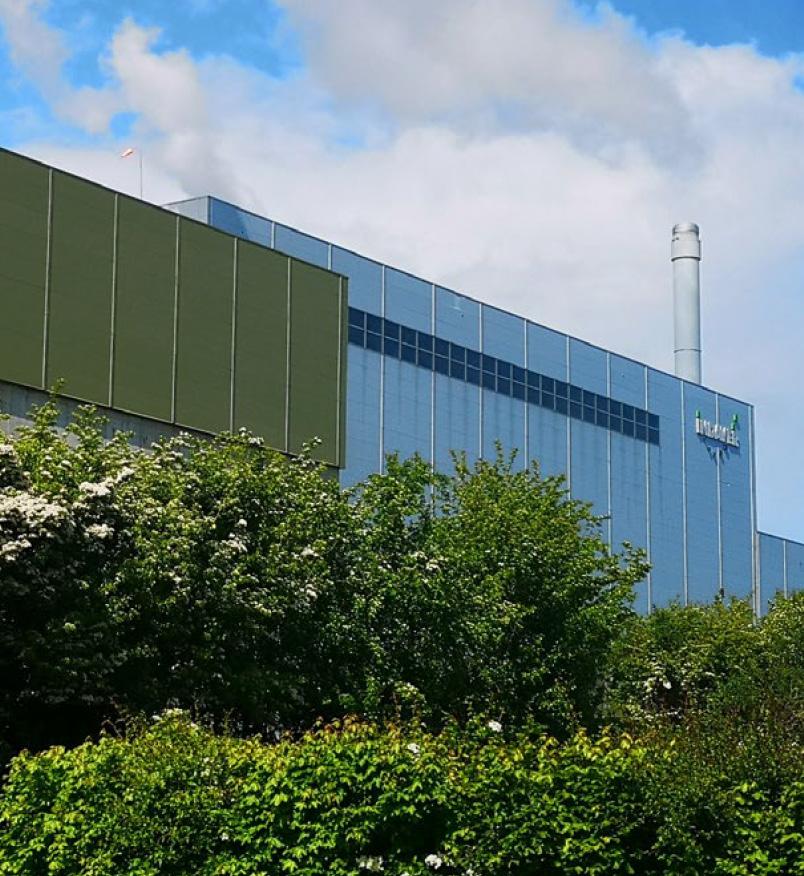
Grate incinerator Meath
Grate incinerators Aberdeen (NESS)
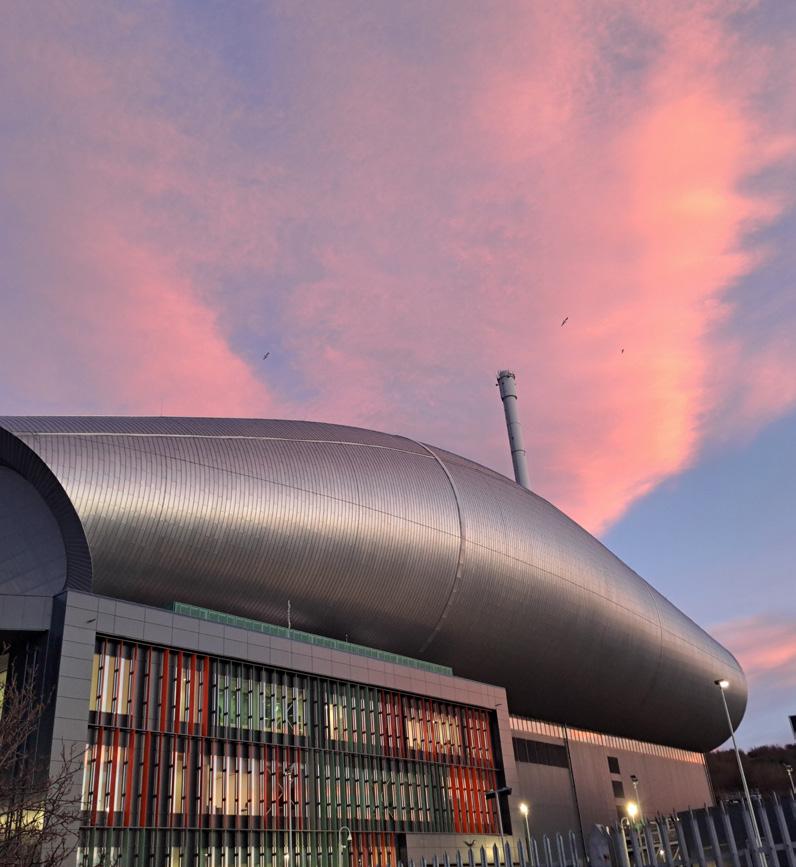
Grate incinerators Aberdeen (NESS)
Fluidised bed incinerators Doel

Fluidised bed incinerators Doel
Sum of Sb, As, Pb, Cr, Co, Cu, Mn, Ni, V, Sn.
ARP IJmuiden
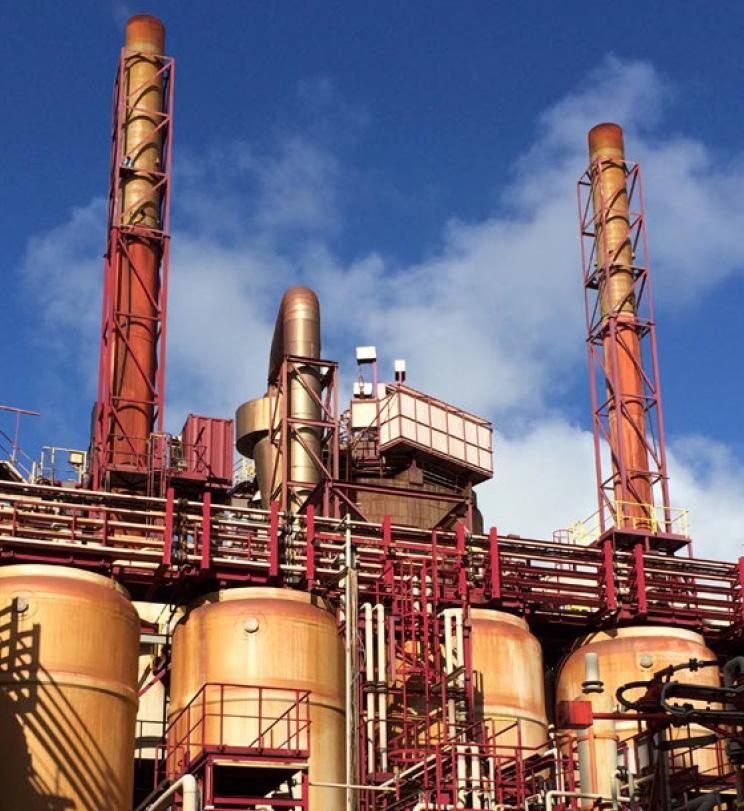
Site IndaChlor (Loon-Plage)
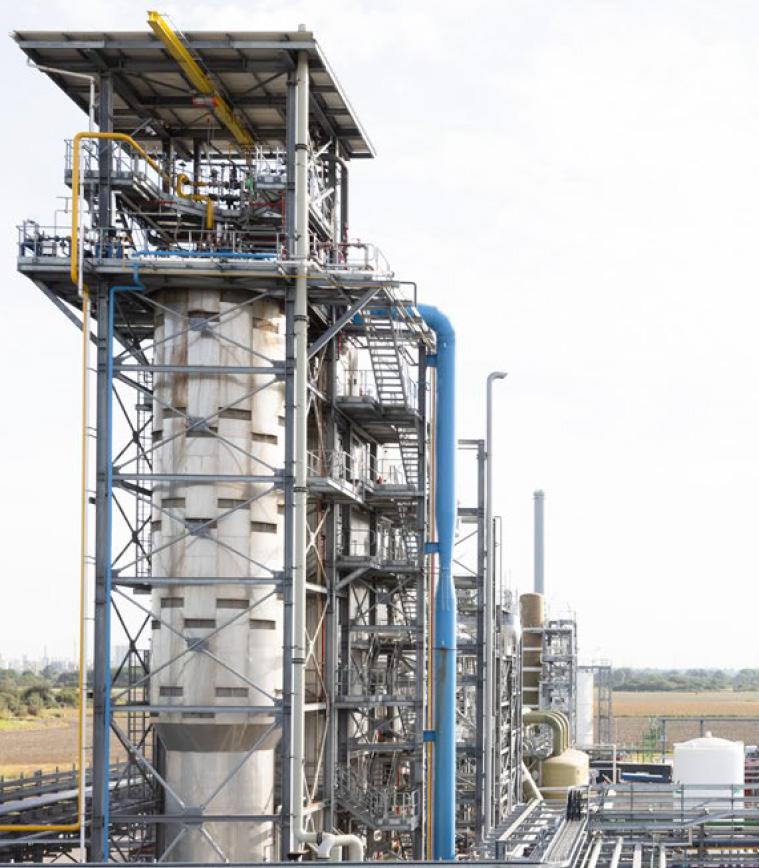
Site IndaChlor (Loon-Plage)
Biodiversity
Diversity in flora and fauna, together with microorganisms, forms the basis for all ecosystems. We therefore do everything we can to cause as little disturbance as possible to the natural habitat with our installations. Where possible, we work to promote biodiversity on our sites and in their surroundings. We do this by taking action ourselves or by working together with local nature and environmental associations.
Biodiversity forms an essential part of every environmental permit, whether for a new location, an adaptation or an extension. For this reason, too, we believe in transparent policy and communication.


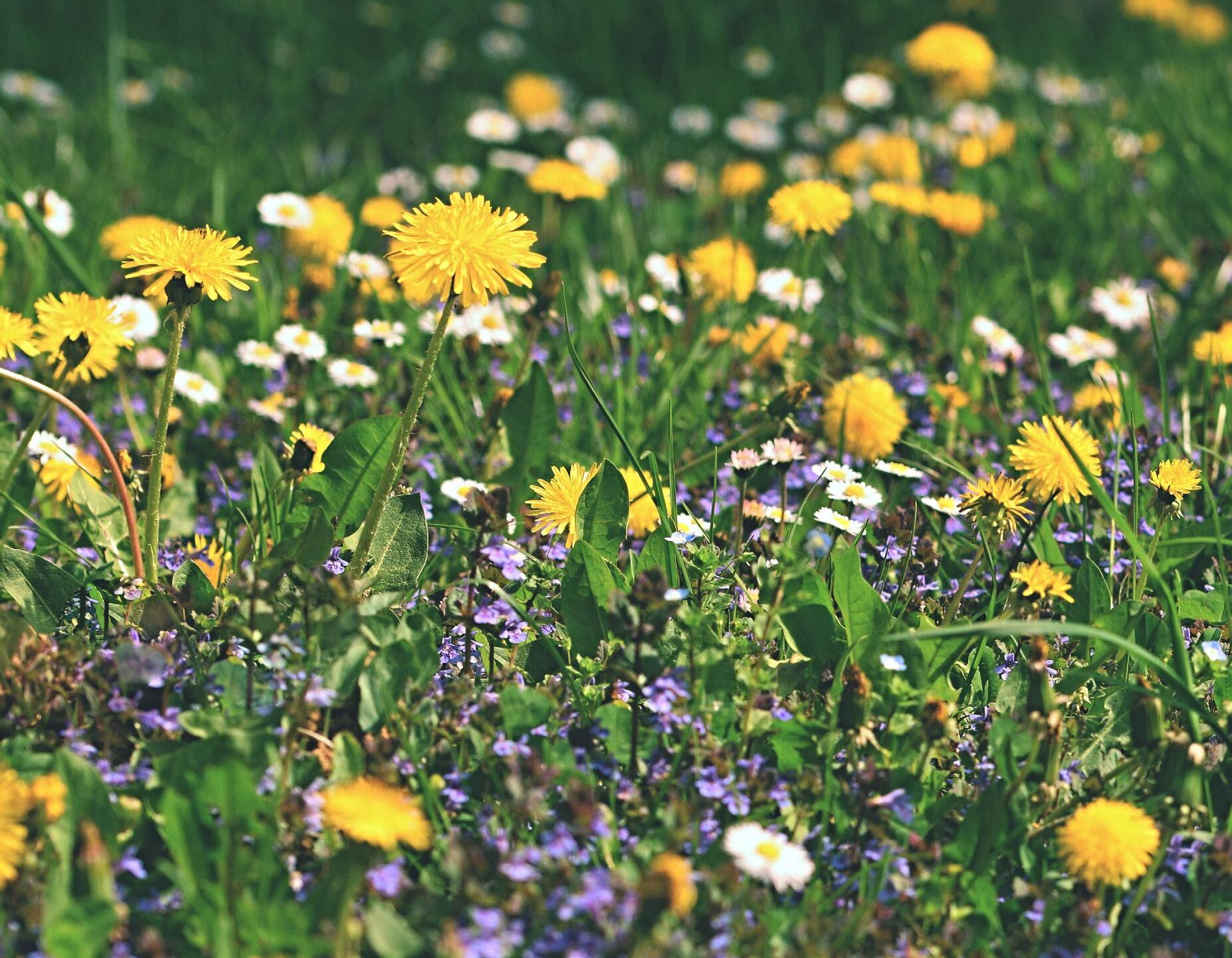
Biodiversity Policy as a foundation for targeted action
In 2019, Indaver published a policy document in line with the United Nations Convention on Biological Diversity.
There are 5 principles and actions in our policy document:
Assessment of our activities according to the EU Environmental Impact Assessment Directive. Responsible waste management, with a strong focus on plastic waste.
Management and reduction of emissions to air and water.
Sponsorship of nature projects and sustainable green management on our own sites.
Biodiversity as an integral part of our decision-making process.
Compost stimulates soil biodiversity
Under the Earth’s crust there is a very extensive, diverse and indispensable network of organisms. No less than 25% of the species on Earth are found in the soil, from moles and earthworms to bacteria and fungi. Each of these species has an important function in the complex underground soil food web. Furthermore, there is a close link between soil biodiversity and biodiversity on and above the Earth’s surface.
Soil quality, and therefore soil biodiversity, increases when our customers use Indaver’s high-quality compost.
A safe haven for breeding birds
At our locations, we make a careful inventory of any breeding birds that are present. Nests are marked to prevent casualties among the birds. For example, many species of birds breed annually at our Stainkoeln location in Groningen (the Netherlands), such as the Lesser Plover, which makes its nest on the ground.

Be welcome, bats!
At our Rivenhall site (UK), we installed 10 additional bat-boxes in 2024. The bats can use these to rest during the day. This initiative has also given bats the opportunity to live in areas where there are few alternative roosts. In this way, we are contributing to the well-being of the 18 native bat species in the United Kingdom.
When the bats spread their wings and fly, they get a nice aerial view of our green roof under construction. The 9,789m2 roof is being planted with vegetation that will provide food, nesting places and shelter for various species of insects, birds and plants. On top of all this, it will reduce CO2 emissions by 246 tonnes per year.
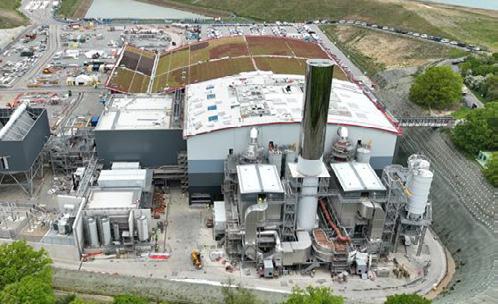
Social
A circular economy for all
Guided by a clear vision and strong ambitions, Indaver is taking the lead in the transition to a circular economy. This is only possible because our 2,300+ employees work hard to turn our words and ideals into action – day in, day out. Their commitment, knowledge, skills and talents are invaluable. By encouraging labour mobility, continuous learning, and professional development, we ensure that both employees and the company evolve together.
We also include local residents, students, policymakers, knowledge institutions, social organisations, partners and other stakeholders in our vision. This is because the transition to a circular economy concerns everyone and requires full collaboration.

Finding, nurturingconnecting, and developing talent
Why important?
Our people are undeniably our most important asset. They are the ones who come up with innovative services, grow into experts in their field, inspire others with their circular mindset, put core values into practice, and so much more.
This is why we are committed to sustainable employability, so that our employees remain motivated, healthy and involved throughout their careers. We believe that everyone should feel valued, enjoy their work and have the opportunity to fully develop their talents. Therefore, creating a meaningful and dynamic work environment where employees feel at home is central to our approach.
The result: we can always deploy our employees in the right place and at the right time. This is especially important in a growth year like 2024. During that year, we welcomed almost 400 new colleagues. And with many employees approaching the end of their careers, we will have to continue to prove ourselves as a top employer in a challenging labour market.
It is important to understand that the new generation looks at work differently than those who came before them. The idea of a lifelong job has given way to a dynamic career path in which people constantly reinvent themselves. There is also more attention paid to the work-life balance, a high diversity in the workplace, a strong sustainability policy, and a personal trajectory with many growth opportunities.
Within this evolving context, Indaver is working on an authentic and strong employment policy to find, connect, nurture and develop talent.
Our objectives and approach
At Indaver, we see every employee journey as a continuous growth opportunity. Whether it’s potential candidates or seasoned colleagues, we support everyone with the right tools and guidance. In doing so, we create a workplace in which people are given more and more opportunities to use their full potential at every stage.
Central to this approach are sustainable employability and knowledge retention. We try to keep everyone motivated, healthy and engaged throughout their careers by offering a dynamic and meaningful working environment. Our aim is for Indaver to become a second home to everyone who works there. At the same time, this approach also promotes our business strategy and international growth.
Finding talent: with an open mind and an increased focus on our employer brand, we look for the right people in well-known and lesser-known talent pools to support our mission.
Connecting talent: with value-driven leadership – based on our 4C model of Care, Connect, Coach and Change – we create a culture in which employees feel connected to each other and are directly involved in our goals.
Nurturing talent: we like to keep those who join us on board. We do this by responding to professional aspirations and encouraging involvement, while also making each person’s physical, mental and social wellbeing a priority.
Developing talent: as a knowledge company, we create space for initiative, self-development and ownership. Through continuous feedback and open dialogue, we give employees the appropriate support to grow with us.
As an international growth company, we are increasingly streamlining our IT landscape for HR (Human Resources). No more separate systems per region, team or even individual. We are working towards a fully harmonised and user-friendly People Platform by 2027. This will allow us to continue to grow in a sustainable and efficient way.



Our projects and initiatives in 2024
Finding talent
Indaver among the top 1% of employers in Europe
Indaver has already won a Leading Employer Award in Belgium, the UK and Germany (www.leading-employers.org). Now that honour has been bestowed on the entire Indaver Group. The award confirms the strength of our HR policy, but above all it shows that it is good to work at Indaver.
What does this independent recognition mean in concrete terms? The fact that we are listed among the top 1% of employers, based on employment conditions, employee experiences, profiling and more, makes Indaver an extremely attractive proposition to job candidates.
83% of our jobs are filled by our own recruiters
Since 2024, we have had our own recruiter in each region. Supported by our positive reputation as an employer, they recruit the lion’s share of new colleagues.
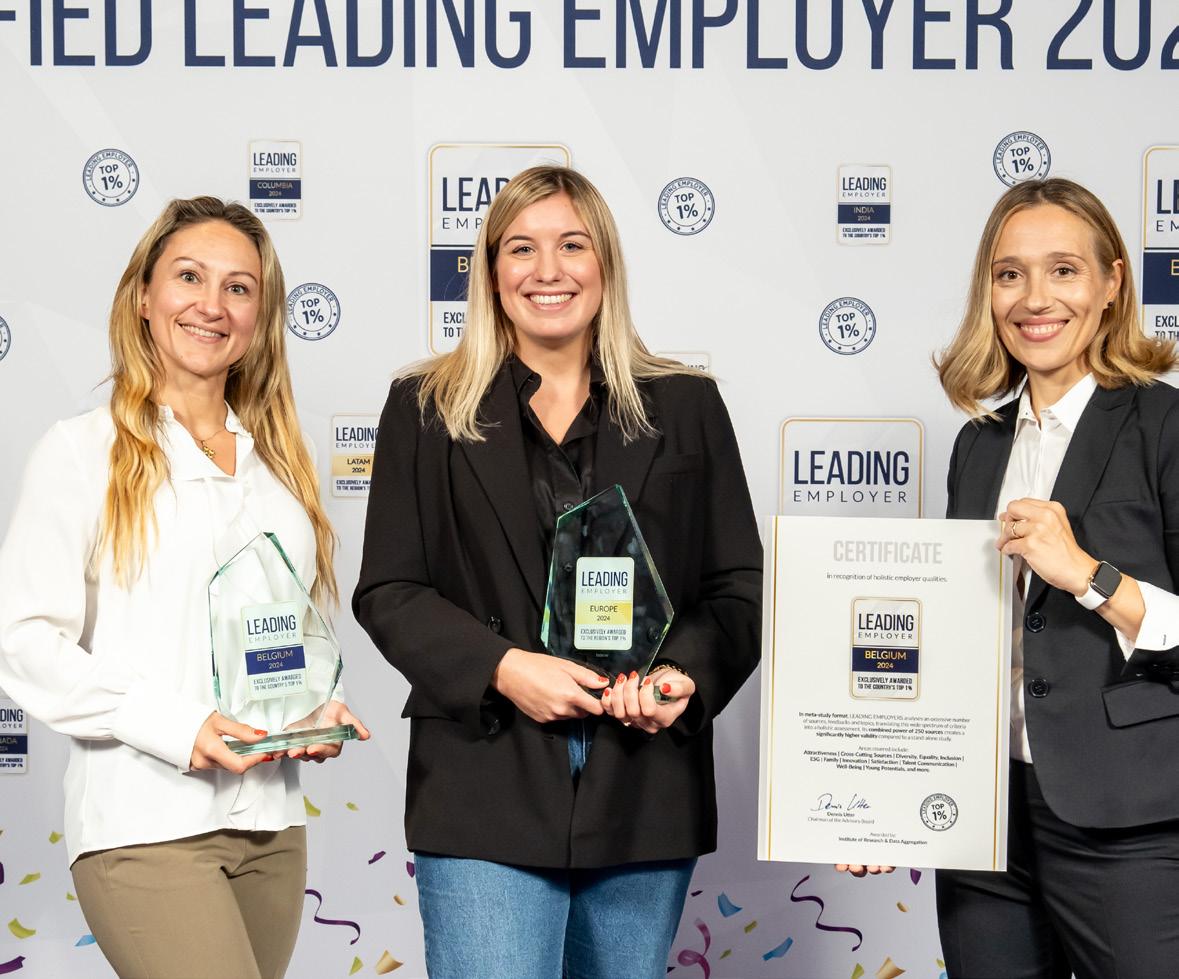
“The award is partly due to our strong communication. In recent years, for example, we have been focusing heavily on channels such as LinkedIn and our career page. We have also switched to a uniform approach, to put Indaver more firmly on the map across the regions. And then there are also our long-term employer branding campaigns with numerous testimonials.”
Charlotte Leyseele, Talent Acquisition Partner
HR colleagues receive the Leading Employer Award.
From untapped talent to international top talent: IIGP reaps success
Since 2023, Indaver has been focusing more and more on international recruitment. We do this with specialised partners and our own initiatives. One of those initiatives is the two-year Indaver International Graduate Programme (IIGP) for students who have just obtained their bachelor’s or master’s degree and aspire to a career in an international company.
IIGP in a nutshell
Why?
To give graduates a good idea of the career opportunities at Indaver in the short term and to allow them to grow quickly into a suitable position.
What?
In four blocks of six months, participants work on projects that are in line with their personal interests and background. They work first in their own country of residence, then in another country of the Indaver Group.
Who?
Out of 750 applicants, we chose 9 participants. They simultaneously started working for various business lines in Belgium, Germany, the UK and Ireland.
When?
The first programme started in September 2023 and will run until August 2025. In the meantime, we have already launched a second programme, informed and improved by the feedback from the first group. More info on our IIGP page.
With IIGP, Indaver is deliberately opting for a long-term process. Although the target group is looking forward to their first work experience, we want to encourage them to look at their future work opportunities with an open mind, to be curious about and open to the many different roles across the company. This encouragement is well received by the participants.
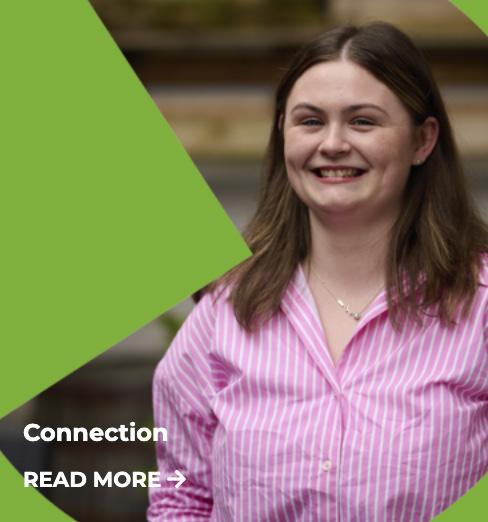
“I think it’s important to keep my options open, unlike some graduate programmes where the emphasis is on one domain. Moreover, I immediately felt like a fully-fledged employee. In the past year I have supported various teams. This will teach you to look at the same challenge from a different angle and you will better understand Indaver’s vision. Thanks to my personal development plan, I am also making progress at every stage.”

Sophie Flynn, IIGP participant
Own employees as the best recruiters
Our Refer-a-Friend programme encourages our employees to recruit suitable candidates from their own networks. After all, they are best placed to assess whether someone they know personally would fit into our work culture. And if their suggestion leads to a successful recruitment, the employee receives a financial reward.
The figures prove that the programme is a success.
1/5
new colleagues in Ireland and the United Kingdom were nominated by a friend or acquaintance who already worked for Indaver.
1/4
In Belgium and the Netherlands, the percentage was even higher.

Colleagues on Indaver as an employer
In the testimonials we collected from our employees in 2024, the same reasons emerged over and over again for choosing to work with Indaver ... A collegial working atmosphere
job with impact
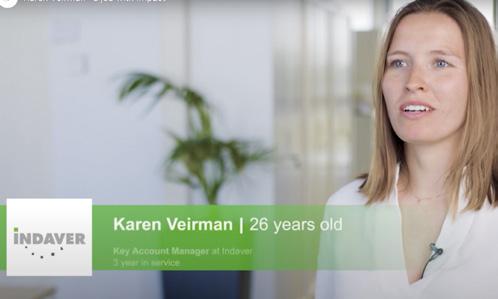
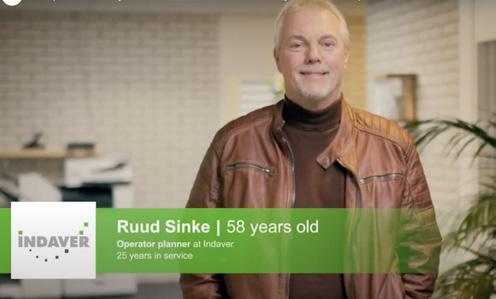
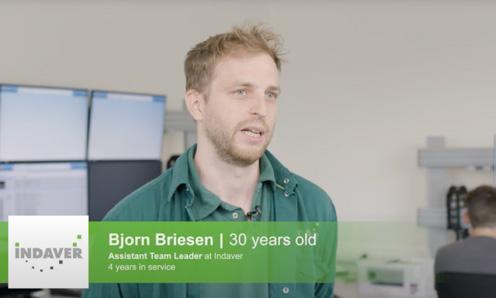

Attention to the work-life balance
A
Attention to personal growth
Indaver in the spotlight as an employer
To bring new talent on board, brand awareness is crucial in the different countries where we operate. In this regard, we cannot emphasise the positive impact and relevance of our activities enough: we are a crucial link in the circular economy.
How did we get that message across in 2024?
We were present at various job fairs and events. The key to achieving success there was our ambassadors, i.e. colleagues who come along to talk about working at Indaver. At a technical job fair, for example, we look for colleagues working in a related position, so that they are a good discussion partner for visitors.
“It’s
great fun to talk about your company during a job event. It strikes me that many people don’t know about Indaver, but that they do find it an interesting sector.”
Marjette Rem, Waste and mineral acceptor in Groningen (the Netherlands)
In addition, we also focused on our online presence. For example, we organised employer branding campaigns on social media and added new employee testimonials to our website.
Connecting talent
Introduction days for a smooth start
Connecting talent, that’s what we do from the very beginning. We want all employees to feel welcome and valuable in their team from their very first day with us. A well-thought-out onboarding process is the key to this. And within that process, we also provide a moment to press the pause button.
During this pause, in the form of an introduction day, we officially welcome newcomers from Belgium and the Netherlands and introduce them to our culture and vision. Here are some examples of the choice of events on the programme for the participants in 2024:

A presentation about our history, values and ambitions.
Interactive sessions on our core processes, figures and important projects.
A tour of the location, for example on our site in Antwerp or in Doel (Belgium).
A team-building activity to get to know each other better.
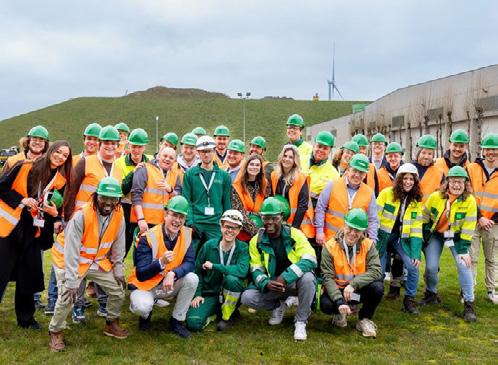
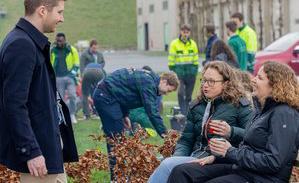
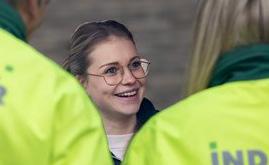
Reflecting on your own choices on Sustainable Day (Belgium and the Netherlands)
Every two years, Indaver organises a Sustainable Day for all colleagues in Belgium and the Netherlands. During that day, we have wideranging and in-depth discussions on many different sustainable themes, from personal well-being to digitisation. We do this through workshops about our own activities, talks from external speakers and networking activities. There is no strict agenda, which means everyone can put together their own tailormade programme.
On 4 June 2024, several fascinating themes were discussed during Sustainable Day, such as: is it better for the planet if we no longer eat meat? Which fast fashion chains should we avoid? Can we still travel without ‘flight shame’? How do we effectively combat food waste? After a long and productive day of talking and listening, the 300 participants returned home with plenty of food for thought and a ‘backpack’ full of useful tips.
“It
was my first Sustainable Tuesday, so I didn’t quite know what to expect. I thought it was a very nice and inspiring morning. It was also very pleasant to see colleagues outside the typical work context.”
“A nice break from daily activities and nice to meet colleagues you rarely see otherwise.”
“The
ideal way to discover what Indaver is doing in terms of sustainability.”
“Not
bored for a second. Nice programme!”

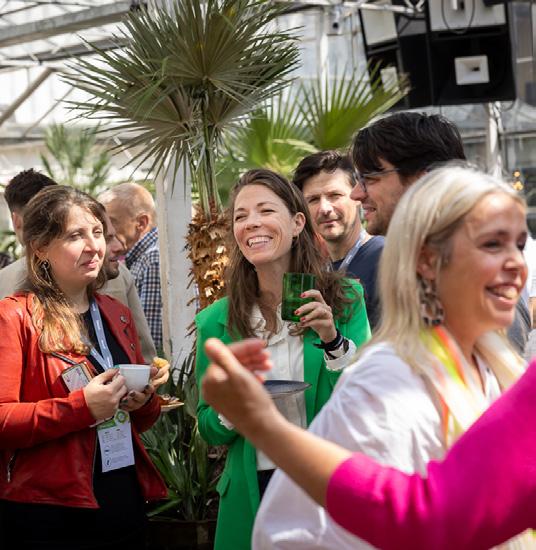

On Sustainable Day, employees from Belgium and the Netherlands participate in a variety of workshops centred around sustainability.
Nurturing talent
Finger on the pulse with frequent pulse surveys
Who is best placed to judge what our employees need in terms of work-life balance, wellbeing and personal growth? Our employees themselves, of course. We have known this for some time and within our 4C approach – Care, Connect, Coach, Change – we actively seek out and work with employee feedback. But in 2024, we shifted up a gear and evolved towards continuous listening.
In the future, we will regularly send our employees short questionnaires on very specific topics, such as growth or inclusion. In this way, as an organisation we will constantly keep our finger on the pulse of how employees experience their work, so that we can make better decisions. To lay the foundation for this new approach, we organised a group-wide survey on all themes in May 2024. We will evaluate our progress in the coming years using this baseline measurement.

“With our pulse surveys, we shift the focus from employee engagement to employee experience. By continuously listening to how employees experience their work, we want to improve the workplace in a meaningful way.”
Myra Latuheru-Eversdijk, Chief HR Officer
Indaver’s 4C model
Care
We care about our employees and all their talents, and we are committed to their further development. That’s why we motivate our employees to invest in their personal leadership and self-awareness.
Connect
We work together and share our knowledge as one Indaver. In this way, we contribute to the organisational objectives together.
Coach
Together, we set the bar high. We challenge our employees and teams to give the best of themselves and to take matters into their own hands. We give them space to grow and the autonomy to make decisions.
Change
We help our employees to deal with personal, professional and social changes. We know that those who manage to protect and motivate themselves can contribute most to their own personal success and to the success of the organisation.
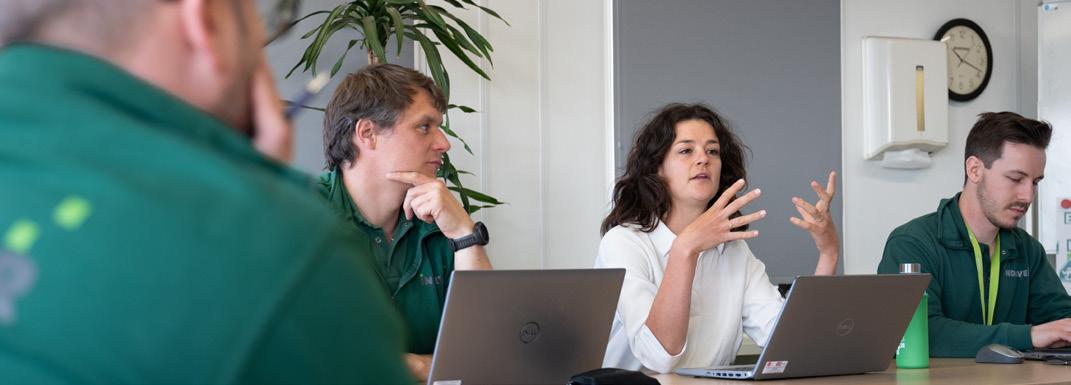
Employee surveys lead to new initiatives
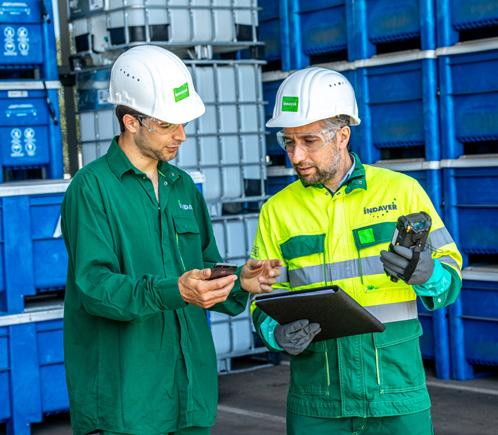
Resilience
In 2023, Indaver conducted a well-being survey among employees in Belgium, Ireland and the UK. We started working on the results in 2024. We will continue to build on what is working well, while we will also focus on what needs attention. Work pressure and stress, for example, turned out to be focus points for almost a fifth of our employees. Our answer: we developed initiatives to reduce the workload and we organised ‘Increase your resilience’ training sessions that teach participants skills to manage stress.
Diversity
Our Employee Engagement Survey identified Diversity, Equity, and Inclusion (DEI) as a key focus for the group. In response, we launched a progressive DEI Policy that included three priorities:
Cultural diversity
All generations have their say Equal pay for equal work
Leisure
Based on the results of an employee survey, employees in Ireland now get a day off on their birthday. In this way, we are recognising and supporting the desire to optimise the work-life balance.
Health and energy: mens sana in copore sano
A healthy mind in a healthy body. This slogan nicely sums up our vision of health and energy. It is also one of the four roads that lead to sustainable employability at Indaver and for that reason receives much attention in our various programmes.

The Indaver metro plan: support for employees in several domains as a cornerstone of sustainable employability.
Employee Assistance Programme: 24/7 personalised support for employees
In Germany, the UK, and Ireland, employees can count on the Employee Assistance Programme (EAP) around the clock. This programme supports employees’ mental, emotional and physical well-being by offering guidance on a variety of professional and personal themes, such as stress, resilience, financial problems, development and relationships.
This broad approach means that the EAP offers a two-way guarantee: employees can easily find affordable, targeted and completely confidential help from experienced professionals; as employer, Indaver can rely on the EAP to ensure that employees are helped quickly, either by telephone, online or in person.
IndaFIT: a personal coach
Anyone who wants to take steps to improve mental or physical health, or who wants to work on a better work-life balance, can contact an independent coach within the IndaFIT programme in Belgium and the Netherlands. Employees fill in an online test to see how their fitness is doing in terms of health in various areas of their life. The coach then looks at the results
of the test with them, and defines action points. This ranges from the need for additional training to possibly refocusing on a career level within Indaver. In other words, a programme that is specifically tailored to the unique personal needs of the employee.
Support for physical activities
Before or after a long day at work, an hour of exercise can do wonders. But we know that sometimes this takes a big bite out of our employees’ budgets. So, in Germany we give them vouchers for a selection of participating fitness businesses. In Ireland, colleagues have been receiving financial support since January 2025 for activities such as swimming, dancing, boxing, horse-riding and fitness classes.
Quit smoking
The routine staff medical examination shows that Indaver still has a significant group of smokers in Belgium and the Netherlands. Of course, everyone makes the choice for themselves, but we would like to encourage our employees to adopt healthier behaviour. This is why we offer a free smoking cessation programme for those who wish to avail of it.
“It is important that the organisation encourages staying fit and healthy and work. A healthy colleague is a happy colleague and will have a higher productivity. A win-win situation!”
René Vrieze, Foreman at the organic composting in Oude Pekela (the Netherlands)
Meath Culture Club combines the fun with the useful
In 2022, the local team in Meath (Ireland) launched an initiative to alternate work and fun in the daily routine. Under the name Meath Culture Club, the initiative has since grown into a huge success. Sports challenges, a pancake breakfast, golf games, quiz evenings, charity collections, educational workshops, etc. Every year, there are several Culture Club events in the calendar that colleagues eagerly look forward to.
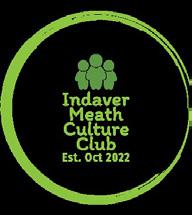
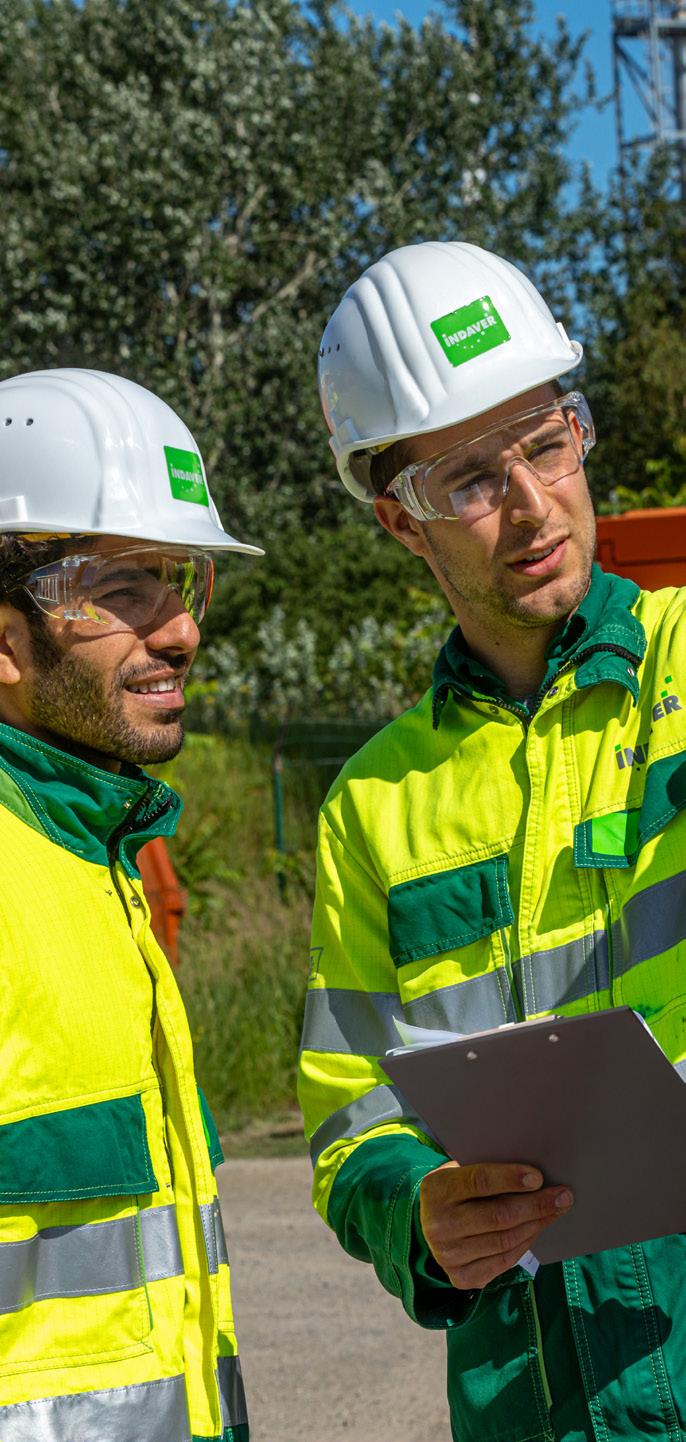

Developing talent
Women at the top in Ireland
Indaver calculated the gender pay gap in Meath (Ireland) in 2024 and found that women earn an average of 3.4% more than their male colleagues. Female employees also receive higher bonuses. The reason: years of efforts on equal pay, but also significantly more women in higher positions compared to the past. Supported by this positive step forward, we will strive for even greater gender equality in the coming years.
“Indaver always places top talent in roles where they can excel and develop themselves further – without looking at gender.”
Louise Mooney, HR Manager UK and Ireland
Continuous feedback and dialogue will become the norm
Our new system for goal & performance management – appropriately named COMPAS – was prepared in 2024 for launch in early 2025. With COMPAS, we are aiming for a winwin: our employees will be happier in work if we give them the necessary opportunities to choose the direction of their own careers; Indaver will become stronger as an organisation if all employees know exactly how they can contribute to our business objectives with their personal objectives, and also receive continuous feedback on their objectives. This is the beauty of COMPAS: one goal supports and enhances the other.
COMPAS in a nutshell
What?
Throughout the year, employees hold structural and regular 1-on-1 meetings with their manager to talk about agreed objectives. Everything revolves around continuously giving, asking for and receiving feedback. At the end, there is a conclusion interview, to conduct a final review of the process.
Why?
We inform employees very clearly and in an open dialogue about what is expected of them, how their performance is assessed, and what recognition they can count on.
For whom?
All employees within Indaver, with room for local differences due to legislation, KPIs, etc.
When?
During 2025, our transition year, we will organise various information sessions and training courses on how to determine objectives and the process of continuous feedback. Afterwards, we will officially put the COMPAS system in place.

Lifelong learning: a pre-requisite for sustainable employability
In an innovation- and knowledge-driven sector like ours, everything is evolving at lightning speed. To keep Indaver agile, our processes, jobs and employees must also keep evolving. We encourage this with a suite of training options that expands every year.
In addition to refresher courses and courses that are part of the job, we encourage employees to explore and study other areas as well. To this end, we work together with an online platform that offers hundreds of practical courses. There is certainly something for everyone. The aim is that each employee can discover talents through a personal learning plan, and that may open doors to new professional challenges. As part of COMPAS, managers can also add training courses to the personal learning plan as part of their ongoing discussions with the employee.
Managers are also developing further
Indaver organises its own training courses for management, as well as courses in collaboration with training centres. In 2023 we started with senior management, and in 2024 the middle management followed.
These training courses were covered within our 4C model, among others:
4C 4You:
insights into how we put Care, Connect, Coach and Change into practice
4C Finance for Non-Financial Managers: insights to make financial thinking a natural reflex
4C Lean Six Sigma – Yellow or Green Belt: insights to improve our quality, performance and customer satisfaction
4C Change Management: insights to get positive energy from change and to convey it in this way
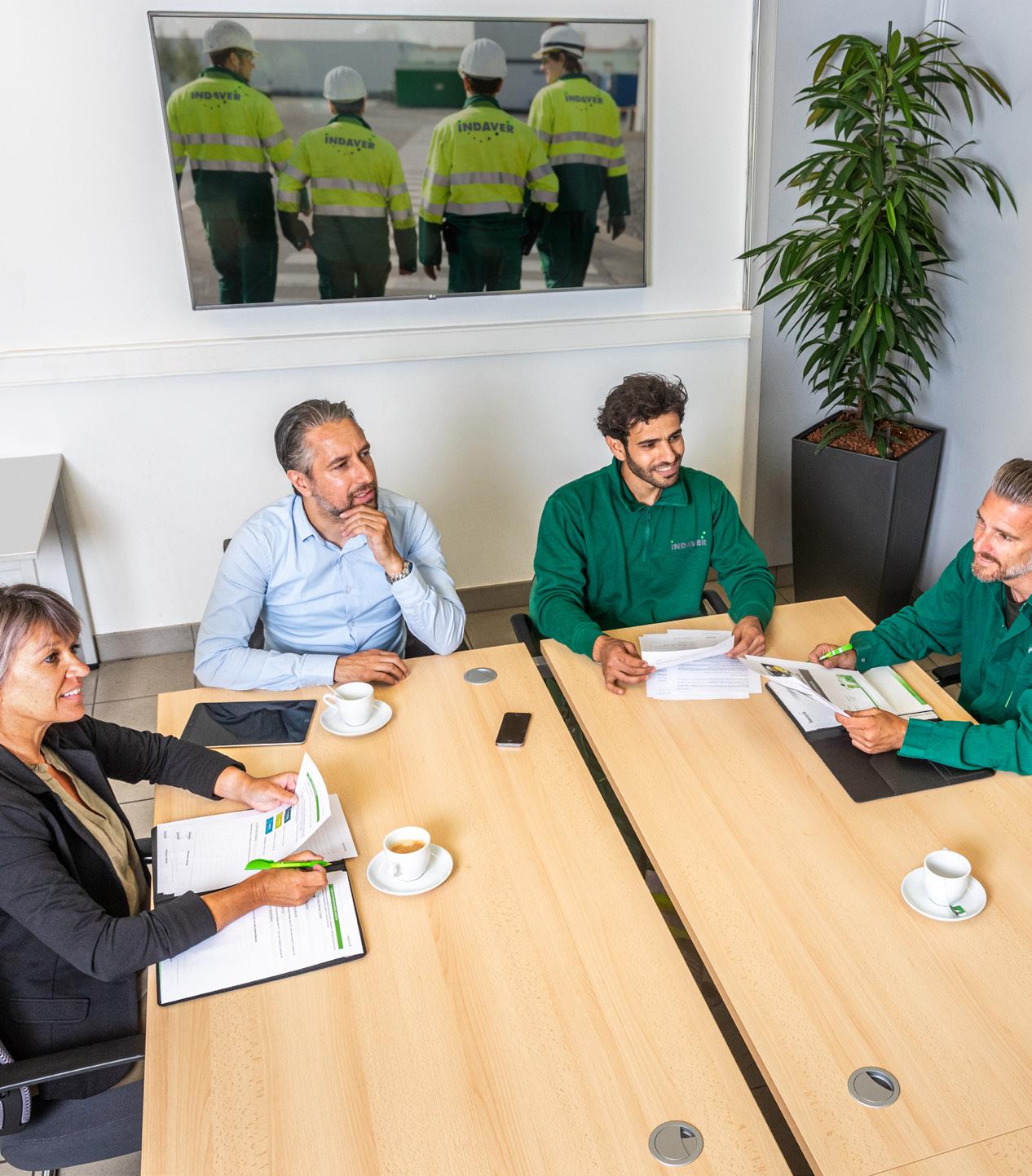
Safe and healthy workplace
Why important?
Driven by our circular vision and a true commitment to decisive action, Indaver is working on a remarkable growth story. In recent years, for example, we have started large-scale projects in various countries to recover materials and energy from waste, or to protect our cycles from harmful components.
This constant growth requires a lot of extra workers. This is why in 2024 we welcomed almost 400 talented new employees to the group. And the year before was an absolute record year: we welcomed hundreds of new colleagues in 2023. For this growing team, safety is our number one priority. Simply put, we either work safely or we don’t work at all.
Our growth and continual professionalisation at all of our locations also comes with a second safety aspect: online security. We are using more and more digital technologies to optimise our services and we are more digitally connected as a group than ever. Many actions in 2024 were therefore aimed at increasing our cyber resilience.
Our objectives and approach
On each site, we adhere strictly to all applicable health and safety laws, rules and standards. However, compliance with regulations is simply the foundation of our work. We can only build a safe working environment if everyone thinks and acts proactively. Safety is a shared responsibility. In order to promote and support a proactive safety culture we focus on:
Hardware: safe processes with safe machines in safe plants
Software: secure (management) systems and procedures
Peopleware: safe working environments by well-trained people who look out for each other
This ultimate safety objective goes hand-in-hand with a greater focus on leading KPIs (leading KPI = predictive and proactive). We want employees to talk to each other about unsafe situations and near-misses, and to report those cases. This way, we can prevent accidents.
Our approach paid off in 2024: we achieved our annual safety targets with positive results. However, one of our contractors had to register a serious accident during the construction of our site in Rivenhall (UK). This serves to emphasise that we can never allow our vigilance to waver and that we must do everything possible to promote and enforce our safety approach.


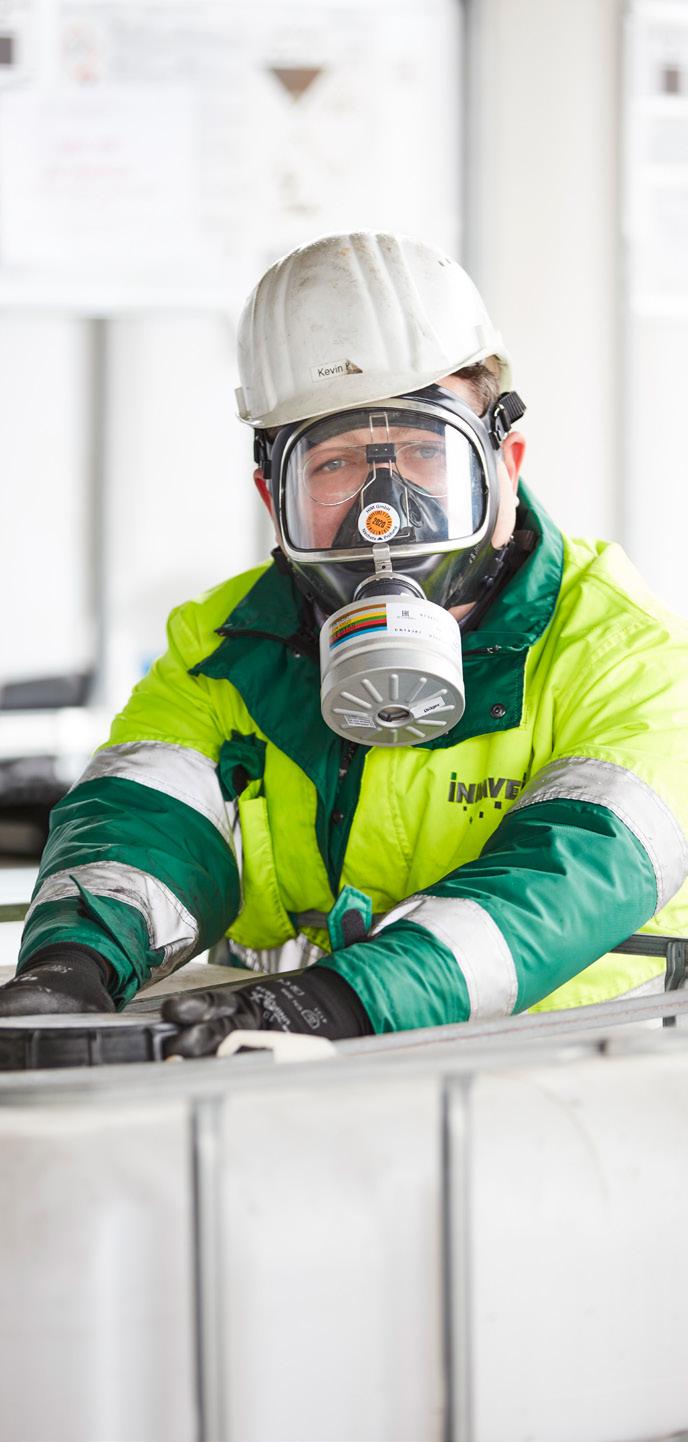
Strong safety indicators: the result of close teamwork
Frequency rate in decline
With a frequency rate (Fr*) of 7.7, Indaver is far below the most recent average for the Belgian waste sector (20.4). We also have an ambitious target for ourselves: a rolling three-year average of -5%. For example, our target for 2025 is to stay below 8.5 for the entire group.
Doubling of risk reports per full-time employee (FTE)
Employee observations are essential for a proactive safety culture. In 2024, we received almost twice as many reports of unsafe situations and near-misses as in 2023, thanks to a stronger focus on them.
Reports help us to create a safe working environment for everyone. In the coming years, we want to maintain this momentum, with a target of 1.2 reports per full-time employee by 2025. The year started promisingly, with an average of 1.15 reports per full-time employee in January and February 2025 – a continuation of the positive trend from 2024.
*Fr = (total number of accidents at work x 1,000,000) / number of hours worked)
Decrease in our Frequency rate for Lost-Time Incidents, as well as our Safety Index (Fr & SI).
In Hamburg (Germany), Terneuzen (the Netherlands) and Dublin (Ireland), no violations were found by the government during the Seveso inspections in 2024.
Our projects and initiatives in 2024
One of the key words in the field of safety was transformation. We made a number of structural changes to further improve safety and health at Indaver, such as digital innovations and a new way of working to better support the sites.
Towards a uniform safety and health culture for the entire group
Indaver continues to grow, not only in terms of turnover but also in terms of regions and number of sites. That is why we put a uniform safety and health culture a little higher on the agenda in 2024. The emphasis is on sharing valuable lessons and know-how, so that all sites and teams contribute to safety and health in the workplace in the best possible way.
“Safety and health are the basis for sustainable growth. Through better cooperation between different departments and employees, we have built on the strong foundation from previous years in 2024. We go for evolution, not revolution.”
Robby Schatteman, Corporate H&S Coordinator
Four actions that fit with this approach:
#1 Appointment of safety coordinator at group level
This new role will help us to ensure a uniform safety and health approach across all countries and business units within our organisation. However, accountability in the field of Health & Safety still lies with the business lines.
#2 All pulling in the same direction at H&S event in Hamburg (Germany)
Our Health & Safety experts gathered in Hamburg for a two-day event. There, they got to know each other better and exchanged experiences and best practices, from anticollision systems for forklifts to ways to make teams more aware of risks. Also on the agenda: evaluation of our new Health & Safety requirements. The event was so much appreciated by the participants that we have already planned the next one – see you in Meath (Ireland) in 2025.
#3 Support every site appropriately
Together, we developed Health & Safety requirements for all of our sites. These comprise about 150 questions on various topics. For example, we are sounding out the approach to our sites in terms of explosion safety, ergonomics, training and mental health. Each site scores itself for the individual elements, then we look at how sites can learn from each other.
In 2025, we will carry out a group-wide baseline measurement on our sites based on the questionnaires. This format is in line with our management systems and guarantees a common approach to working around Health & Safety.
#4 One reporting system and insightful dashboard
In 2024, we did a lot of work to enable reporting on Health & Safety in the same way across all regions, which will come into effect in 2025. This focuses on the reporting of leading data, i.e. how many reports have been received and what they detail, and lagging data, i.e. what went wrong and why.
From the uniform digital data – available on a new online dashboard – we will then extract insights to allow us to make better-informed decisions and draw up a hierarchical list of priorities.
Every employee will be able to easily view and monitor the data. This will increase the attention to safety of every employee, as well as the motivation to report dangerous situations. We will highlight the importance of self-reporting with a major communication campaign in 2025.
Recognition
Indaver Plastics Recycling receives prestigious Highly Protected Risk status
In November 2024, Indaver Plastics Recycling (IPR) in Willebroek (Belgium) followed in the footsteps of our sites in Meath (Ireland), in Antwerp and Doel (Belgium), and in Dunkirk (France) when it received the Highly Protected Risk status from our main insurer, FM Global.
This rating shows how strongly Indaver is committed to the implementation of measures to protect against fire, natural hazards, mechanical defects in machinery and also cyber risks. It emphasises our continuous pursuit of improvement.
“Before taking a sample of a contaminated water load, I noticed that the waste stream was not on the List of Personal Protective Equipment. I immediately reported this to my shift leader, checked the available information about Personal Protective Equipment and put on the appropriate equipment. Then I updated the standard list to avoid misunderstandings in the future.”
Aidan Byrne, Process Shift Operator
BLIJF ALERT!
Safety
Champions in the spotlight
Sensitisation
Voor mij als valkenier is een goed gehoor essentieel, daarom let ik er altijd op dat ik mijn gehoor goed bescherm. Bij Indaver zie je bij het binnengaan van de installaties pictogrammen hangen die aangeven welke PBM’s je moet gebruiken. Zelf gebruik ik gehoorkappen in de installatie om mijn gehoor te beschermen. Bescherm je gehoor, want opgelopen gehoorschade is onomkeerbaar. Als je het merkt, ben je eigenlijk al te laat.
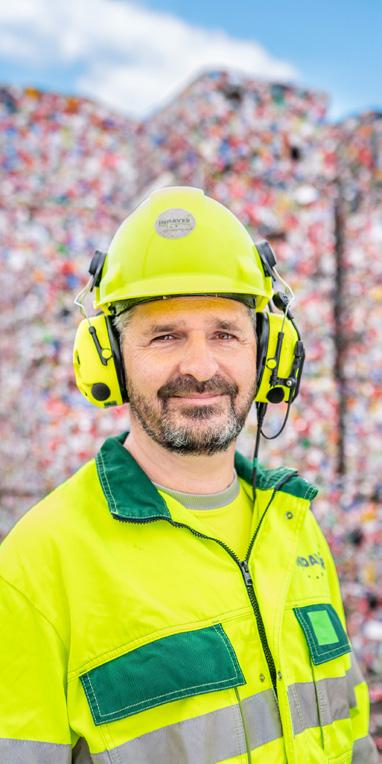
werken
In Ireland and the UK, Indaver recognises a number of Safety Champions every quarter. These are colleagues who – outside of their normal range of duties – proactively make reports to improve safety for everyone. We not only put them in the spotlight as Safety Champions, we also share their reports through our internal communication channels, including feedback from management and any follow-up measures.
Training
Increased resilience with incident leadership training
If there is an unexpected event, responding quickly and sensibly can make all the difference.
With this in mind, we organised half-day training courses on the tasks and responsibilities of employees at different levels. The training was conducted by an external trainer and contained many practical examples from our various sites and a full description of local legislation, which made it extremely instructive.
Campaign: Stay Alert! Listen smart, protect your hearing
In our working environments, exposure to high noise levels is sometimes unavoidable. That is why good hearing protection is essential. We made this clear with a new safety campaign in Belgium, the Netherlands and the United Kingdom, including posters, testimonials and a dedicated page on our website with all relevant information on the topic.
Key advice was to:
Always wear hearing protection when there is noise above 80 dB(A).
Always check that your hearing protection is clean, undamaged and fitted.
Pay attention to the icons that indicate which PPE to use.
From 2025 onwards, we will increasingly organise this type of campaign at group level.
“For me as a hobby falconer, good hearing is essential, which is why I always make sure that I protect my hearing well.
Protect your hearing, because once hearing damage has been suffered, it is irreversible. If you notice it, you’re actually too late.”
Gunter
Maes, PMD department coordinator in Willebroek (Belgium)
Campaign: human behaviour as a game changer
For a full year, a campaign on Behaviour Based Safety (BBS) ran in Ireland and the UK. This is an approach to workplace safety that focuses on observing, analysing, and adjusting employee behaviour to prevent accidents and improve overall safety performance.
As part of the campaign, posters were made, a quiz was organised, and much more. The whole campaign centred around the central theme of the 12 main human errors, or the ‘Dirty Dozen’. At the same time, we could see that the number of safety reports being logged continued to move in the right direction, so we knew the information was being taken on board and acted upon by employees.
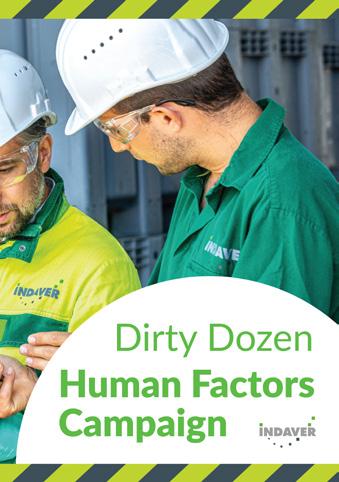
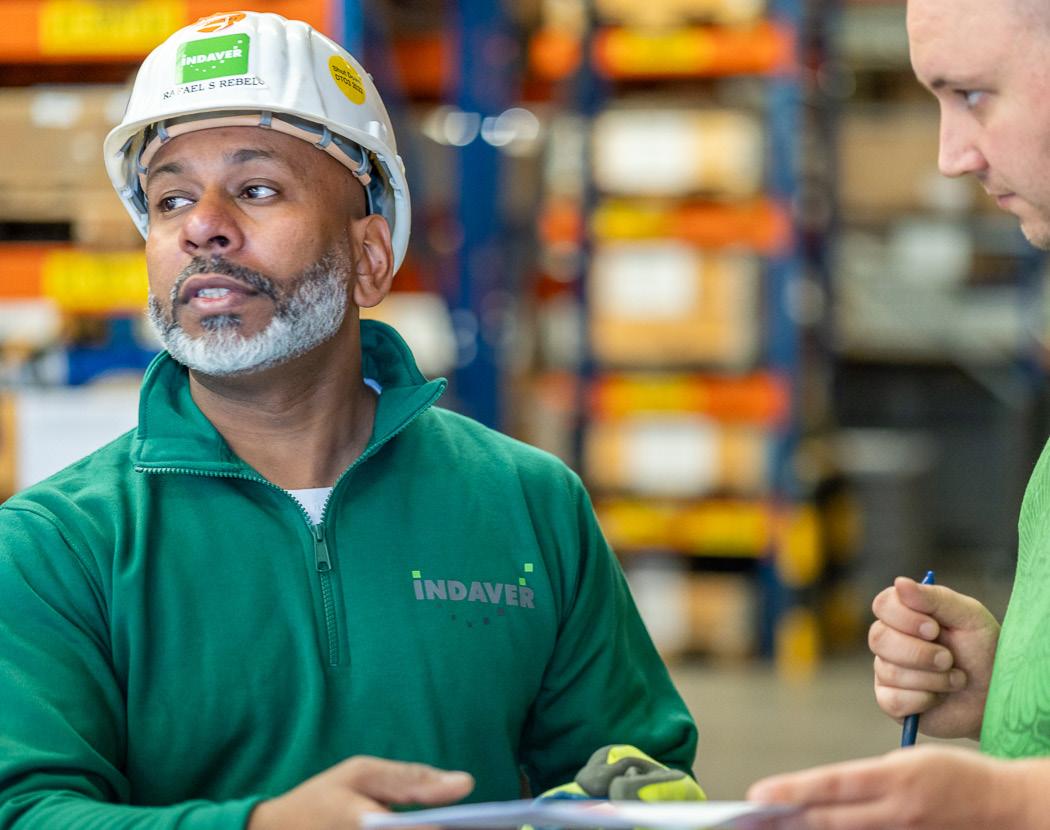
Involving local communities
Why important?
Indaver manages several sites in 9 European countries. That means we are surrounded by many local communities. And we see that as an integral part of our success. Those local communities are where most of our employees live and where our customers and suppliers come from.
Equally, the local communities come to realise that Indaver plays an essential role in society. By continuing to inform local residents about our work, including our efforts regarding the care of the environments at our sites, we strive to build a good relationship with them.
As a result, we consider it completely normal that the CSRD requires companies to report on their engagement with local communities (where applicable). This is how we work ourselves and have always worked. At Indaver, ‘openness in word and deed’ and ‘mutual trust’ are two core values that we have been promoting for decades.
Our objectives and approach
Our main objective is as simple as it is impactful: we want to be a good neighbour. Or to put it
another way, we want to be a responsible and respected member of all the communities in which we operate.
We do this in a number of ways, including:
Tours and events to introduce local residents to our installations.
Timely and transparent information about our future plans.
Providing a platform to voice concerns and questions.
The care of the natural environment and the cultural or historical heritage.
Actions in which we share our expertise and added value in an accessible way.
The common thread here is that we always put transparency first. We do not shy away from critical questions and we actively share studies, emission values, research results and so on.
In 2024, engagement with the local community was again an important theme for all our sites and was expressed throughout the year in several different initiatives.


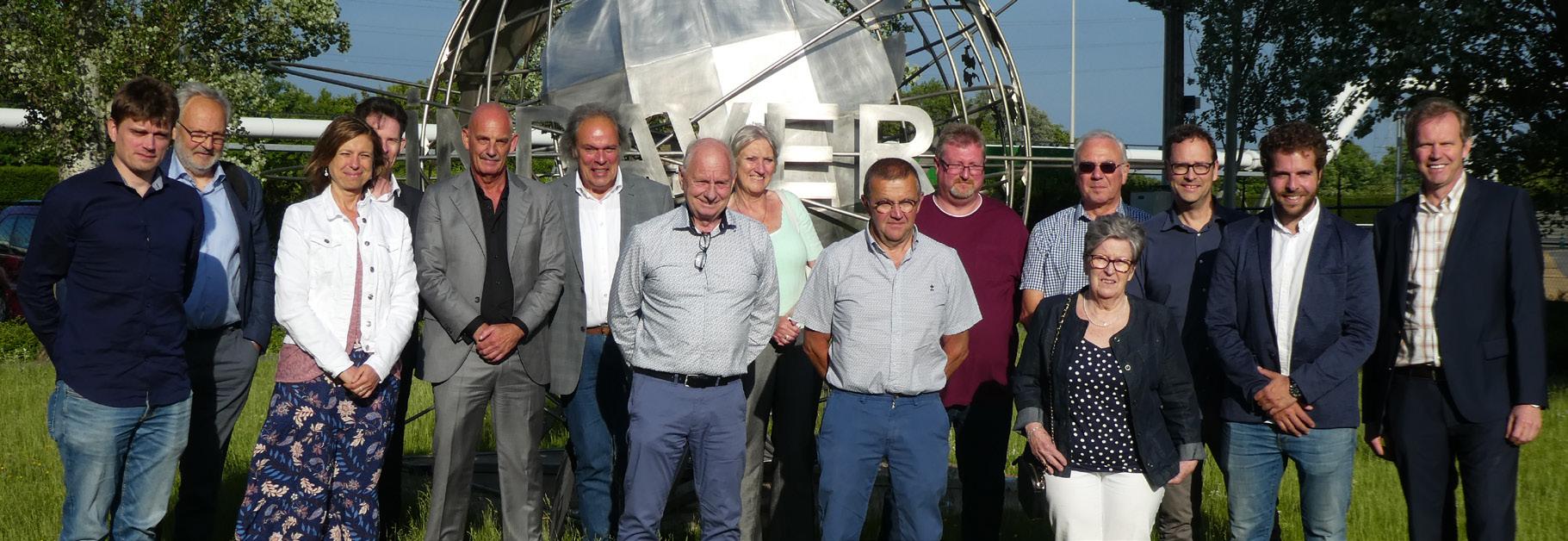
neighbourhood council in Antwerp.
Our projects and initiatives in 2024
Neighbourhood councils in Antwerp and Doel (Belgium)
Indaver has neighbourhood councils and consultation committees at several locations. This is where we present our plans and results, listen to suggestions from local residents, and try to build a relationship based on trust. This mutual respect and cooperation promotes understanding and some neighbourhood councils, such as those in Doel and Antwerp, have been doing this important work for decades.
Important: in addition to the regular consultations, we also organised additional consultations in 2024 as part of our PFAS approach – a theme that we know is very much a hot topic in society.
A visitor experience centre at the Rivenhall site (UK)
In Essex, Indaver is entering the home straight for the opening of our largest Waste-to-Energy plant. But this site also has important historical value. During WWII, for example, it was a base for the British Royal Air Force (RAF).
As we want to preserve this history, we are transforming one of the old buildings on the site into a visitor experience centre: an on-site museum that will serve as the starting-point for guided tours of the Rivenhall site. In 2024, this experience centre took shape and we are also continuing with our plans to create a habitat for animals by planting tens of thousands of trees and shrubs.
The fact that the local residents appreciate our efforts in this regard was evident from the cooperation we received during the exceptional transportation of the site’s turbines and generator to the Rivenhall site. For example, we had to clear the road at night for the huge trucks, so people had to temporarily move their cars to facilitate this. Because we had discussed this in detail with everyone involved, everything went smoothly.
Did you know that ...
… the Rivenhall site is dug into the ground at a lower level so that the installation will blend into the flat landscape as much as possible?
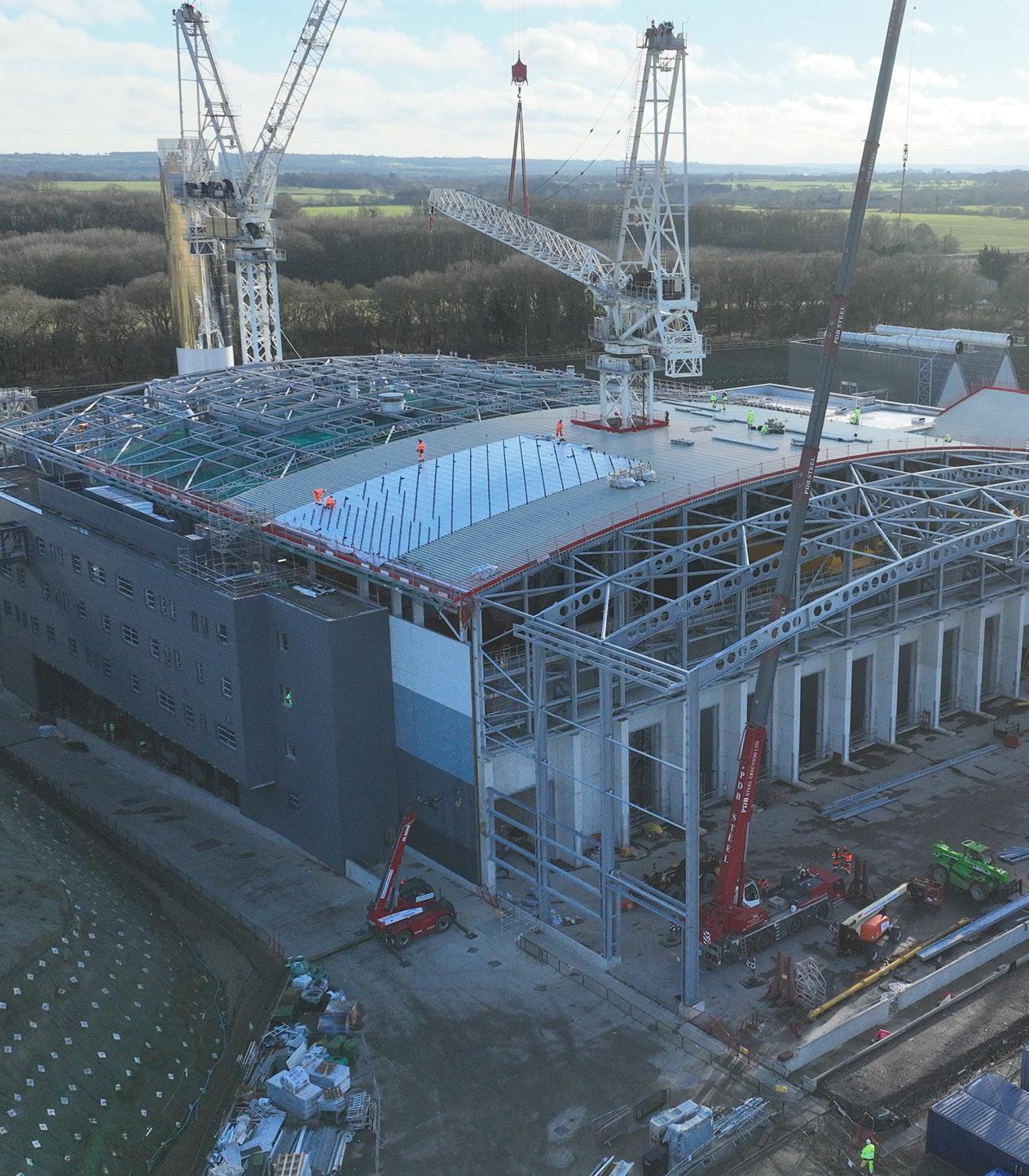
Sustainable energy for local communities
The energy we generate when processing waste is primarily used to power our own operations. In addition, we provide a large portion of the energy to local consumers in the form of steam, heat, electricity, and green gas. Here is an overview of our energy supply to local communities.
United Kingdom
Aberdeen
Through the NESS Energy-fromWaste Facility in Aberdeen, Scotland, Indaver supplies electricity to the grid.

Rivenhall
Our largest Waste-to-Energy plant ever will soon generate energy in the form of steam and electricity from waste processing.
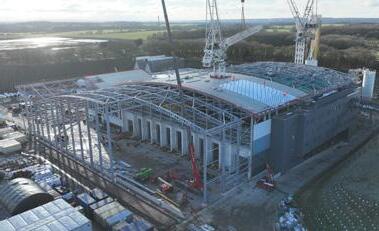
Ireland
Meath
From the processing of nonrecyclable waste, our installation recovers energy that we supply to the national electricity grid.
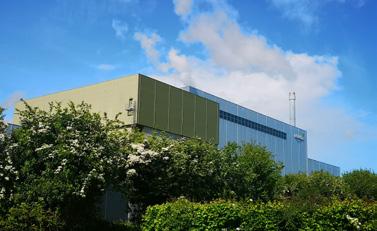
France
Dunkirk
IndaChlor: our plant supplies steam via pipeline to the neighbouring company, Ryssen.

Netherlands
Alphen aan den Rijn
Our installations ferment organic waste into biogas. We process that into green gas of a very high quality that we supply to the grid.
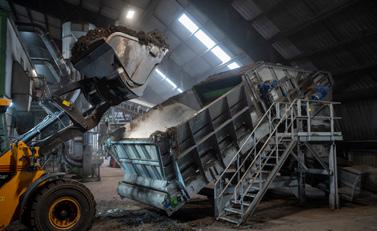
Germany
Hamburg
From our rotary kilns, we supply heat to a residential city network.

Belgium
Doel & Antwerp
ECLUSE: a steam network for large industrial customers from our Waste-to-Energy facility in Doel. Part 2 is under construction for customers on the other bank of the Scheldt.
Doel
From our Waste-to-Energy facility and the E-Wood power plant, we focus on electricity production to supply to the grid.
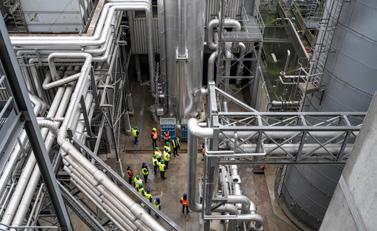
Antwerp
Antwerp North Heat Network: a heat network from our rotary kilns, with Boortmalt malting plant as our only customer. Expansion is currently under construction by Fluvius to also supply heat to surrounding residential areas.
At the Hooge Maey landfill site, Indaver is committed to the energy valorisation of landfill gas (methane). We supply this to the grid in the form of electricity.
Ghent
FOSTER: as soon as our new sludge treatment plant is up and running, it will supply steam to steel producer ArcelorMittal as an additional power supply for its internal steam network.

Involving local communities - Our projects and initiatives in 2024
Tomorrowland music festival flies 13,525 flags thanks to Indaver
A prime example is our collaboration with Tomorrowland, one of the world’s 10 largest music festivals.
What do we do? The waste from the festival site is sorted and then transformed into new raw materials in our installations. No fewer than 13,525 flags were made from these new raw materials and they lent vibrant colour to the 20th anniversary of Tomorrowland in 2024.
From discarded cups and cans to new flags, it goes like this:

Contributing to local initiatives and organisations
Strong links with the education sector in Aberdeen (Scotland)
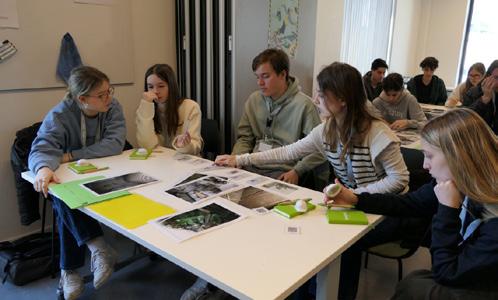
Indaver has been managing the NESS Energy-from-Waste Facility in Aberdeen since December 2023, and is also managing the Community Benefit Programme there. Within this programme, Indaver aims to achieve 17 objectives that revolve around education, employability, training, social wellbeing, and opportunities for local SMEs and charities.
In 2024, we put a lot of focus on education. NESS welcomed local schools to the facility, with our staff also travelling to surrounding schools to discuss the circular economy and waste management. We helped students with career path preparation and conducted mock interviews to prepare them for the real thing. Also, within the education and
employability topic, the facility hosted foundation apprentices with a focus on business skills. This six month, ½ day per week placement, lets the local pupil experience a typical day at the facility, assisting in administration and operational routines.
Targeted sponsorship within the King Baudouin Foundation (Belgium)
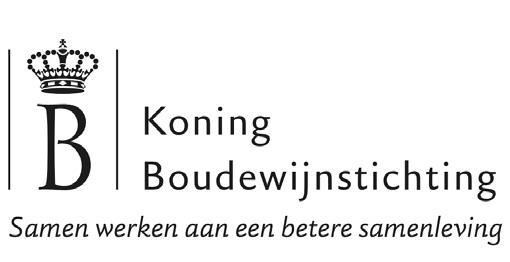
There is a growing awareness everywhere that the way we are devouring energy and raw materials, as well as the way we are producing waste, will ultimately make the planet uninhabitable. But many people struggle with the question of how to change their way of life to make a positive contribution.
The Sustainable Materials and Energy Management Fund, an initiative of Indaver and the environmental organisations ABLLO and BBL, was set up to inspire people, organisations and companies to change their behaviour by supporting sustainable and innovative projects on materials and energy management. In 2024, for example, the fund supported four exciting
projects, including sustainable viticulture and a cooperative supermarket.
Financial support for 29 initiatives on the environment and quality of life (Ireland)
On 26 September 2024, Indaver awarded support to initiatives within the Carranstown Environmental Projects Grant Scheme, a programme managed by Meath County Council. The annual support is intended to improve environmental and recreational facilities, such as heritage projects, wildlife protection, sports events, community facilities and youth and elderly clubs.
+3 million euros
This is the total amount of financial support that Indaver in Ireland has given to local charities, groups and organisations over a period of 14 years.
View the 29 selected initiatives for 2024.

Openness and knowledgesharing
Why important?
Indaver is a distinct knowledge company. We are happy to share and discuss the unique knowledge and experience of our employees internally, but we also do so with people outside our organisation.
External collaborations around knowledgesharing help to enrich our own insights, while also contributing to a more positive image of our sector Many still see Indaver as a wasteprocessing company, but our social role has now taken on a much broader dimension. This is one of the key things we try to make clear to students – after all, they are the experts and entrepreneurs of tomorrow.
We also see external knowledge-sharing as a catalyst for innovation. The generation of optimal value from waste is more effective in an ecosystem of research institutions and companies that work together. We would like to take the lead in this. As the saying goes: ‘Alone you go faster, together you go further’.
Our objectives and approach
In order to show ourselves as a reliable partner for the development of a circular economy through cooperation and dialogue, we are focusing on several initiatives:
Education: we give students a taste of (work) life at Indaver and we also actively participate in educational programmes by going out and standing in front of the class and talking to the students about our work.
Public opinion and industry: many employees participate as guest speakers in events related to the circular economy.
R&D: as our fields are constantly evolving, it is essential for us to continue to develop our expertise and learn from others.


Our projects and initiatives in 2024
Internal knowledge-sharing
Waste Management Course for all new employees
Twice a year we organise courses on the core tenet of our work: how do we deal with waste?
These courses exist both live and digital, and in both compact and extended versions. Whichever version participants choose, the intention is that at the end of the day we will all be speaking the same language with regard to Indaver’s work.
Important: we update the course every year and make it a key course. It is a regular undertaking for newcomers and forms part of our 4C suite of courses.
During the Waste Management Course, we discuss:
sustainable waste management in practice processing and recovery techniques customer needs and market evolutions link with the European Green Deal our 10 ethical principles
4.5/5
Internal score for the Waste Management Course based on 25 reviews.
Competency hubs to stay on top
Through International Operational Competence Centers (IOCCs), we bundle and increase our knowledge in various knowledge domains. For example, there are IOCCs for Energy & Climate, Residue Management and Waste-to-Energy.
Indaver experts from different regions and departments work in the IOCCs with the following tasks:
Set up knowledge management initiatives (courses, self-training, e-learning, etc.).
Share best practices and proven techniques and encourage their implementation.
Collect relevant knowledge (reports, studies, etc.) and make it available to others.
Identify continuous improvements and potential innovations.
Be a point of contact for urgent questions and structural support.
Help draw up project charters according to the standard procedures.
The goal: to increase our operational excellence in order to remain a leader in sustainable waste and materials management.
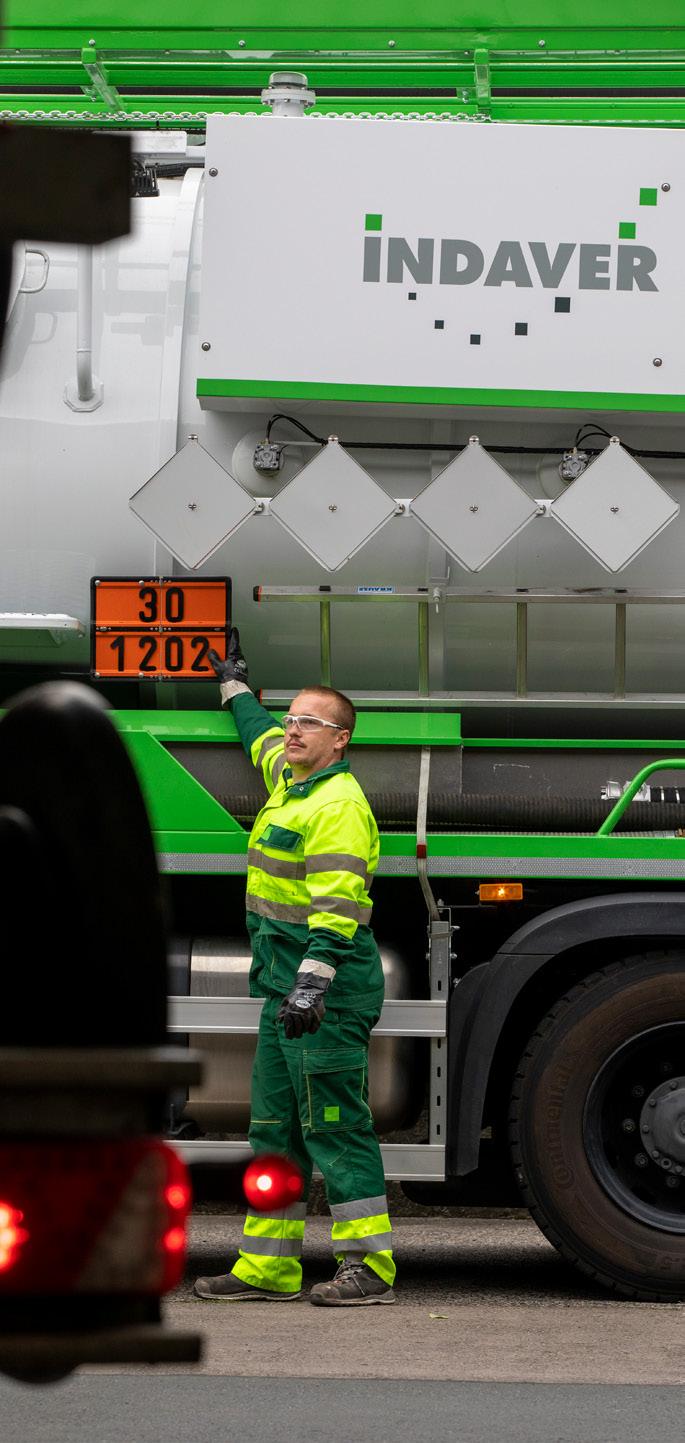
External knowledge-sharing: education
Advanced Master’s degree from University of Antwerp (Belgium)
The Institute for Environment and Sustainable Development of the University of Antwerp (IMDO for short) offers innovative, interdisciplinary and internationally oriented education through interfaculty collaboration. Sometimes, IMDO also involves external practical experts in its training courses. As one of these external guests, Indaver’s experts provide unique added value to the new advanced Master’s programme in Environmental Science. The first year of the programme started in 2024 with around 70 students, which immediately indicates the interest among students in contributing to a circular economy.
“The fact that we are the only external partner to be able to participate in the advanced Master’s programme in Environmental Science is a great recognition of the experience and expertise we have built up within Indaver.”
Johan Offeciers, Sales Director IWS
STEMfluencers inspire young people for our sector
Every year, dozens of business experts from chemical and life sciences companies set out to give guest lectures in the first grade of secondary education in Flanders (Belgium). Indaver is a loyal participant in this initiative, with two employees setting a good example in 2024 ...

External knowledge-sharing: public opinion and industry
Participation in IFAT (Germany)
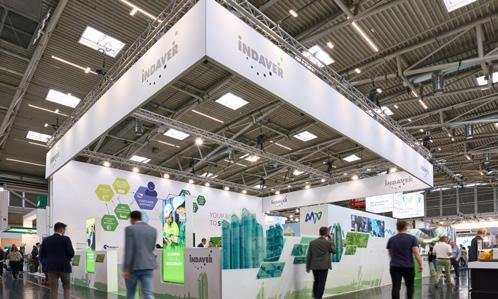
In May 2024, Indaver participated in the huge IFAT trade fair in Munich, the trade fair for waste, water, energy and materials management. We had a stand of 180m2 and upon entering it, visitors immediately experienced the cornerstones of Industrial Waste Services (IWS).
At IFAT, Indaver illustrated how we see the road to greater sustainability. We highlighted our European network of installations and heat and steam networks close to the large industrial clusters and cities. We also described our innovative solutions for the recycling of precious metals, end-of-life plastics and solvents, or the treatment of toxic wastewater.
Indaver presents two popular guest lectures at IFAT
To outline and explain our circular vision, two colleagues gave a well-attended guest lecture: Dina Filiz, Regional Sales Manager North-East Germany, and Korneel Van Aelst, P2C Manager Waste Supply.
“At the opening speech of IFAT, German Environment Minister Steffi Lemke emphasised the need for a circular economy in response to the scarcity of raw materials. She stated that environmental technology is vital to sustaining our current way of life. This is precisely what Indaver is responding to.”
Stefan Kühnbach, Chief Commercial Officer IWS
Indaver employees share their passion for chemistry and sustainability during guest lectures at secondary schools.
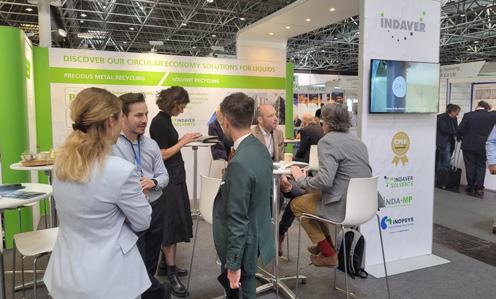
Participation in Chemspec 2024 (Germany)
On 19 and 20 June 2024, Indaver and its divisions Indaver Solvents, Inopsys and Inda-MP were notably present with their own stand at Chemspec Europe. This prestigious trade fair, which took place at Messe Düsseldorf, is the meeting place for professionals in the fine and specialty chemicals sectors.
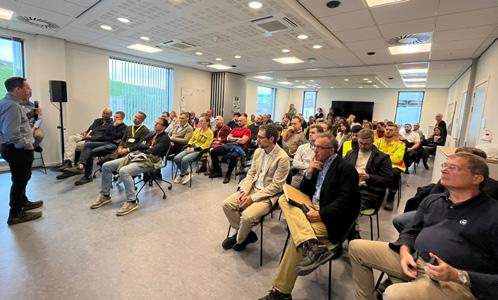
Partner in CEWEP Residues Conference in Mechelen (Belgium)
CEWEP is the European umbrella organisation of Waste-to-Energy installations. Our CEO, Paul De Bruycker, opened the conference as chairman of CEWEP. During this event, which had the theme ‘Ash to Resource’, experts from all over Europe shared their insights on the recovery and sustainable treatment of waste streams from Waste-to-Energy installations.
Wim Ooms, our site manager in Doel, took part in a panel discussion highlighting practical examples from Belgium, Germany, Poland and Spain. This was an excellent opportunity to share our expertise in ash treatment. On the second day of the conference we welcomed the participants to our site in Doel, where we further explained our innovative approach to processing bottom ashes.
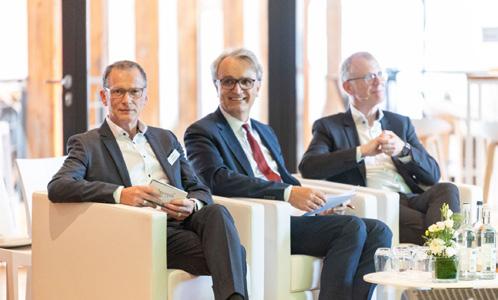
IWS customer event: together for a circular economy in Hamburg (Germany)
Together with our customers, we want to support the Hamburg region in making the circular economy and sustainability visible and successful. With that idea in mind, Indaver IWS organised its very first customer event in Germany, at the Maritime Museum in Hamburg.
First, all customers and representatives of the major industries in Germany had the opportunity to discover our site in Hamburg. They were given a unique look at, among other things, the rotary kiln and the steam network that is connected to the district heating network.
Then, they were taken to the Maritime Museum for an inspiration and networking event. In addition to experts from Indaver, various keynote speakers took the floor, including:
• Andreas Rieckhof, State Counsellor at the Ministry of Economics and Innovation of the Free and Hanseatic City of Hamburg
• Prof. Dr. Rudi Karpf, Honorary Professor at the Technical University of Central Hesse
• Markus Gleis, scientific collaborator at the Federal Environment Agency
• Dr. Miriam Putz, Head of Innovation and New Markets at the Hamburg Chamber of Commerce
The presentations highlighted how crosssectoral collaboration can accelerate growth in the region and strengthen the transition to sustainable operations.
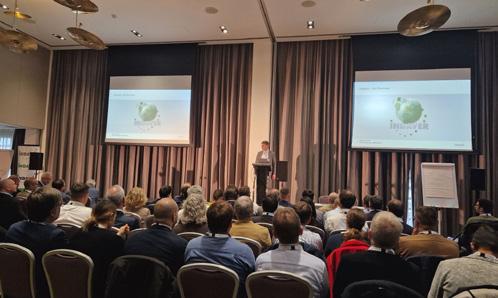
Prewin conference takes place in Dublin (Ireland)
The semi-annual conference of Prewin, a European network of 198 companies active in the Waste-to-Energy sector, took place in Dublin at the end of 2024. Experts shared best practices to work together towards optimal performance and technological progress. Indaver gave a presentation and a visit to our facility in Meath was also on the conference programme.
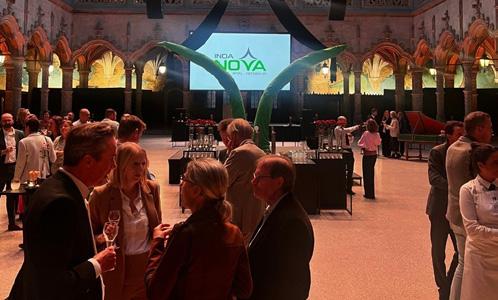
Customer event MSW: launch of our
new business model
IndaNova (Belgium)
In the autumn of 2024, Indaver organised an exclusive event at the renovated Handelsbeurs in Antwerp to introduce IndaNova, the new name for MSW Belgium’s innovative business model. This business model consists of three core promises:
With a passion for knowledge-sharing Near our network
Always progressive
We told the 150 attendees, including customers, partners and other stakeholders, how IndaNova fits perfectly with our ongoing commitment to value creation from waste and closing cycles. In addition, we also shared the latest developments within our sector. And, as icing on the cake, those present were given an exclusive tour of the historic building.
External knowledge-sharing: R&D
Plastics2Chemicals (P2C): research into circular plastics
Within the innovative P2C project, we will soon reach a milestone with the opening of our advanced recycling plant. Behind the scenes, we have been contributing our expertise to various projects on circular plastics with knowledge institutions and other companies, such as:
Cat4PS: Optimisation of polystyrene-recycling
Together with our partners, we are developing the business case for the recycling of PS and reducing the ecological footprint of the recycling process by, for example, depolymerisation at lower temperatures and better valorisation of by-products.
ICON-project PolyAl Circular
How do we make tetrabrik circular? This project addresses that question. Due to the composition of tetrabrik, high-quality mechanical recycling is impossible, but chemical recycling does offer prospects.
More info about IndaNova on p. 22
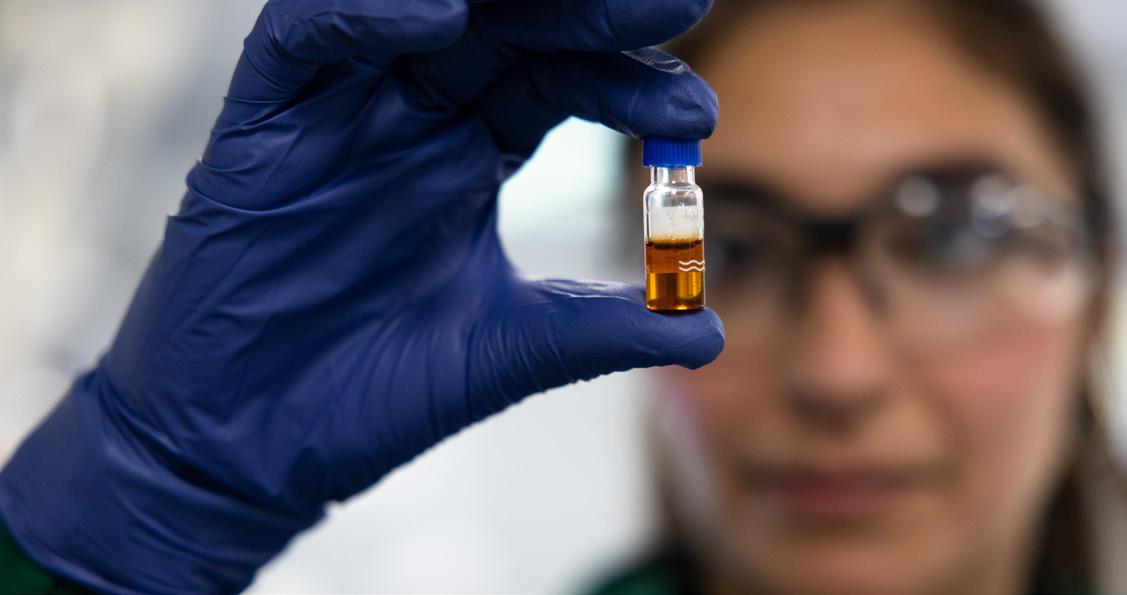
Governance
Shaping the circular economy by working together
We see ethical conduct and corporate social responsibility as the cornerstones of sustainable growth. Conducting our business in this way inspires confidence among external stakeholders, ensures higher engagement in the workplace, attracts new talent, and opens doors to new markets. It is also the case that a stable organisation, with a healthy financial basis, is a pre-requisite for working within a circular economy in the long term.
Indaver is fully committed to innovation in the transition to a circular economy. Our strength lies in our collective intelligence and know-how, which we use both to launch groundbreaking innovations and to continuously take incremental improvement actions.
All of our employees play an important role in shaping the circular economy. They are supported in this by a broad network of partners and numerous collaborations with knowledge institutions.
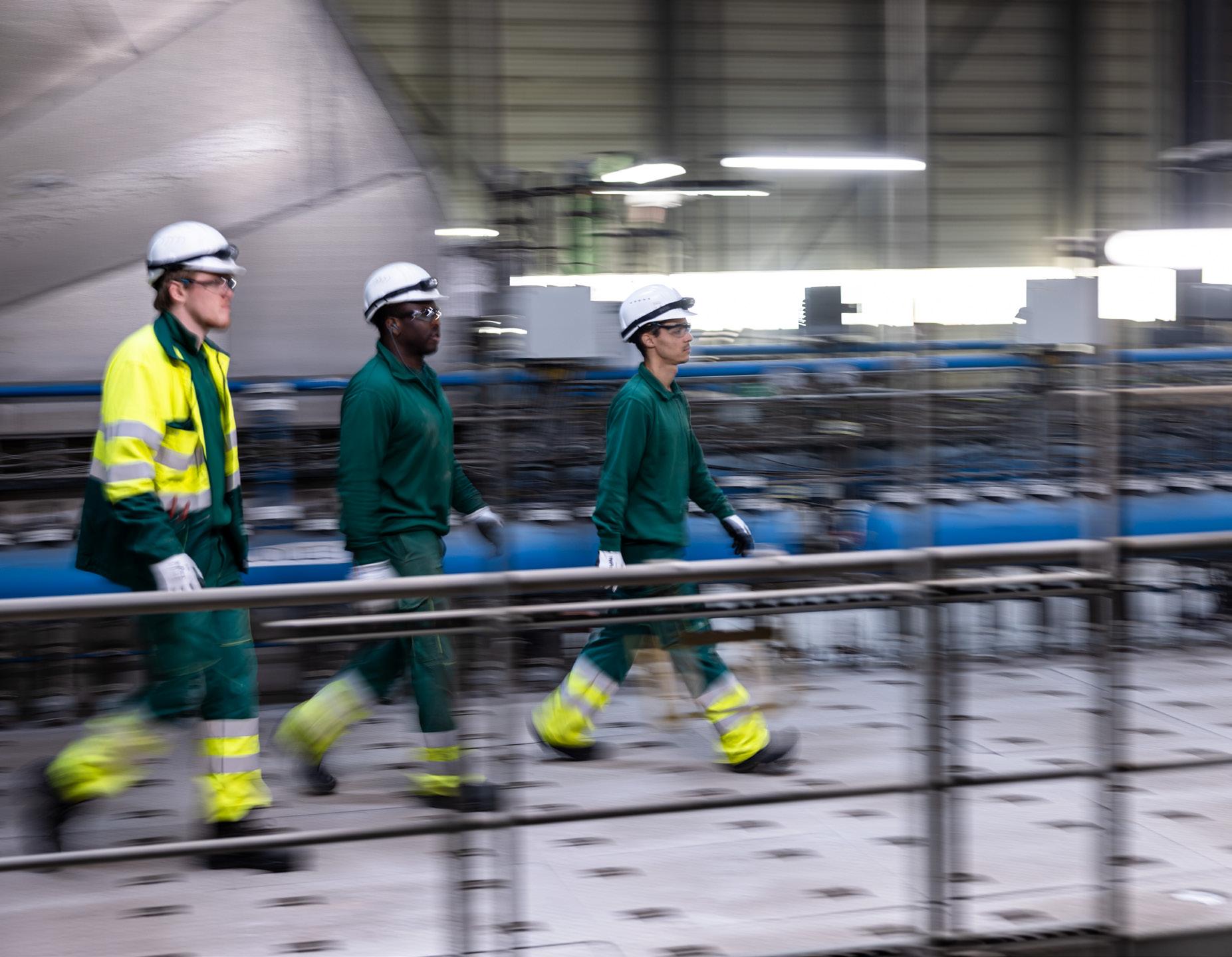
Pursuing sustainable growth
Why important?
A strong financial foundation ensures stability and resilience. This is crucial to be successful in a rapidly changing society and volatile market. The fact that volatility can create challenges was certainly evident in 2024: energy prices fell back to the level of a few years ago, geopolitical uncertainty increased, the global raw materials market remains unpredictable, and waste flows are constantly evolving.
A strong business performance is also crucial to make a difference in terms of sustainability. At Indaver, we live by the maxim: ‘Do well and do good’. For us, both go hand in hand. This tells us that, for example, we can only invest in projects with a positive impact if there is a high degree of financial stability. And the opposite is also true: sustainable projects can lead to strong financial performance.
Our objectives and approach
We are fully committed to our role as enabler and gatekeeper of the circular economy. We recover raw materials from various hazardous and non-hazardous waste streams that can be reused in new applications, while also maximising energy recovery during processing. And if there are contaminants in those waste streams, society can count on us to destroy them appropriately or to store them safely.
We want to do all this in the most sustainable way possible in order to offer even more value to society.
We believe that our approach will continue to be the right one for sustainable growth in the coming years.
That is why we continue to invest in initiatives that strengthen our position, such as:
high-tech installations with the right scale; the appropriate treatment of new waste streams; the development of new products and areas of work; the recruitment of waste management experts; the further digitalisation and automation of processes; acquisitions of complementary organisations; continuous improvement projects.
These investments will allow us to continue to grow in a controlled manner. This is important because growth is not a goal in itself. We only take steps if they contribute to our mission and fit within our vision of sustainable, reliable and financially responsible waste management.


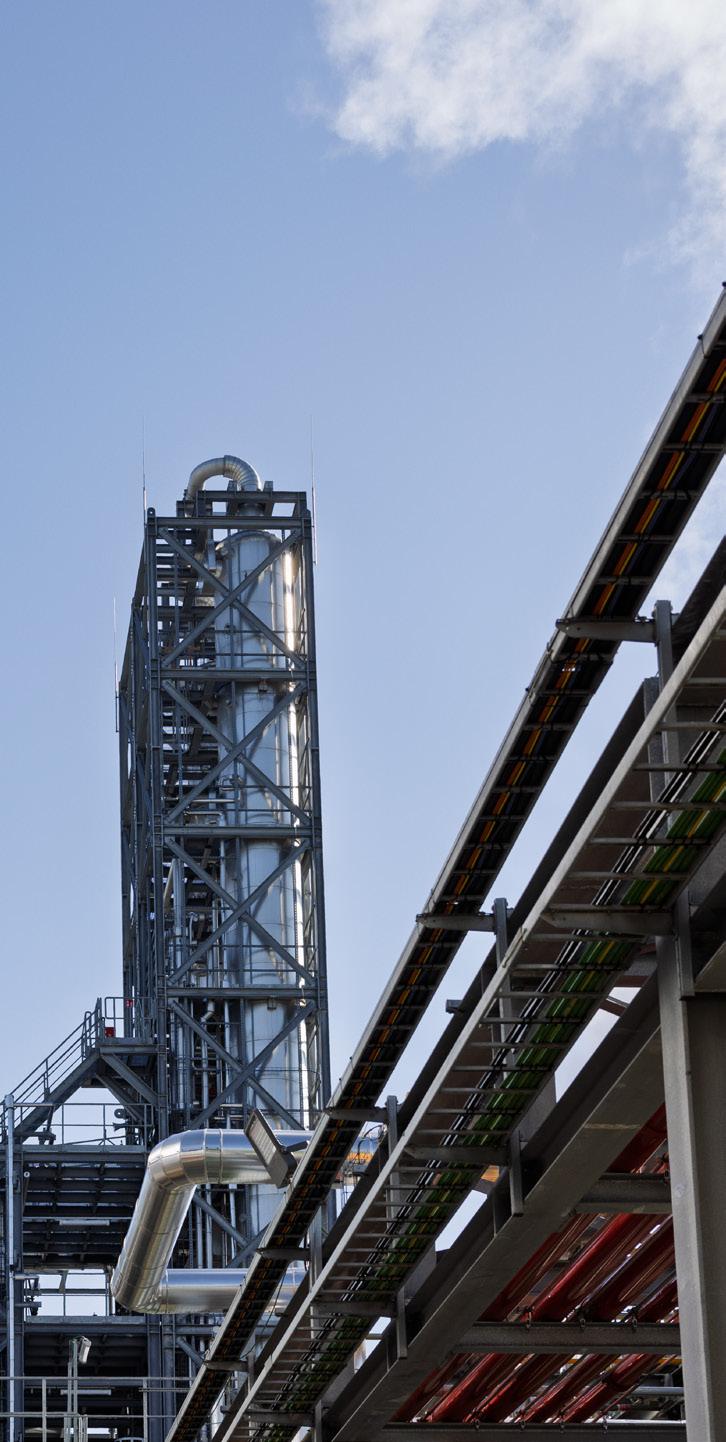

Sound finances as a basis for investments
Despite the challenging conditions (high inflation, uncertain supply chains, labour shortages, declining competitiveness of industrial companies, changing legislation, etc.), Indaver was able to record growth in 2024.
We achieved a turnover of 945 million euros (+8.5%), which brings us close to the symbolic mark of 1 billion euros. Our EBITDA fell to 161 million euros (-12.5%), partly due to adverse energy prices. However, it is important to note that the operational component of EBITDA shows a positive trend. This shows that what is completely in our own hands, under our own remit, is going well.
From this stable financial basis we can set up new projects and continue to invest in the development and commitment of our employees.
Indaver is an important player in sustainable waste management. In fact, through acquisitions, strategic partnerships and new activities within our field of activity, we have grown into one of the most important waste management companies in Europe in recent years.
We have numerous projects in the pipeline that illustrate our resolute commitment to further expansion, such as the expected startup of the innovative Plastics2Chemicals plant (Belgium) and the Rivenhall Integrated Waste Management Facility (UK) in 2025. We also initiated the expansion of the ECLUSE industrial steam network and the FOSTER sludge treatment plant (Belgium).
Our projects and initiatives in 2024
New CEO, same vision
On 1 January 2025, Paul De Bruycker passed the torch to Karl Huts – previously CFO of Indaver – after an impressive career. Both gentlemen had been working together for years towards this transfer. “We consciously choose evolution, not revolution,” they say in unison.

“Today, everyone is talking about sustainability, but it has been at the top of our agenda for almost 40 years. Step by step, we started to create more value from waste streams with a team that genuinely believes in what we do. This commitment is what makes us so strong and why Indaver plays an essential role in the circular economy today. Every colleague can be proud of that, because everyone contributes to it – in whatever position.
And we will continue our momentum, but with a new captain at the helm. Karl is 100% ready and will continue the course with his own style of management. In the meantime, I will remain on board as chairman of the Board of Directors. This is another way to ensure maximum continuity.”
Paul De Bruycker, outgoing CEO
“Our motto, ‘leading in sustainable waste management’, is more relevant than ever. What we achieve together has enormous social added value today and tomorrow. And we do that with a good dose of pragmatism. No empty promises here, just concrete actions. With an innovative and sustainable approach, Indaver makes a difference every day.
Over the past 5 years, I have found that I am more idealistic than I thought. It has only fuelled my motivation to make Indaver even stronger. So, I am ready for the next step. As CFO, I got to know Indaver through and through. In addition, Paul has prepared me very well. Now we are going to redistribute the roles, but we remain a close duo. So don’t expect a major turnaround. We are on the right track with the right people. It’s up to me to give everyone the opportunity to grow into the best version of themselves.”
Karl Huts, new CEO
Investing in the waste management of tomorrow
In addition to organic progress, acquisitions are also important for sustainable growth. But the acquisition of competitors is not a goal in itself. We only acquire companies that share our vision and have alternative concepts and technologies in fields with which we have a strong affinity.
This very specific interpretation of complementarity means that Indaver is very selective in its choice of possible partners. On this basis, we recently embraced some strong new additions.
Acquisition: Inopsys, industrial wastewater treatment specialist
In March 2024, Indaver acquired the Mechelen scale-up Inopsys. The environmental technology company develops innovative solutions for the treatment of complex and toxic wastewater generated during pharmaceutical and chemical production processes.
Why this acquisition?
Inopsys, like Indaver, uses its technology to safely remove Substances of Very High Concern, such as PFAS, from the chain. In addition,
material recovery is also a priority for Inopsys. With its technologies, it recovers valuable materials, such as precious metals and solvents, from industrial wastewater. It is an excellent addition to our Inda-MP and Indaver Solvents solutions.
“Every industrial by-product, including contaminated wastewater from chemical and pharmaceutical companies, is valuable in a circular economy. This award recognises the social relevance of our efforts and motivates us to go one step further.”
Steven De Laet, CEO Inopsys
Rapid growth of Inopsys recognised at Deloitte’s Fast50 Ceremony 2024
In October 2024, Deloitte ranked Inopsys in Belgium’s top 50 fastest-growing tech companies. Inopsys’ turnover grew by no less than 790% in the past 3 years. And Inopsys won the Sustainability Award at the ceremony. Double success!
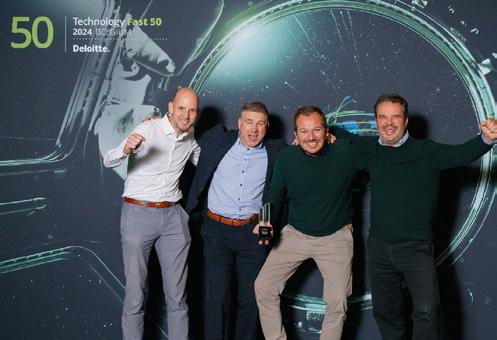
Integration: Dranco, European specialist in fermentation technology
After its acquisition in mid-2023, 2024 was Dranco’s first full year in the group. It is important that Dranco continues to approach its customers completely independently, with its same name and branding.
Why this acquisition?
Dranco has already built dozens of fermentation plants in different countries. These process more than 1 million tonnes of organic waste annually. Therefore, this acquisition allows Indaver to take major steps in the field of sustainable biomass processing. Together, we will work to meet European obligations to separate biomass waste streams and convert them into green energy and materials.
EcoWerf creates energy-positive site thanks to new fermentation plant
The intermunicipal environmental company EcoWerf produces around 20,000 tonnes of valuable compost annually from the organic waste of 28 municipalities and cities in the province of Flemish Brabant (Belgium). Thanks to a new fermentation plant from Dranco, EcoWerf recently started producing biogas from the same organic waste.
The result: 25% of the energy produced is reused in the company’s own buildings and installations, while 75% of the energy generated goes to the electricity grid – good for around 3,000 families. This results in a total CO2 saving of 5,000 tonnes.
“EcoWerf was already a prominent player in the region in the field of circular economy. This fermentation plant will also activate the largest investment in renewable energy production in the territory of Leuven. A milestone for EcoWerf’s ambitions and a serious step forward towards a climateneutral city.”
Wouter Florizoone, vice-chairman EcoWerf
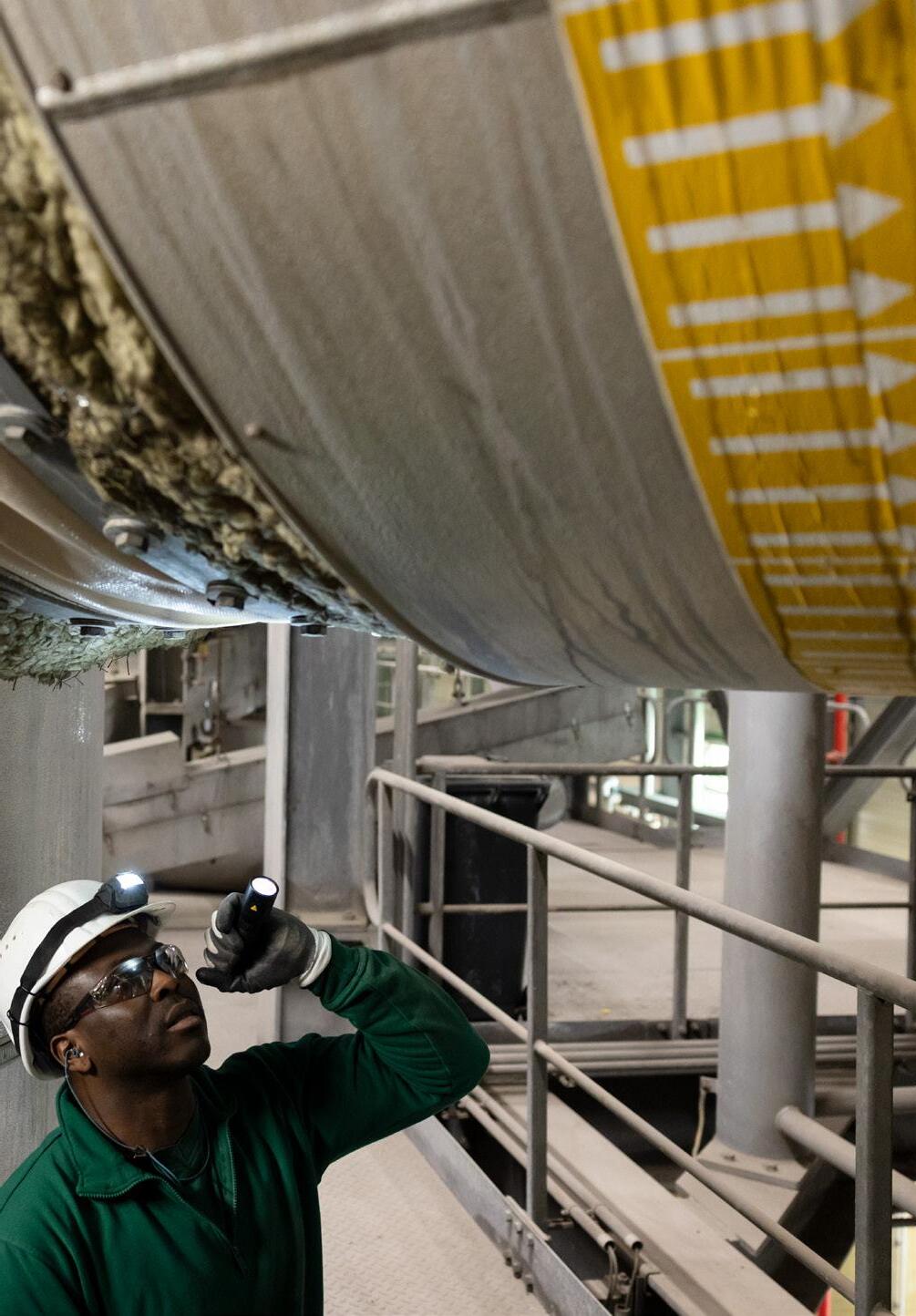
Driven to continuous improvement
Continuous improvement is a long-term approach to better align our services with the needs of customers and other stakeholders. We analyse our performance and do everything we can to systematically improve it, always with the utmost care for people and the environment.
In 2024, we registered around 300 Continuous Improvement projects. They all contribute to one of five possible objectives. You will find these objectives below, with project examples for illustration.
Did you know that ... ... we coached no fewer than 23 employees in 2024 in carrying out Continuous Improvement projects? They all followed a Lean Six Sigma training for this.
Customer audit praises
continuous improvements
In 2024, Indaver Solvents was audited by one of its major pharmaceutical customers to find out if our site meets all the quality requirements. The audit report confirms our strong performance –a good motivation to continue on this path.
Increasing the efficiency and safety of existing installations
Indaver Solvents invests in extra safety (United Kingdom)
We started using a new nitrogen production system in Middlewich. From now on, we will use the nitrogen to cover all process vessels, while we will also facilitate connections for blowing off pipes. We also installed new safety valves for the storage tanks. The result of these investments: a completely safe production facility.
Improving energy production through flue gas condensation in Hamburg (Germany)
In 2024, we developed a technical concept for flue gas condensation in the chimney of our waste incineration plant in Hamburg. The concept allows for an increased heat production of 25 MW, as well as an increased efficiency of the system: from 70% to 90%. The additional energy will be supplied to the steam network of the city of Hamburg and can guarantee an additional energy supply for 30,000 people.
Reducing energy and water consumption
Water use for cleaning in Terneuzen (the Netherlands)
Every year, we use around 16,000 m3 of industrial water for the cleaning of containers, tanks, and railway wagons. About half of that water is heated to 70°C, so that we can clean thoroughly and dry the containers faster afterwards. When we are done, the water is purified. We will investigate how we can put the purified water back to good use and at the same time valorise the heat from that water.

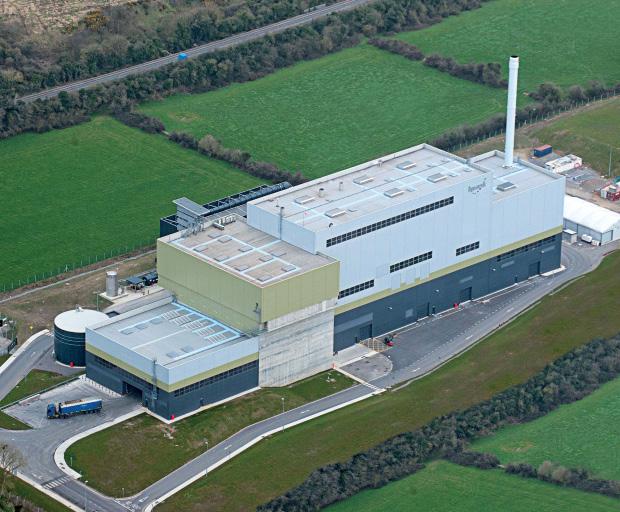
Improving operational processes
Using containers as an alternative to packaged waste (Ireland)
In Meath, the team evaluated all customers based on the packaging used to transport the waste to our facility. They discovered that some customers use excessive amounts of cardboard and plastic. To counter this, large containers provide a sustainable alternative to pallets. This way, less calorific material ends up in our installation. For the customer, it means fewer staff to load pallets and a more compact storage space.
Optimising
and digitising administrative processes
Automated
process for the purchase of lime (Ireland)
The purchase of lime used to be a very manual and therefore time-consuming and error-prone process. It included the monitoring of available lime, but also the purchase itself, delivery, control and payment. As a result, various departments were involved. Now, all steps have been automated in a pilot project. For example, we work with a virtual stock that follows the actual stock, SAP software is the hub for each lime delivery, and the system automatically pays according to the registered weight.
Inauguration of new office in Lisbon (Portugal)
In March 2024, Indaver opened its new office building in the Lisbon region. The event brought together more than 60 guests, including the international management team, Belgian colleagues and Portuguese clients, as well as the Belgian ambassador and representatives of the Belgian embassy.
The new office houses both the Support Centre team and the local Industrial Waste Services team, previously spread over two separate office locations. The new office has sufficient available space to offer opportunities for further growth and development of the Portuguese and international teams.
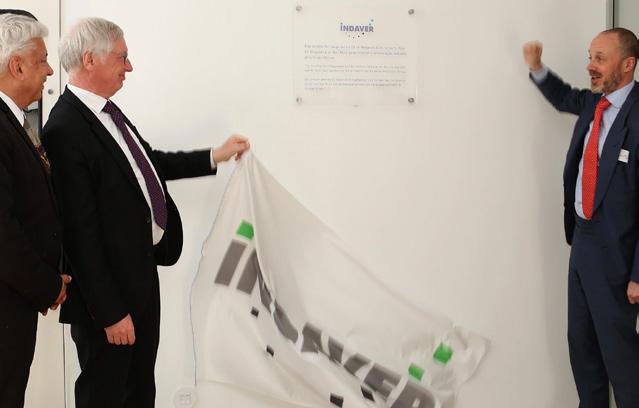
The Waste-to-Energy facility in Meath (Ireland).
Inauguration of the new office in Portugal.
Ethical business conduct
Why important?
The call for responsible entrepreneurship is louder than ever. As a result, there is an increasing focus on themes such as anticorruption, fair competition, socially responsible behaviour, relationships of trust with other organisations, diversity and inclusion, and so on.
Although many aspects are laid down in legislation, ethical business is about more than just complying with the rules (compliance). For us, the true strength lies in the creation of a positive working environment, a spirit of constructive criticism, and an attitude of solidarity. These in turn impact positively on everyone who is part of our value chain.
Our objectives and approach
The principles for setting a good example as a business partner and an employer in all of our geographical areas of activity can be read in a series of policy documents that build on our company code. This company code describes our mission, our key values, our responsibilities and our work culture. In it, we outline our expectations of our stakeholders, and also their expectations of us.
In addition, we have an Employee Code of Conduct. This is aimed at our employees and, more specifically, at their daily behaviour and interactions within Indaver. The document contains detailed rules and procedures on workrelated issues, such as safety, confidentiality, anti-discrimination and reporting procedures.
Both codes help us to foster a clear and consistent culture of integrity and accountability, internally and externally. Important: using e-learning, we ensure that all of our employees know and apply the foundational tenets of our policy.
In addition, close attention is paid to the requirements that Indaver sets out for its suppliers in the field of sustainable entrepreneurship, in particular in our Supplier Code of Conduct and the Charter for Sustainable Procurement. Our suppliers must agree to several core principles, such as respecting human rights, working in environmentally safe conditions, offering employees a fair wage and decent working conditions, etc.

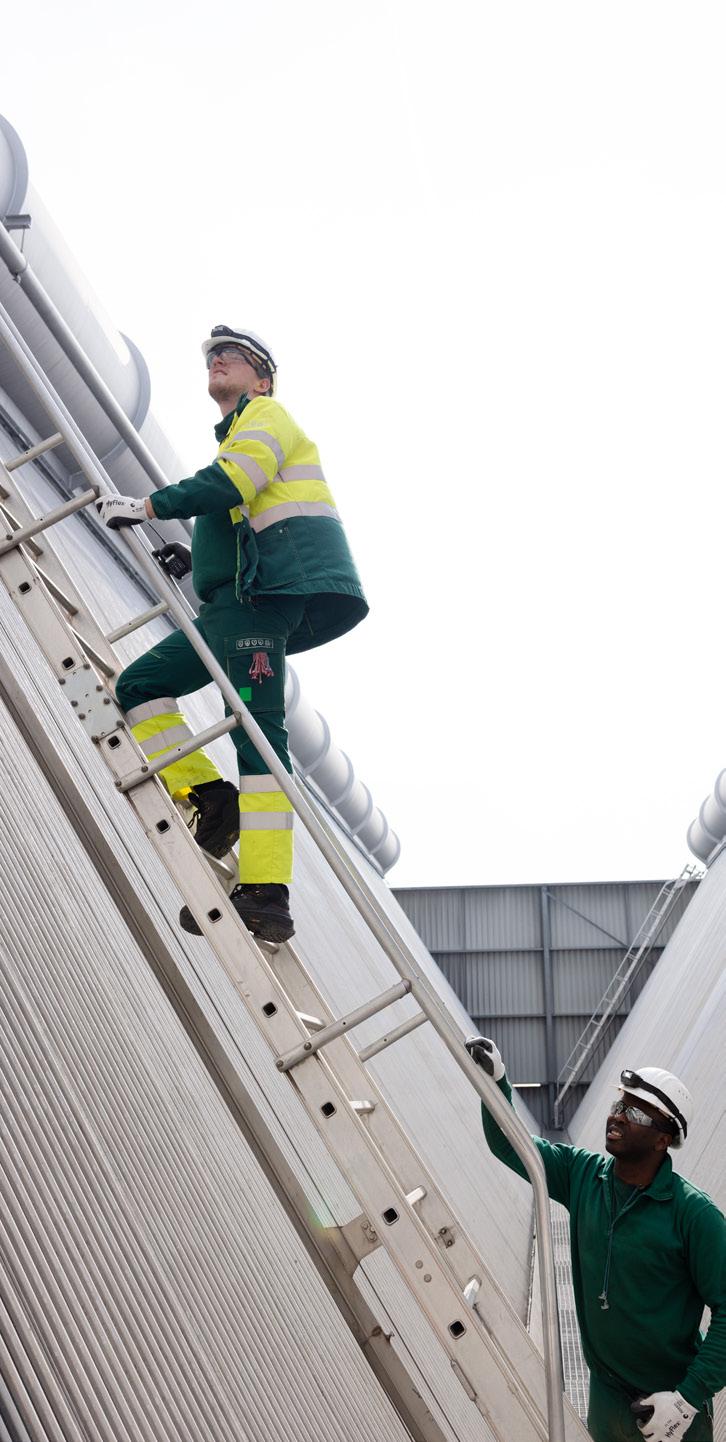
Indaver: 40 years of experience in 10 codes of conduct
Doing business responsibly means making responsible choices about how to deal with waste. That is why we have drawn up 10 Codes, which we update regularly to respond to current developments.
We follow the regulations in legislation
Code 1
Indaver applies a correct and strict interpretation of the definition of waste, as prescribed in EU legislation.
Code 2
Indaver works with facilities that comply with the legal rules.
We always act with care and attention
Code 3
Indaver does not allow the dilution of contaminants.
Code 4
Indaver only allows waste export if the local treatment meets our standards.
Code 5
Indaver only recovers materials and energy when there is real value creation, and when we do more good than harm with it.
We stand for quality and safety
Code 6
Indaver encourages the separation of waste at source.
Code 7
Indaver only processes contaminated waste in state-of-the-art facilities that use Best Available Techniques.
Code 8
Indaver eliminates hazardous components from material and energy cycles.
We offer full transparency
Code 9
Indaver is committed to the correct analysis and classification of waste.
Code 10
Indaver offers full transparency and traceability in the waste chain.
Our projects and initiatives in 2024
Start-up screening of suppliers
To live up to our ethical business practices, it is crucial that we engage with suppliers who share our values. In 2024, we took the decision to conduct an annual survey to assess how our suppliers are performing on the various sustainability themes we list in our Supplier Code of Conduct.
When?
We will send out our first surveys in 2025 (and in Germany from 2026).
Which suppliers?
We will start with strategic suppliers (more than 200,000 euros in turnover) and expand later.
Which topics will we question?
We will start with the most relevant topics, such as climate action and human rights, and expand later.
In this first survey, we mainly want to get a global picture of the policy of our suppliers on the basis of yes-no questions. In the coming years, we will ask more questions. For example, in 2026 we will be sounding out concrete targets and action plans. After that, we will also ask about control mechanisms and audits.
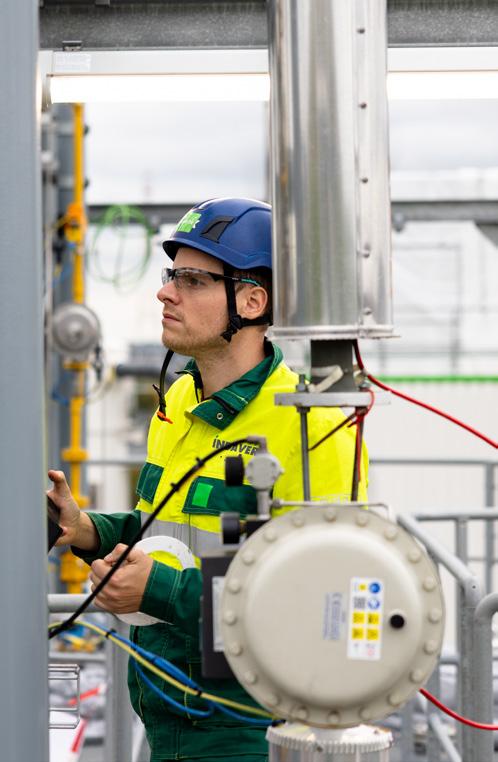
Policy documents
Our policy documents are updated on average every two years and can be consulted on our website.
Artificial Intelligence (AI)
Indaver embraces AI as the technology will help us to provide an even more valuable service to customers. Through a policy document on responsible and ethical use, we will point out to employees the opportunities and risks, such as dealing with confidential information. The document also contains practical tips.
Competition
Indaver wants to compete openly, fairly and vigorously, in line with the rules of free competition. Our policy document and online training courses inform our employees as to what competition entails, what the possible bottlenecks are, and how to deal with them. We also set high ethical standards of conduct for our suppliers and partners.
Competition Compliance Policy
Modern slavery and human trafficking
We have a zero-tolerance policy in this area. Our policy document ensures, among other things, that all work permits and other documents for our employees are drawn up in accordance with our commitment to prevent modern slavery and human trafficking, and we expect the same commitment from our suppliers.
Modern Slavery and Human Trafficking Statement Diversity and inclusion
Our Diversity, Equity and Inclusion (DEI) Policy clarifies what diversity, equity and inclusion mean for the organisation. It also sets out our ambitions in this regard, including the priorities and actions needed to achieve those ambitions.
Although all dimensions of DEI are important to us, we focus primarily on:
Cultural and international diversity
Recognition and inclusion of all generations in the workplace
Equal pay for equal work
Information security
How do we comply with GDPR, what measures do we take to increase our cyber resilience, why do we use the NIS Cybersecurity Framework as a basis, and who at Indaver is responsible for information security and cybersecurity? That’s all contained in our Information Security Policy.
Bribery and corruption
Our Anti-Bribery & Anti-Corruption (ABC) Policy describes the standards and expected behaviour to prevent bribery and corruption in our operations, business lines and operations. The document provides a framework for responsible, fair and equitable business behaviour, and applies to all persons working for Indaver.
ABC Policy
Whistleblowing
We want to create a culture where employees can confidently report breaches of our company code and other policy documents to their supervisor. If an employee does not feel comfortable with this, the report can also be made anonymously. Our Whistleblower Policy offers optimal protection to the reporter and follow-up of the report.
Other stakeholders can also use our whistleblower reporting channel, including former employees, suppliers, contractors, volunteers, interns, and so on.
Other policy documents
Biodiversity Policy (more on biodiversity on p. 99)
Carbon Management Plan
Group HR Policy
QESH Policy
QESH Technical Competence Policy
Sustainable Waste Management Policy
You can view the documents via this link.
DEI Policy
Whistleblower Policy
Information Security Policy
Data privacy and information security
Why important?
Digital technologies are becoming increasingly important to Indaver. They offer plenty of opportunities and make our services better. On the other hand, far-reaching digitisation can expose us to cyber threats. Online resilience was therefore a key priority in 2024, and that will continue to be the case in the years to come. Customers, employees and other stakeholders must be able to trust that their personal and sensitive data are safe with Indaver.
Information security also plays a major role in the continuity of our business activities, as does the protection of our own data. For example, an unwanted downtime can lead to serious reputational damage and high costs. Fortunately, companies can count on new tools, best practices and standards for data privacy and cybersecurity today. We are fully committed to that.


Our objectives and approach
Prevention is better than cure. That’s our key approach. We achieve this through an extensive Information Security Policy that is in line with the recent Network & Information Security Directive (NIS 2). This policy includes awareness campaigns, targeted training and preventive measures to optimally manage cyber assets such as financial information, intellectual property and employee data.
Our Information Security Policy is an up-to-date policy document for the entire group. This sets out how we strive for an organisation in which people, processes and technology are in balance.
To achieve our objectives, we rely heavily on a standardised information security management system. This allows us to continuously improve and align with the requirements of the international standard ISO/IEC 27001. In 2026, we will aim for certification for ISO/IEC 27001.
Well-prepared: our business continuity plan
If a crisis situation does occur unexpectedly, Indaver has a plan in place to allow us to
continue operating without access to ICT infrastructure and systems. This plan details, among other things, responsibilities and means of communication in such an event.
People
Training & awareness
Professional skills and qualifications
Appropriate resources
We want to make our people aware of information security. We give them all the necessary tools to develop skills that allow us to better protect Indaver and the information we hold.
Process
Management systems
Governance models Best practice IT audit
This includes rolling out mechanisms to achieve our data privacy and cybersecurity goals, while also putting processes into monitoring our performance.
Technology
Implementing technology requires competent people and strong support processes.
Technology includes products and solutions to protect our systems and data.
Our projects and initiatives in 2024
New ERP system in the making
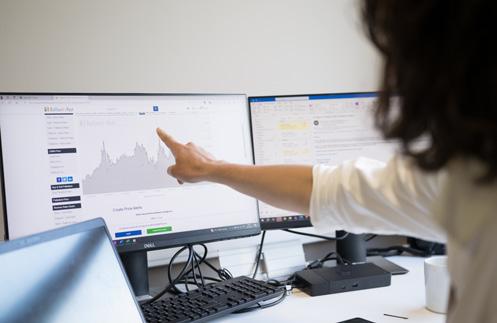
Indaver is in the process of transitioning to SAP S/4HANA, a new ERP system that will offer numerous benefits, such as faster processing times, better user experiences, improved data integration and increased cyber resilience.
In 2024, the first phase of the transition was successfully completed: the design phase. In it, we streamlined processes within well-defined subgroups and regions. Although we would like
to stay close to the SAP S/4HANA standard with the new ERP system for the sake of more efficient development and maintenance, we want the system to take maximum account of our Indaver-specific processes. A certain degree of ‘personalisation’ is therefore essential.
The next phase followed at the beginning of 2025: the construction of the new system, as well as the creation of a manual for future SAP S/4HANA users. At the same time, we are working on an action and communication plan to optimally guide employees during and after the launch. Training and proactive support will play a major role in this.
Training to build strong defences
In addition to securing our systems via our IT department, the human factor is crucial in cybersecurity. That is why we continue to keep our employees alert to phishing and other risks. From 2025 onwards, we will shift up a gear with the training courses and, above all, generating greater awareness. The goal: to make our employees our strongest defence against cyberattacks.
Dedicated team ensures business continuity
Indaver has an in-house specialised team for cybersecurity and data privacy. They ensure that sufficient measures are being taken to properly protect sensitive data and systems, for example by drawing up, updating and monitoring our security policy. In this way, the team guarantees that Indaver can continue to fulfil its essential social role.
Further professionalisation of data management
SAP S/4HANA: Better security and compliance
The ERP system helps ensure the privacy and protection of sensitive data, supports audit and regulatory requirements, strengthens identity and access management, improves threat detection and response, supports collaborative security operations, and much more.
“In the design phase, we determined the principles of the system for the next 15 years, as well as its success. IT and our external advisory partner did not do this alone. About 200 colleagues from all countries and business lines thought about the conditions that our new ERP system must meet.”
Nathalie Vasseur, IT Manager
In 2024, we chose to transfer our own data centre to a third party in order to professionalise it further. The third-party centre guarantees active follow-up around-the-clock and can therefore intervene quickly in the event of irregularities.
CSRD benchmark

